The more you are around different birders, the more enlightened you become about various opportunities not far from home. Thanks to a birding friend, who shall rename nameless in this post, I learned that it was possible to see both Whooping Cranes and Kirtland’s Warblers just 5 hours and change from my house in next door Wisconsin. I’ll explain more at the end of the post why I’m keeping my friend anonymous, but he or she knows who he/she is. And that he/she is pretty awesome. 🙂
So on June 12th, Evan, Tommy, and I embarked on an overnight trip to central Wisconsin to go after these two birds which would obviously be lifers for all of us. Our first destination in Wisconsin was Necedah National Wildlife Refuge to look for the Whooping Crane. Whooping Cranes can be found in several places in Wisconsin, but we were told Necedah had good numbers, therefore making it the best spot to try. By good numbers, I’m talking about no more than a dozen birds as there are only 300+ Whoopers in the world today.
As we drove through forests upon entering Necedah, we were somewhat baffled that Cranes live here. However, almost immediately we spied a road that seemed to go toward an open, marshy area. So we took it. A minute later, I spotted the first Whooping Crane for our group. Cool! It was pretty far out, but even still we could see just how massive it was.
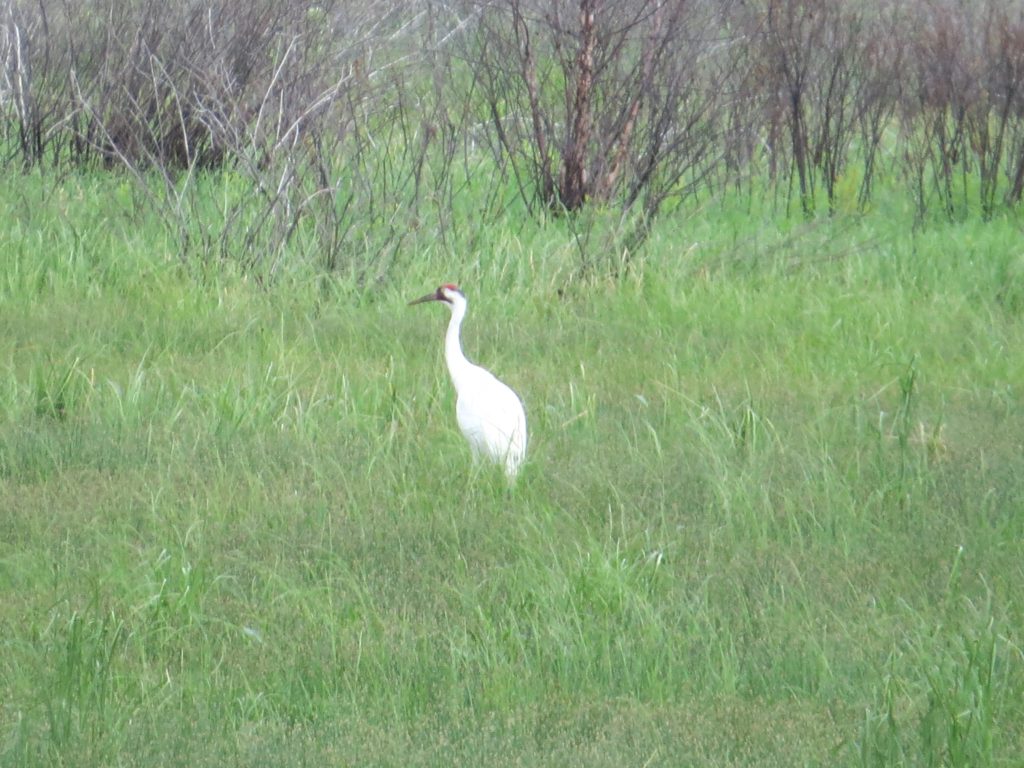 The three of us got out of the car to enjoy this easy lifer. Then I looked back toward the vehicle and spied a second bird in a waterway that had been hidden by some trees. This one was much closer to the road and gave us some great photo ops.
The three of us got out of the car to enjoy this easy lifer. Then I looked back toward the vehicle and spied a second bird in a waterway that had been hidden by some trees. This one was much closer to the road and gave us some great photo ops.
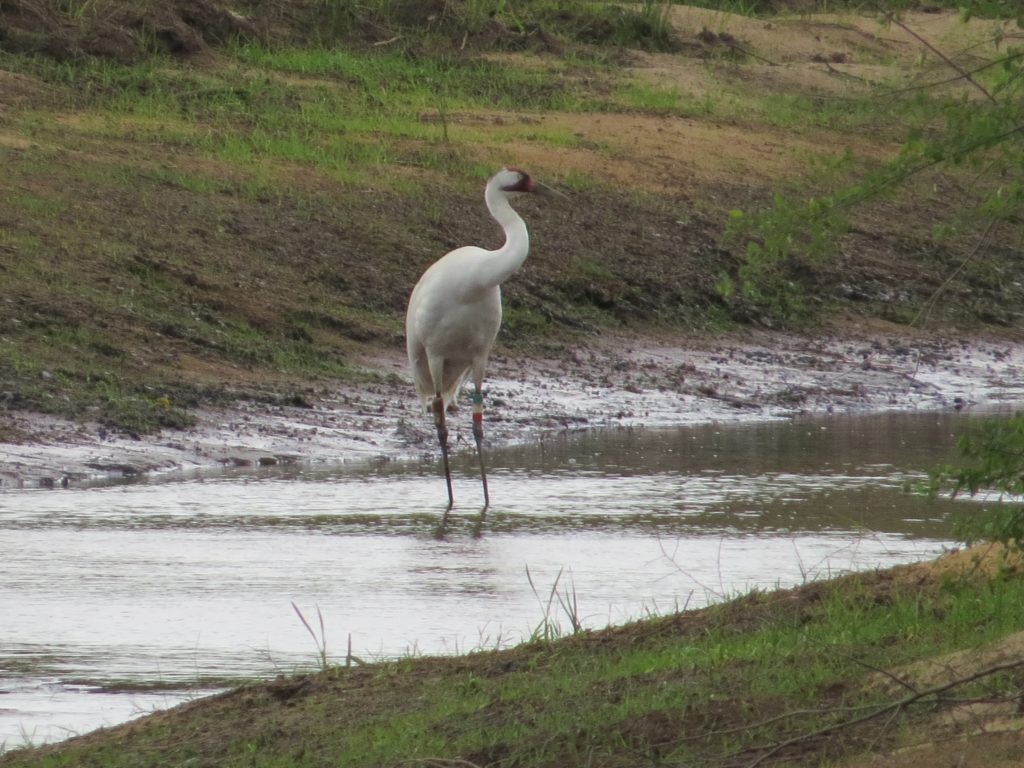
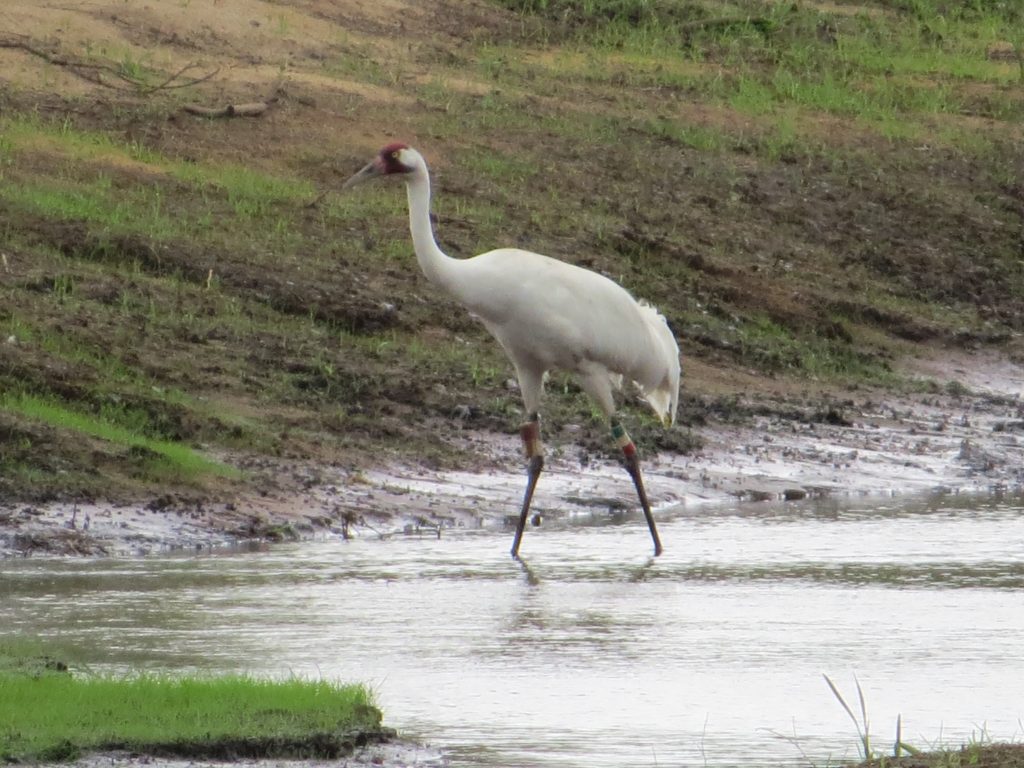
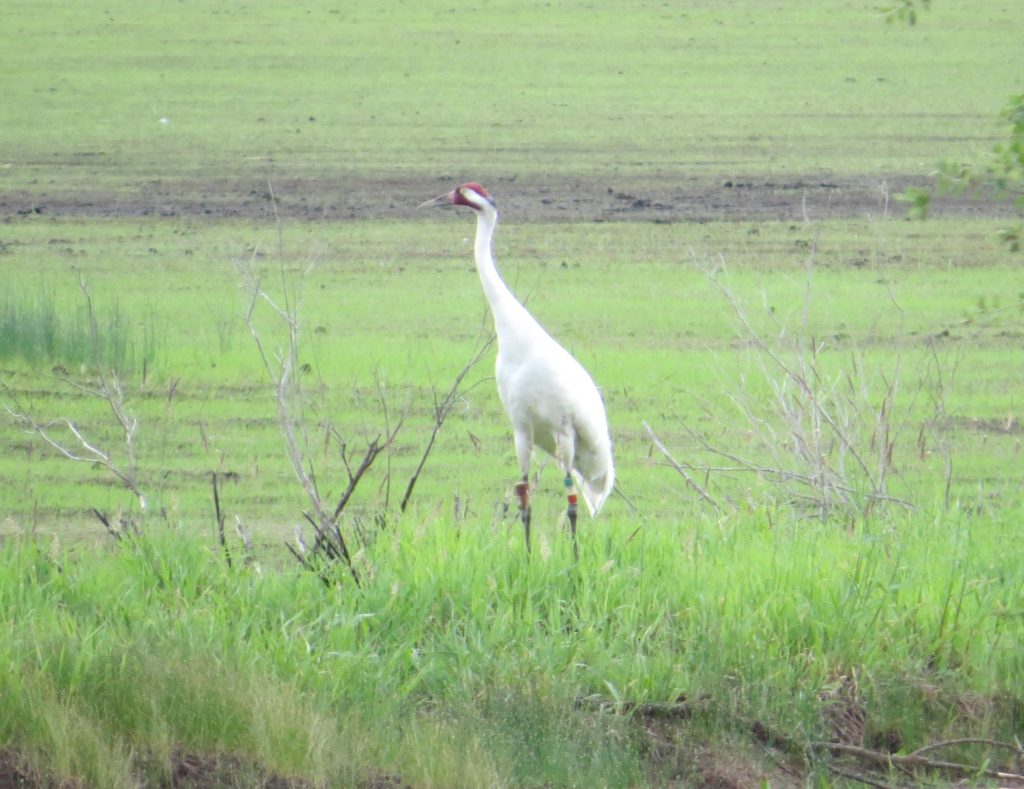 As we watched this Crane, something special happened. This one threw back its head and bugled for us! It was the loudest and coolest thing I’ve ever heard come out of a bird. It sounded kind of like a Trumpeter Swan, only much more impressive. Speaking of impressive, this bird stands at 52″ tall before it does this. That’s roughly the same height as Evan.
As we watched this Crane, something special happened. This one threw back its head and bugled for us! It was the loudest and coolest thing I’ve ever heard come out of a bird. It sounded kind of like a Trumpeter Swan, only much more impressive. Speaking of impressive, this bird stands at 52″ tall before it does this. That’s roughly the same height as Evan.
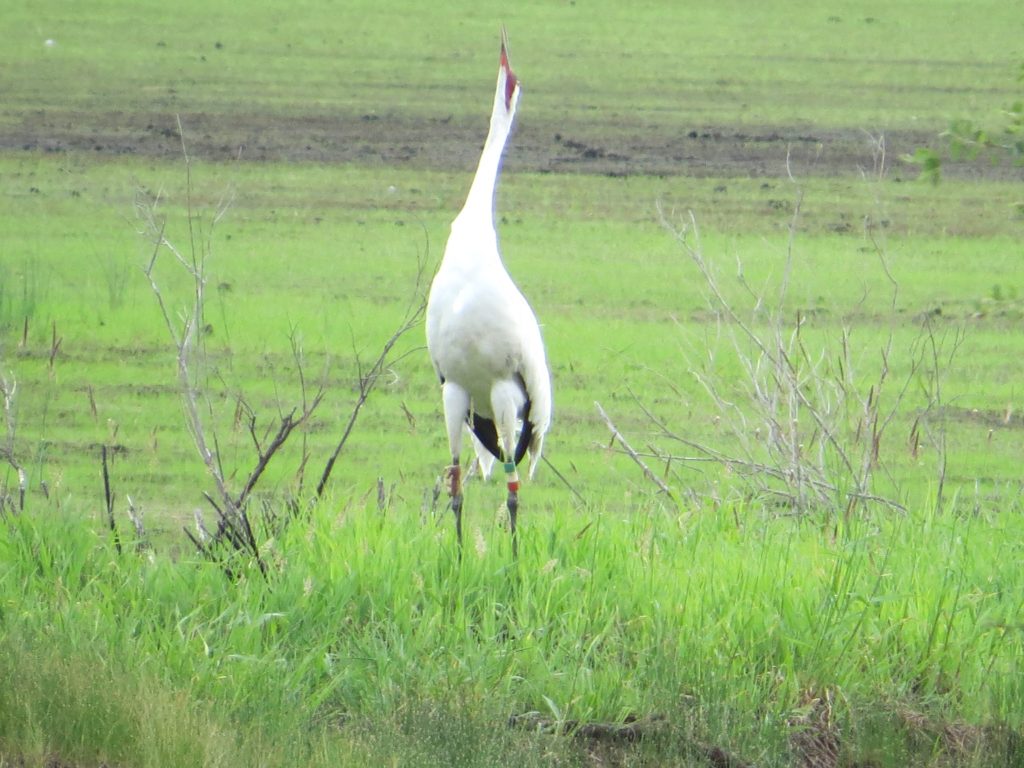
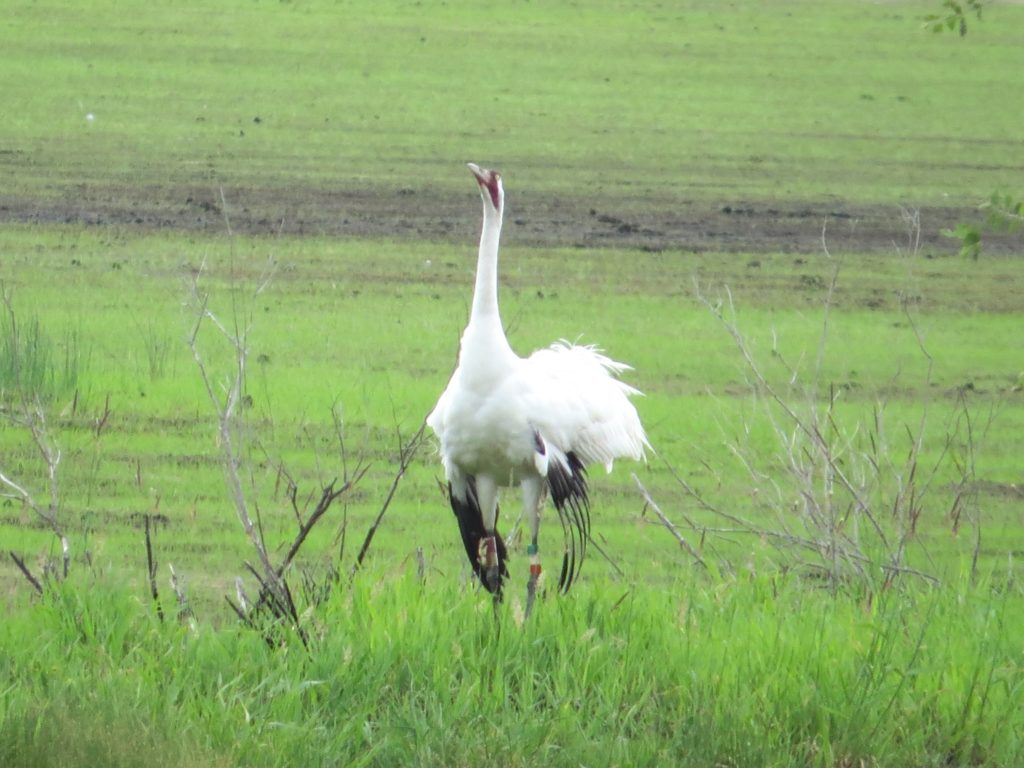 The three of us really enjoyed watching these birds.
The three of us really enjoyed watching these birds.
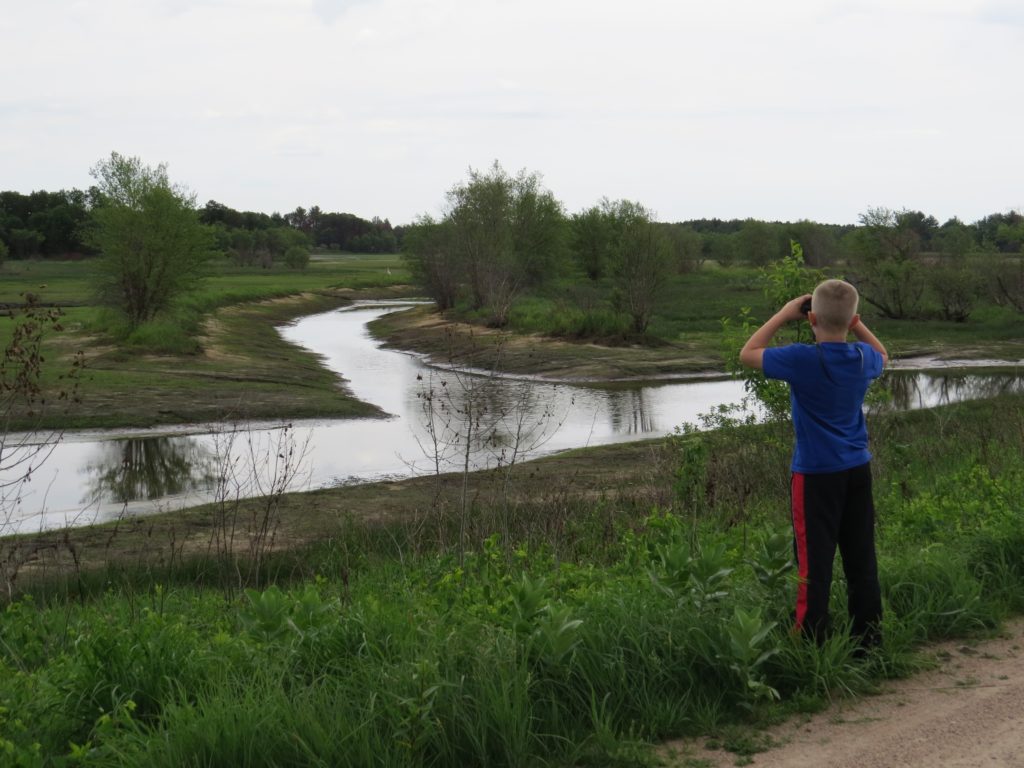 Here are Evan and Tommy each observing a different Crane. The one Tommy is looking at is visible in the photo. Evan is looking at the first one we found.
Here are Evan and Tommy each observing a different Crane. The one Tommy is looking at is visible in the photo. Evan is looking at the first one we found.
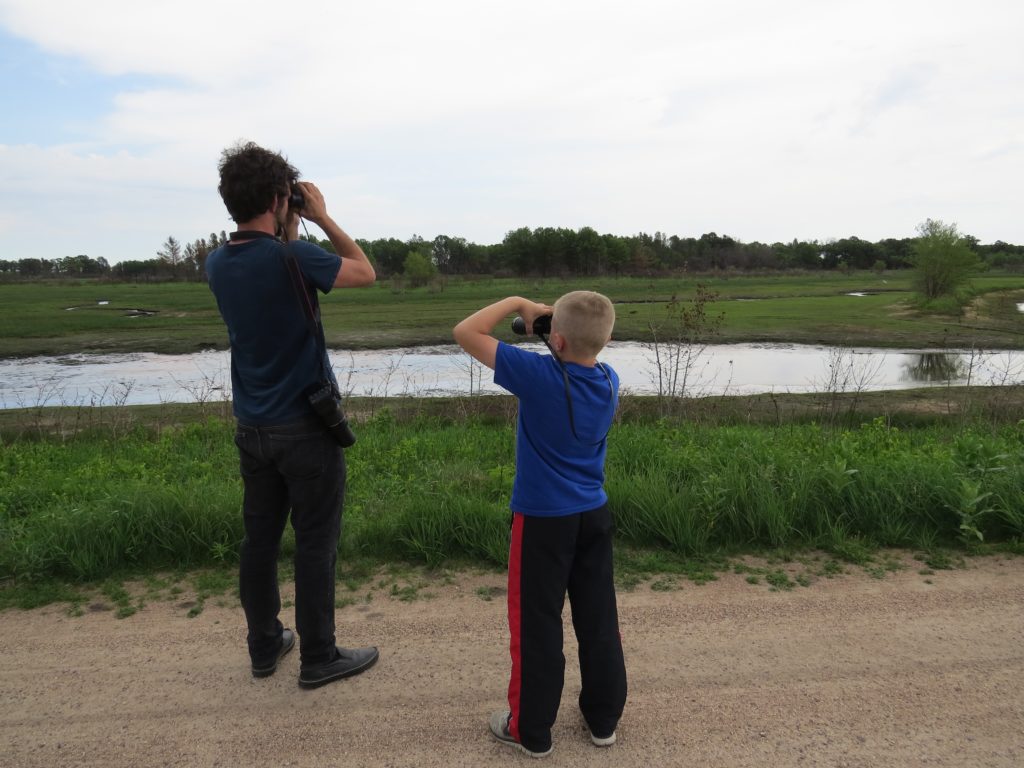
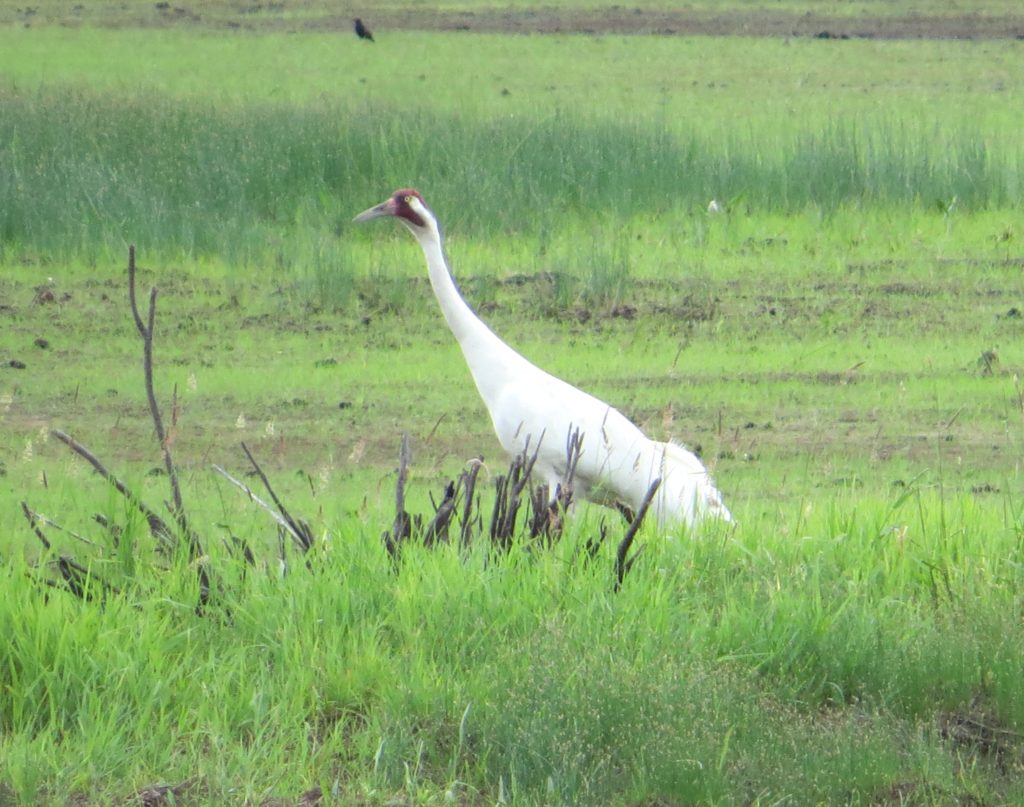 The Whooping Crane is one massive bird:
The Whooping Crane is one massive bird:
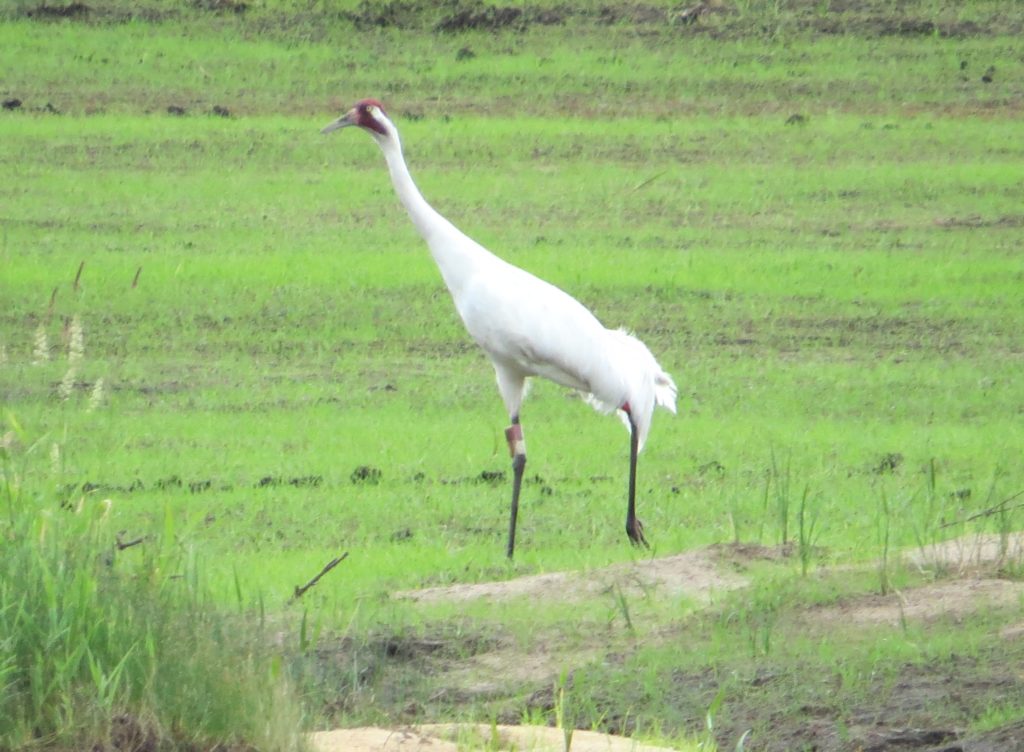 This cooperative bird eventually flew off and joined the much more distant Whooper. So the three of us decided to keep exploring Necedah. Necedah ended up being a phenomenal birding spot, so much so that I will save the rest for a different post and just focus on the Cranes from there in this post. I’ll just say that Necedah plays host to some other beautiful birds, who are also struggling in numbers.
This cooperative bird eventually flew off and joined the much more distant Whooper. So the three of us decided to keep exploring Necedah. Necedah ended up being a phenomenal birding spot, so much so that I will save the rest for a different post and just focus on the Cranes from there in this post. I’ll just say that Necedah plays host to some other beautiful birds, who are also struggling in numbers.
One of our stops at Necedah was the Visitors Center which is another great place to see Whoopers, even if it is from a distance. Here we saw two more. These birds were a long ways away. It just goes to show how big and how white these things are. Impressive doesn’t begin to describe it.
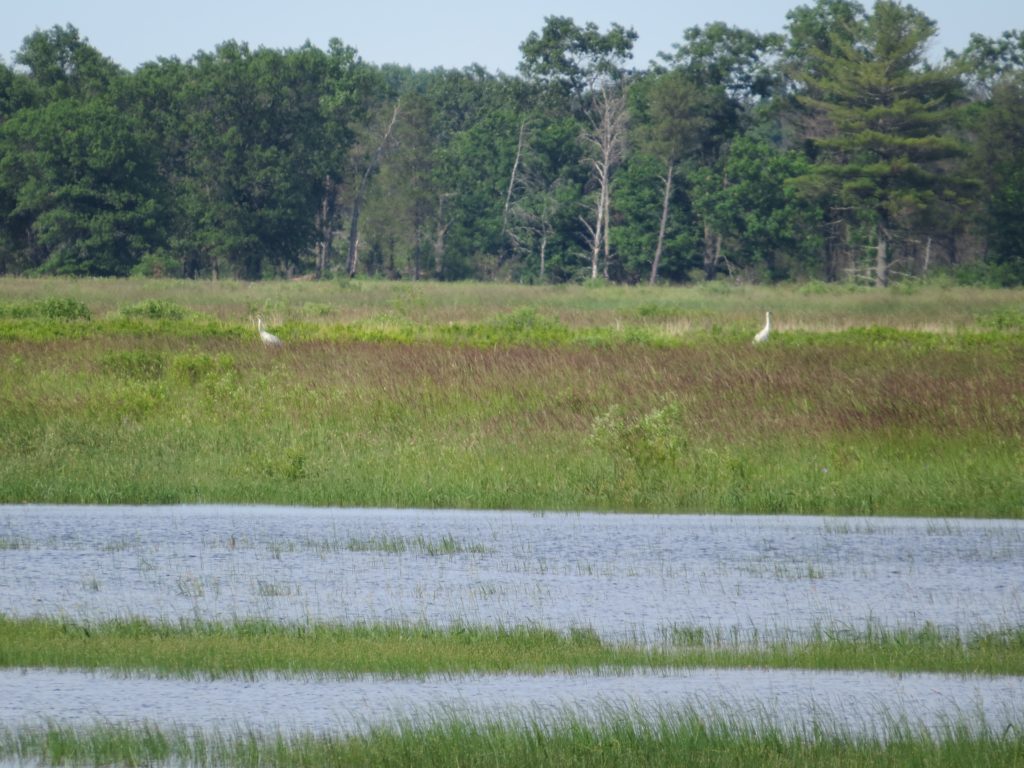 The Visitors Center also allowed us a humorous reprieve from the serious birding with some clowning around and a photo op.
The Visitors Center also allowed us a humorous reprieve from the serious birding with some clowning around and a photo op.
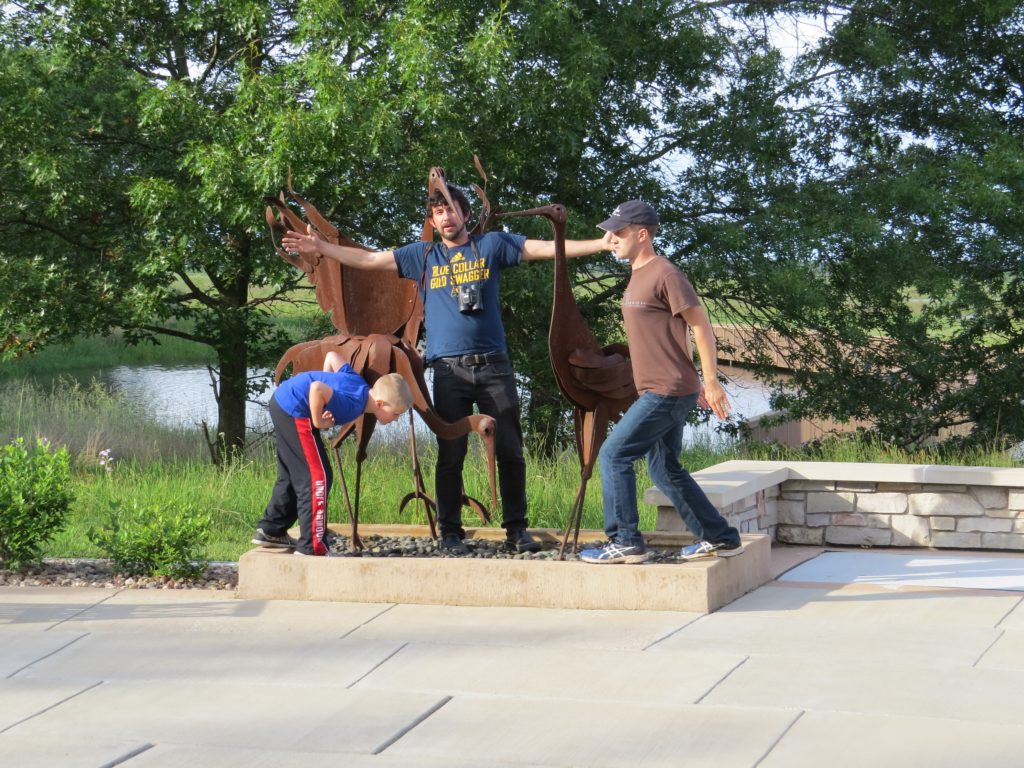 As I was monkeying with the settings for the self-timer on my camera, I ended up getting this gem on accident.
As I was monkeying with the settings for the self-timer on my camera, I ended up getting this gem on accident.
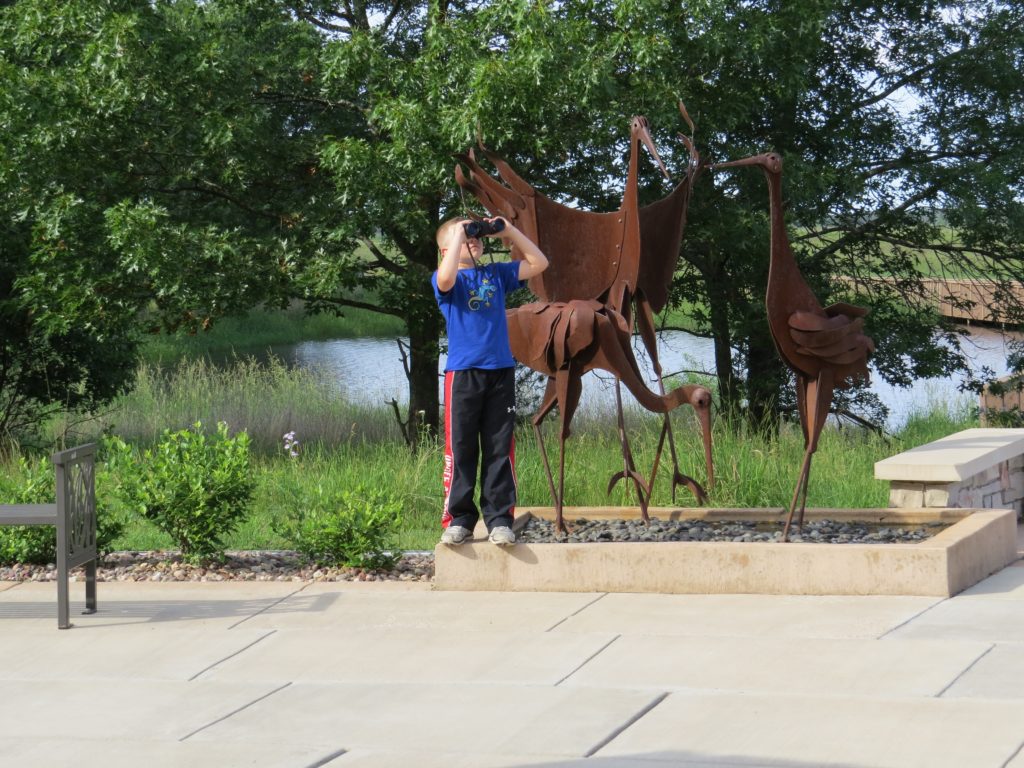
“Where are the Whoopers?”
Now we move on to Part Two of the endangered species search which occurred the very next morning, the hunt for the Kirtland’s Warbler. This post is bittersweet for me, sweet because we had smashing success with the Whooper, bitter because the Kirtland’s encounter was mediocre. I suppose, though, that “bittersweet” is how you would describe any endangered species sighting–a thrill to see such a bird only to be tempered with the knowledge of how few of them there are.
Anyway, thanks to my previously mentioned birding friend, we had a good idea of where to look for the now regularly established Adams County population of Kirtland’s Warblers. Joining us were Arizona birding friends Gordon Karre and Chris Rohrer who were also in Wisconsin for some birding. So just how good was the spot we were in? Well, when you are standing on a public road and get interrogated by two separate KIWA nest monitors AND a WDNR conservation officer, you know you are in the hot zone. Let me tell you that Wisconsin is all about protecting this bird, of which there are only a few dozen in the state. The bulk of Kirtland’s Warblers (maybe 4,000 birds) reside in the Grayling, Michigan area. That is where most birders eventually go to get their lifer. After license plate numbers were taken down and we were pre-warned (even without doing anything wrong) while standing on a public road, we dared not do anything immoral or illegal, lest some black helicopters would appear from the horizon to take us away to some secret government prison. Those Warblers are safer than any government secret; not even Ft. Knox is so well guarded. Humor aside, the nest monitors and conservation officer were friendly and courteous, but stern. We could tell that the nest monitors wanted to help us out further, but they were very honorable in their actions and did not compromise whatever solemn vow they took for the WDNR not to disclose any information. And full disclosure here: my birding friend is not one of the KIWA project volunteers; this site is well known to inner-circle birders of central Wisconsin. I will not be disclosing this person’s name or where we were searching in Adams County so as to not get this person in any kind of trouble. We were very grateful for that person’s help.
So did we see it? No, we did not despite trying for several hours. We did get to hear one very close to the road. However, its vocalizations were very infrequent, and it never did pop up to the top of one of the Pines to sing. Regardless, it was neat to be in the proximity of one and hear its loud, distinctive song. There is a Kirtland’s Warbler somewhere in the trees in this photo.
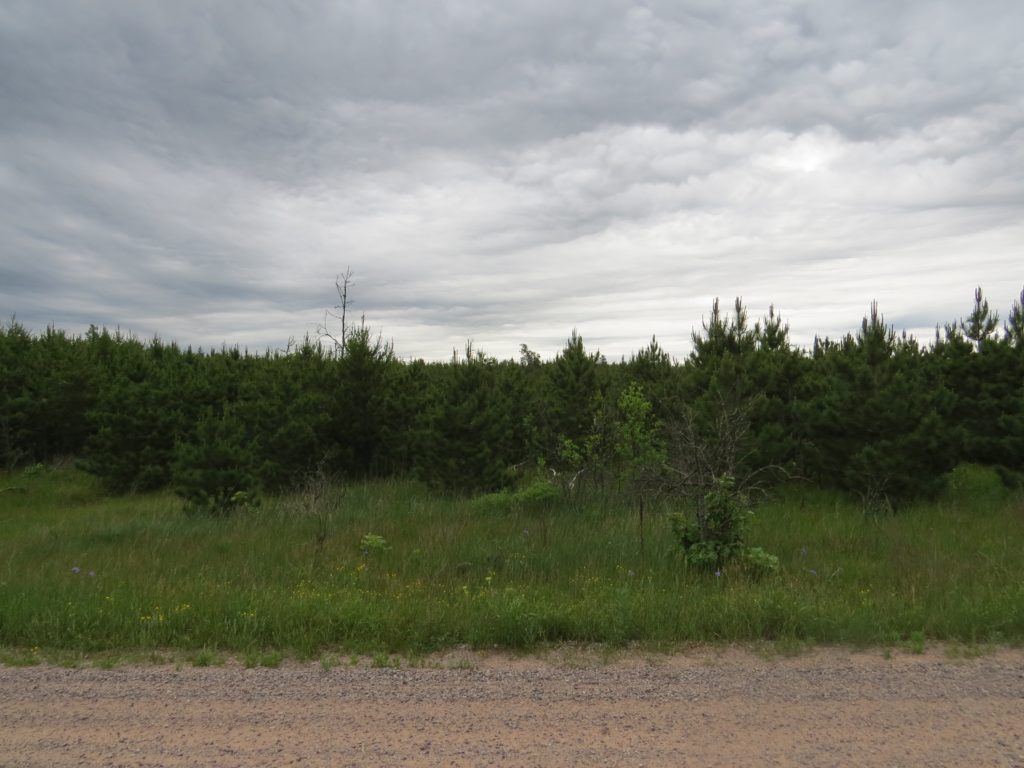
The Kirtland’s Warbler is an interesting species in that it has very specific habitat requirements, mostly large stands of Jack Pine that are about 10 feet tall and have some grassy space in between. Once the trees get taller than that, the Kirtland’s do not use that area anymore. Further complicating this is that Jack Pine cones only open in fire, so keeping appropriate habitat available for this bird is quite the complicated management process involving logging and/or controlled burns. What was cool about the Wisconsin Kirtland’s is that they have adapted to using stands of Red Pines with a mix of some Jack Pine. Because Red Pines are used in the lumber industry, Red Pine forests occur in many areas and are regenerated through normal human activity thus creating stands of trees that are the right height for this bird. What’s neat is that these Warblers are on private land that is owned by a lumber company that is working cooperatively with state and federal government agencies to ensure these Warblers have suitable habitat for several decades to come. Cool, huh?
So we ended up being 1.5 for 2 on our search for two endangered species that call Wisconsin home. It was good to see Gordon again (we’ve now birded together in three states!) and to finally get my Chris Rohrer lifer (a vagrant sighting even!). Those guys tried again for the Kirtland’s the next morning and had tremendous success, getting killer looks and photos. Even though Tommy, Evan, and I didn’t win the entire lottery, it was no doubt a fun, successful trip. Like all good trips, though, it left us wanting more. Wisconsin, we will be back!
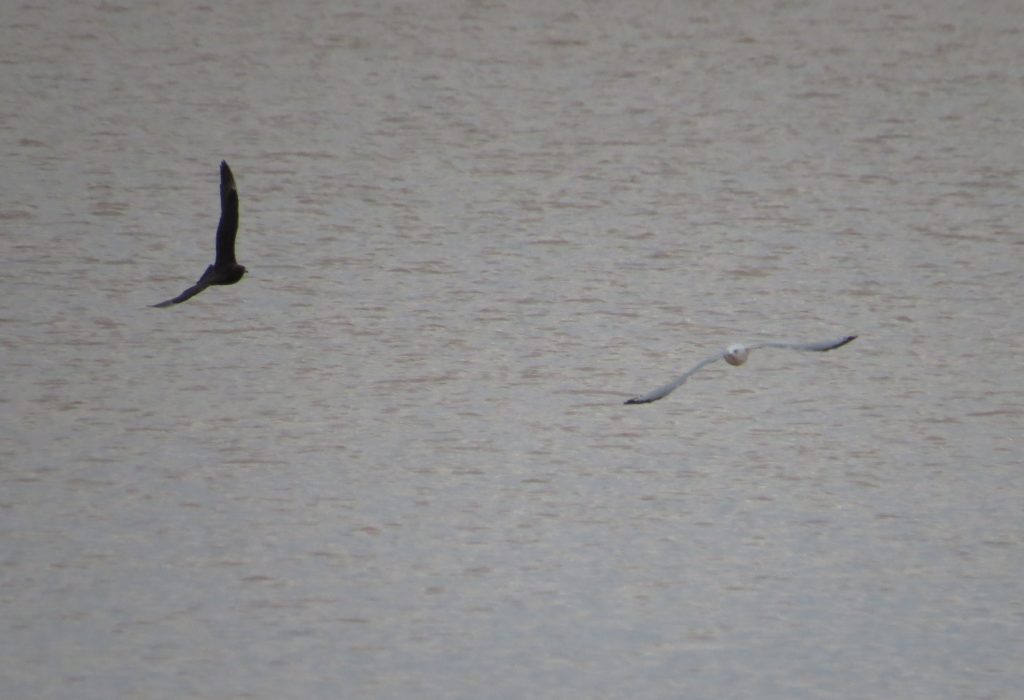
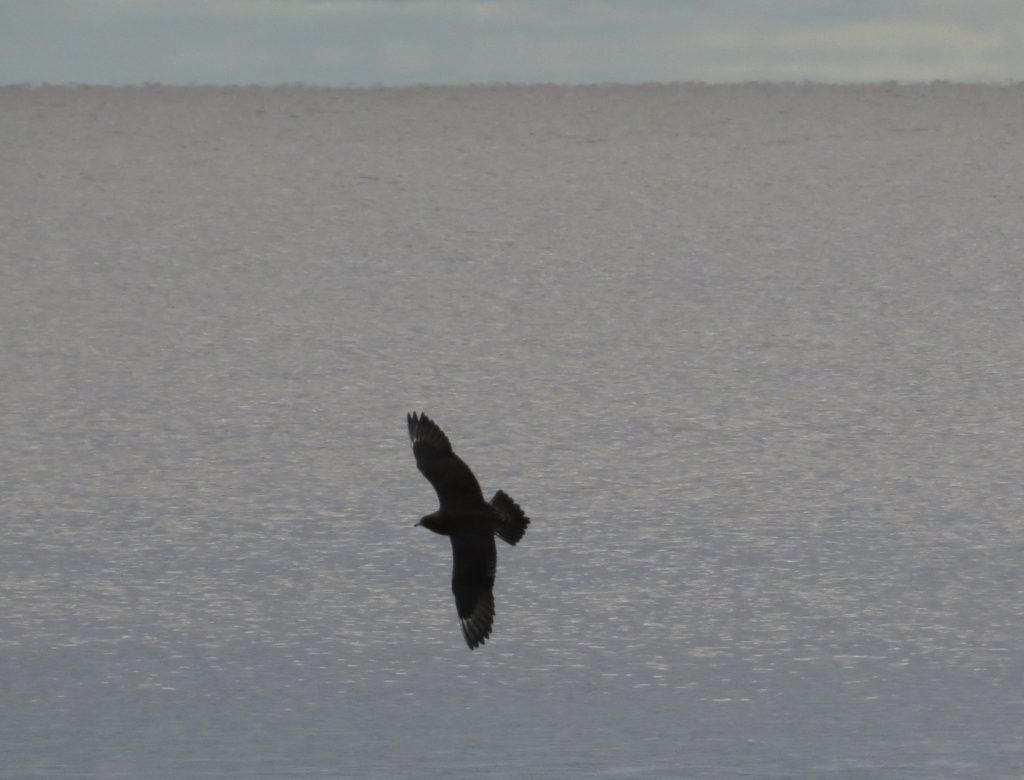
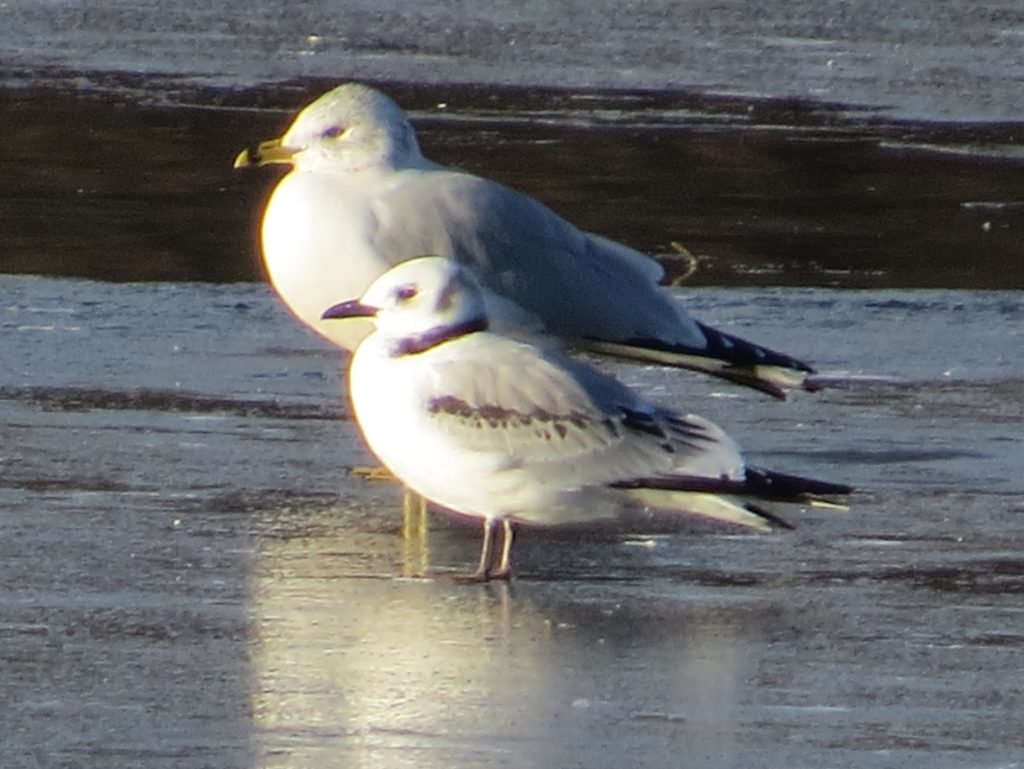
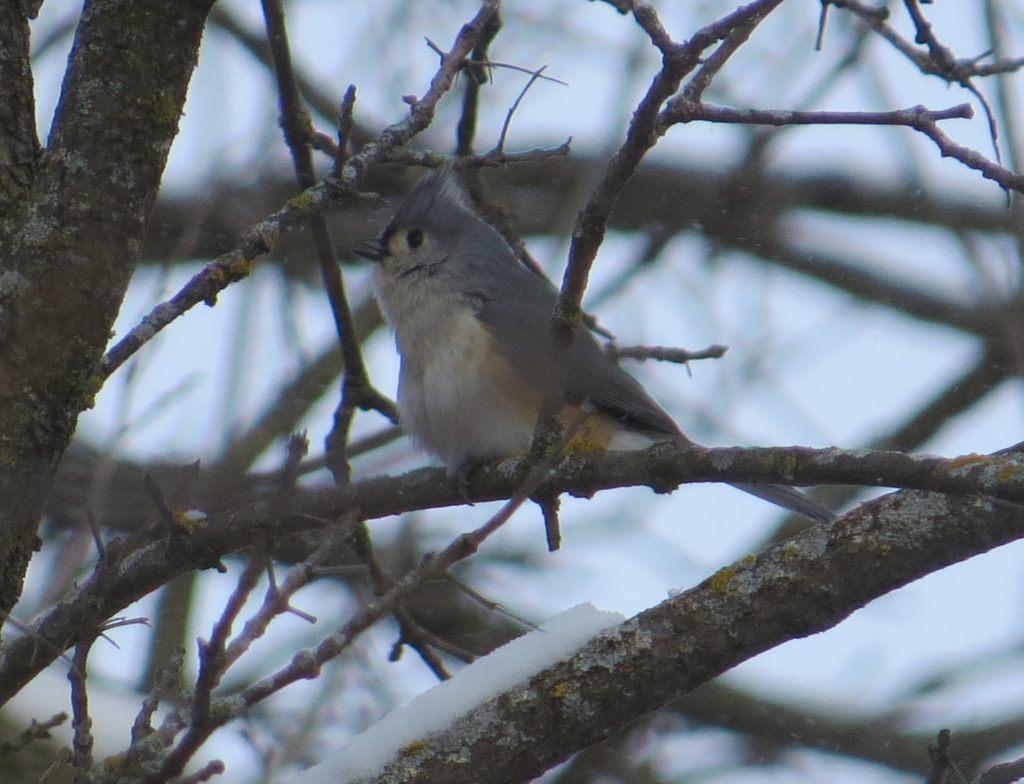

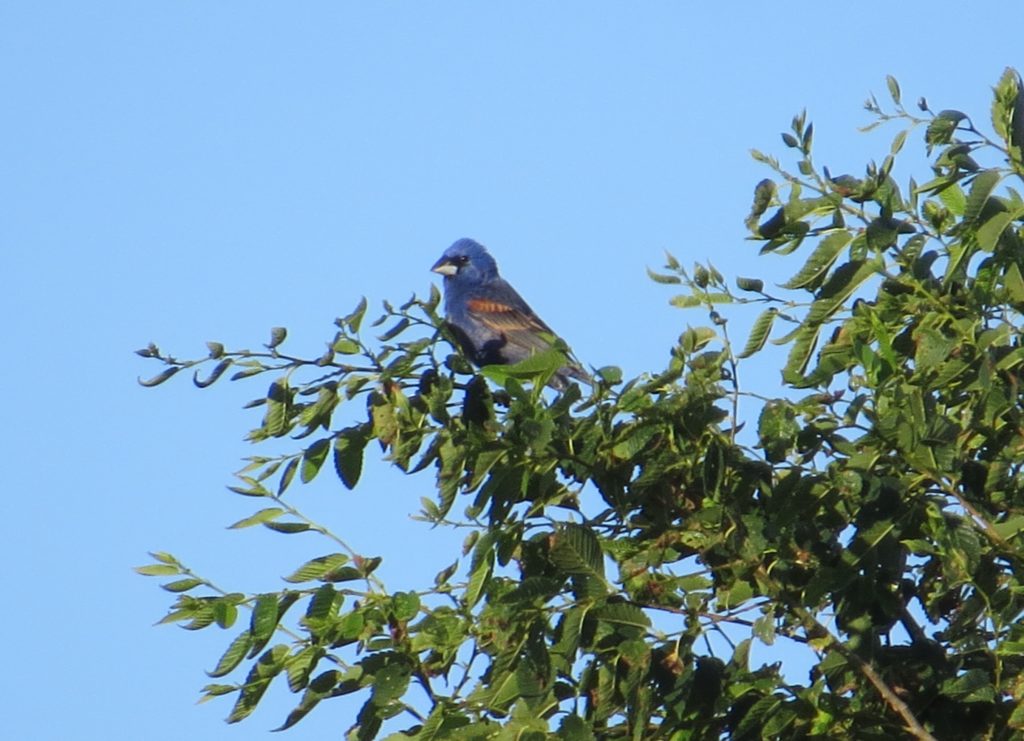 This second fellow was the quiet type. In fact, I stopped at this abandoned pit and didn’t see or hear a Blue Grosbeak. Playing a tape certainly couldn’t hurt in this situation. I’m glad I did because this bird materialized out of nowhere in an instant.
This second fellow was the quiet type. In fact, I stopped at this abandoned pit and didn’t see or hear a Blue Grosbeak. Playing a tape certainly couldn’t hurt in this situation. I’m glad I did because this bird materialized out of nowhere in an instant.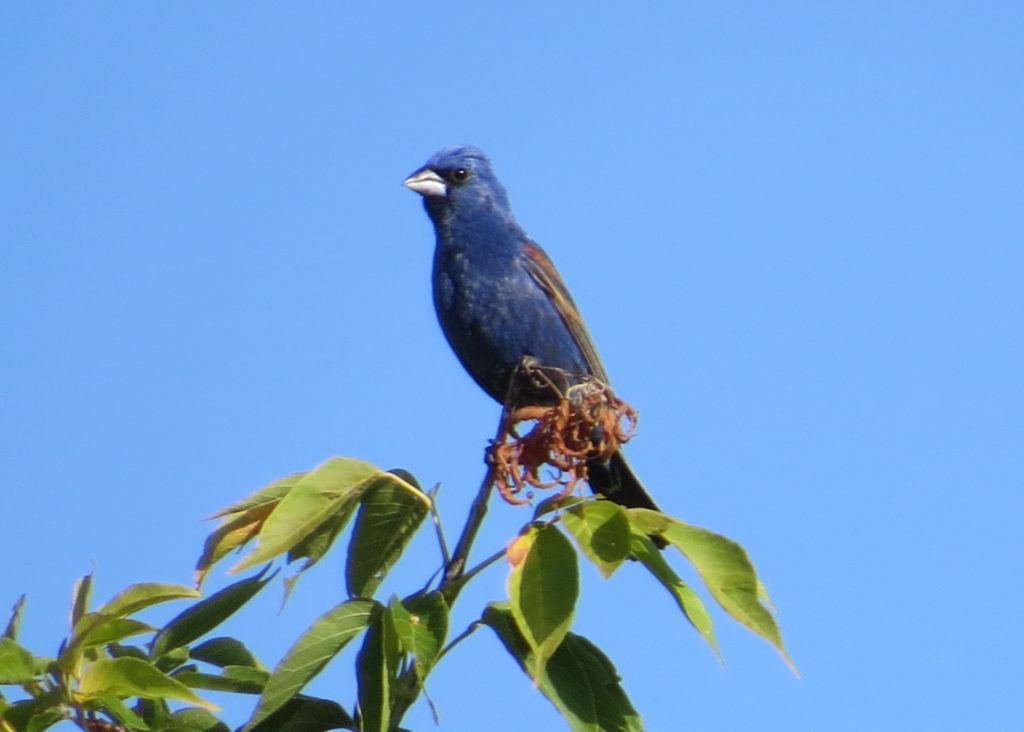 These were hollow victories. I wanted one in Kandiyohi in the worst way, especially as county first records fell in county after county: Anoka, Hennepin, and Washington. While I was happy the Blue Grosbeak was continuing to expand its range, I also kept wondering when it would be our turn. Always the bridesmaid. The Washington find really amplified these feelings. Pete Nichols and Ben Douglas set out to find themselves a county record BLGR and succeeded…minutes into their first attempt. I was both super proud and super jealous of these friends.
These were hollow victories. I wanted one in Kandiyohi in the worst way, especially as county first records fell in county after county: Anoka, Hennepin, and Washington. While I was happy the Blue Grosbeak was continuing to expand its range, I also kept wondering when it would be our turn. Always the bridesmaid. The Washington find really amplified these feelings. Pete Nichols and Ben Douglas set out to find themselves a county record BLGR and succeeded…minutes into their first attempt. I was both super proud and super jealous of these friends.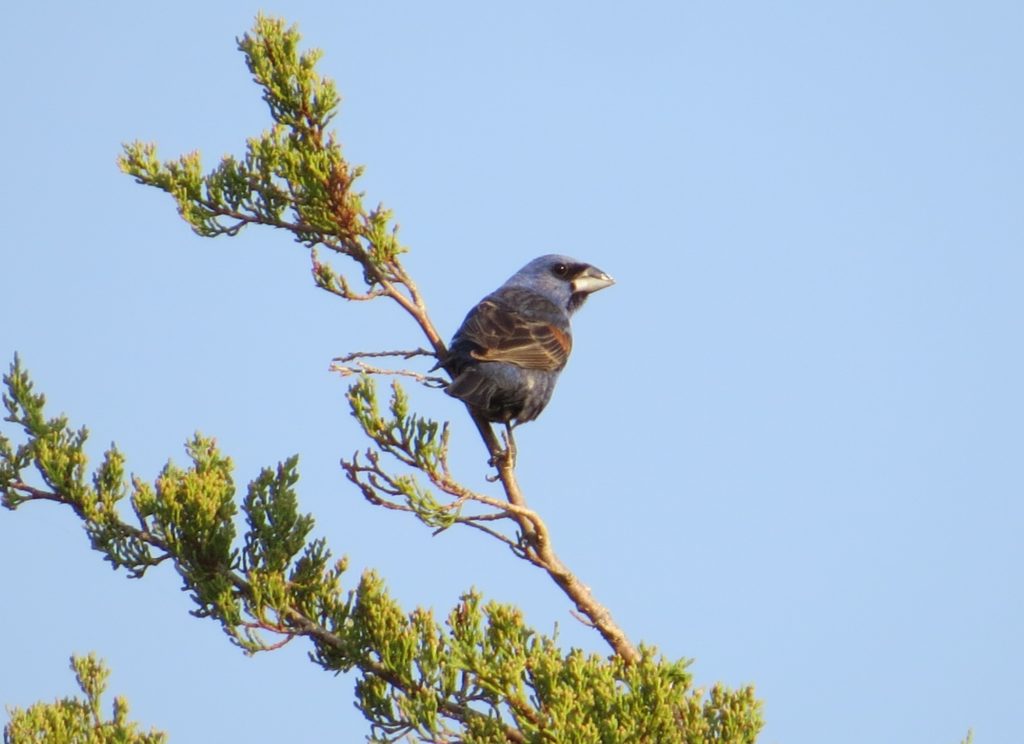
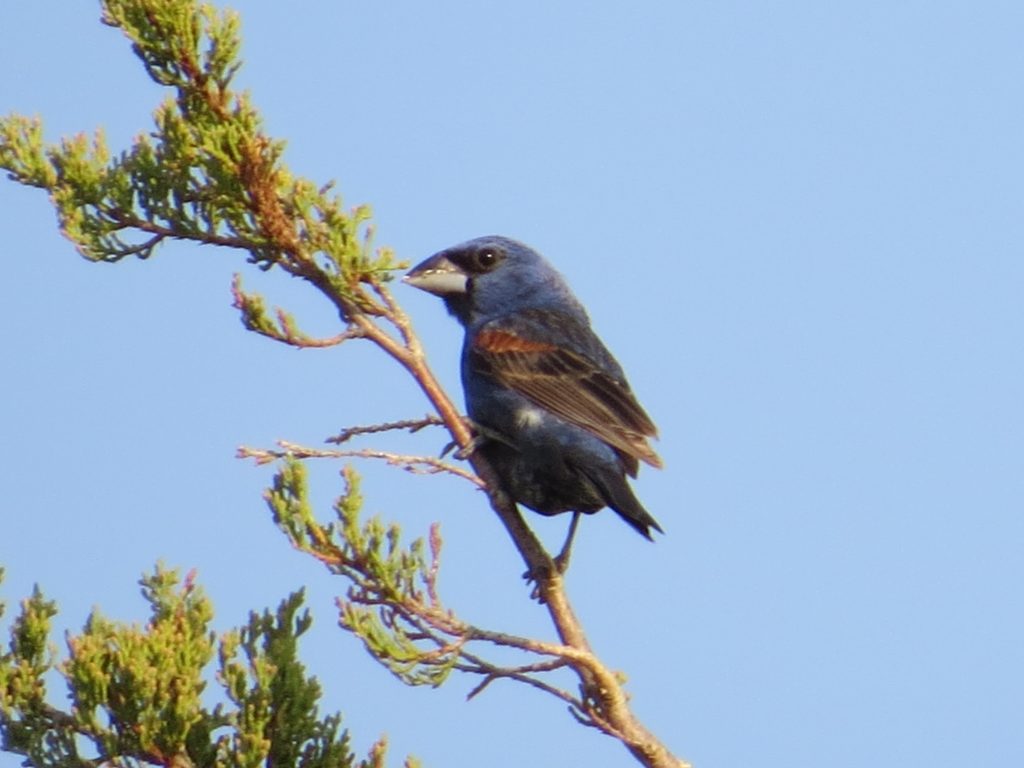 After hanging out there to our wild delight, it changed perches and hung out for a solid 10-15 minutes not moving. I don’t know that I’ve ever seen a Blue Grosbeak this confiding. This was the first time I had shared a county bird with long-time Kandi veterans, Randy and Ron. Giddiness abounded.
After hanging out there to our wild delight, it changed perches and hung out for a solid 10-15 minutes not moving. I don’t know that I’ve ever seen a Blue Grosbeak this confiding. This was the first time I had shared a county bird with long-time Kandi veterans, Randy and Ron. Giddiness abounded.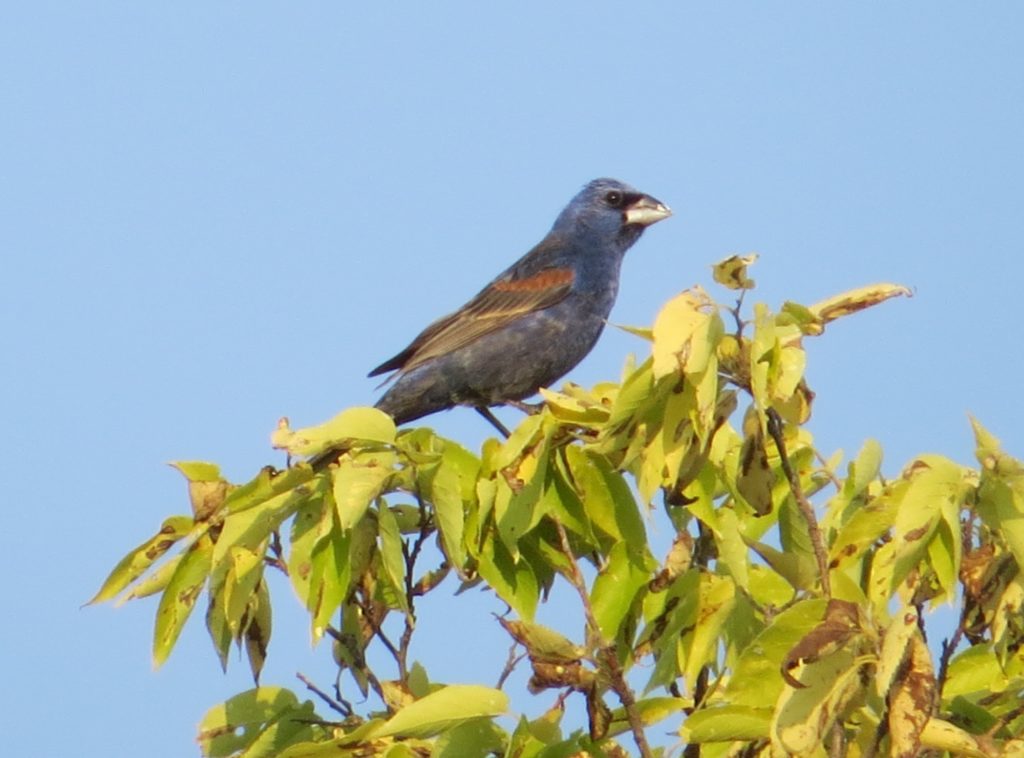
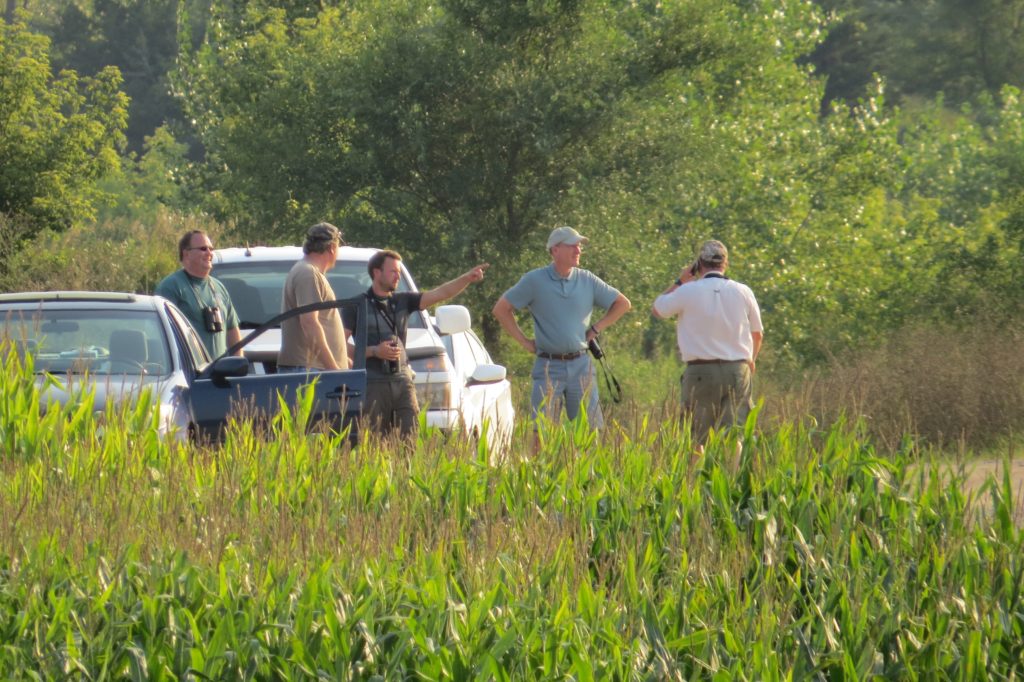
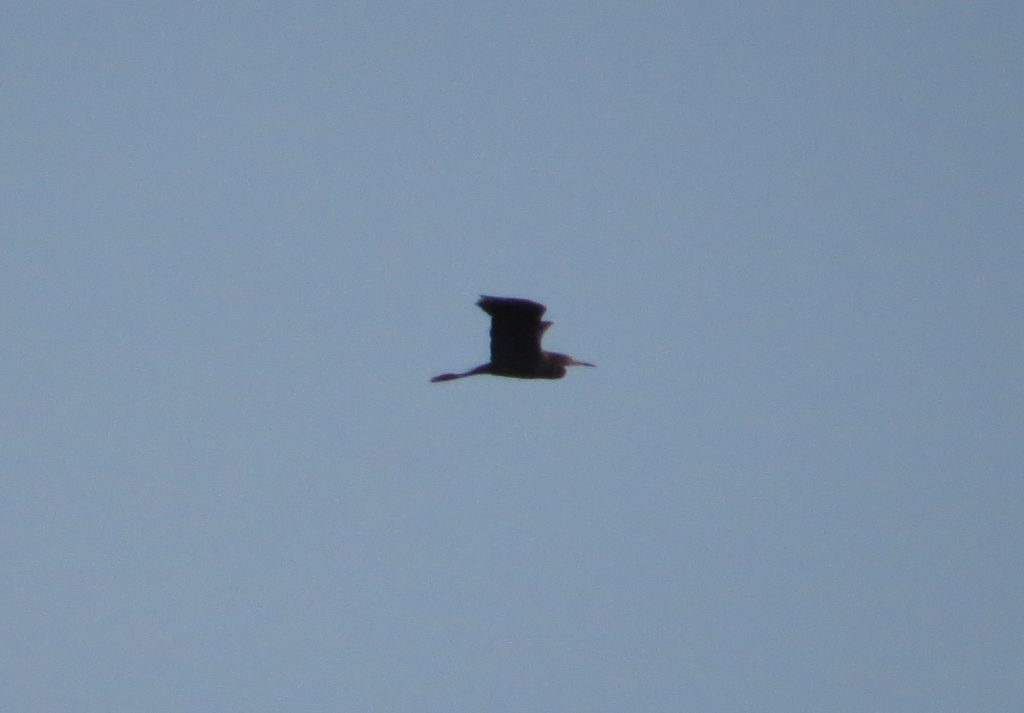
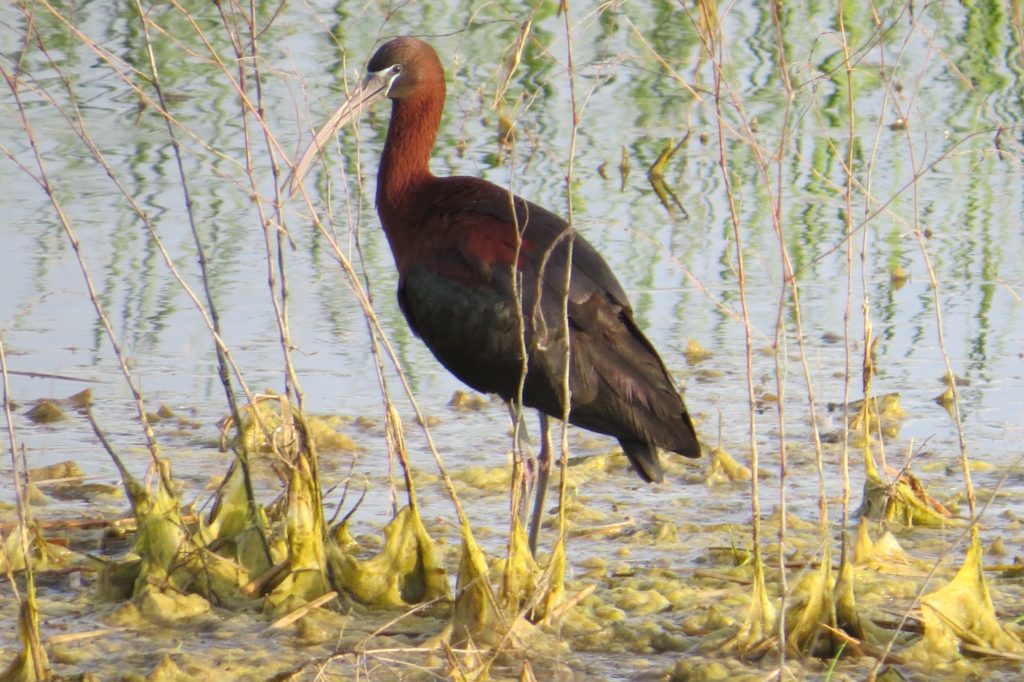
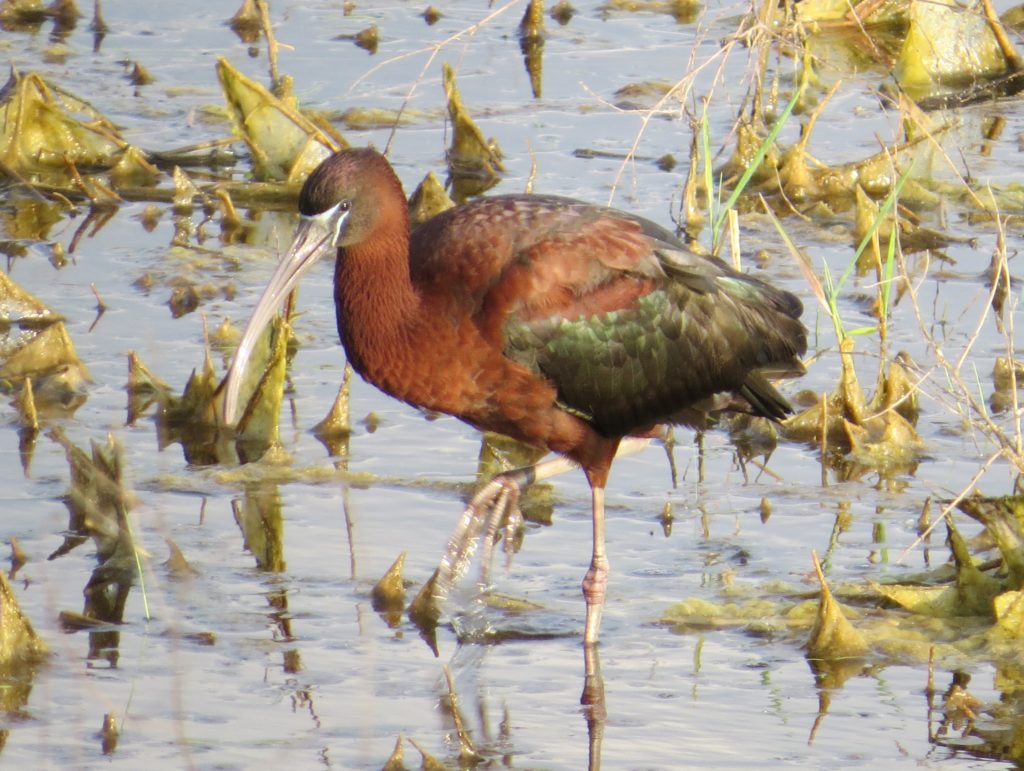 Steve and I were pretty thrilled with going 2/3 on our targets. In addition to these birds, we also nabbed some nice birds that we don’t get to see too often, like this Snowy Egret.
Steve and I were pretty thrilled with going 2/3 on our targets. In addition to these birds, we also nabbed some nice birds that we don’t get to see too often, like this Snowy Egret.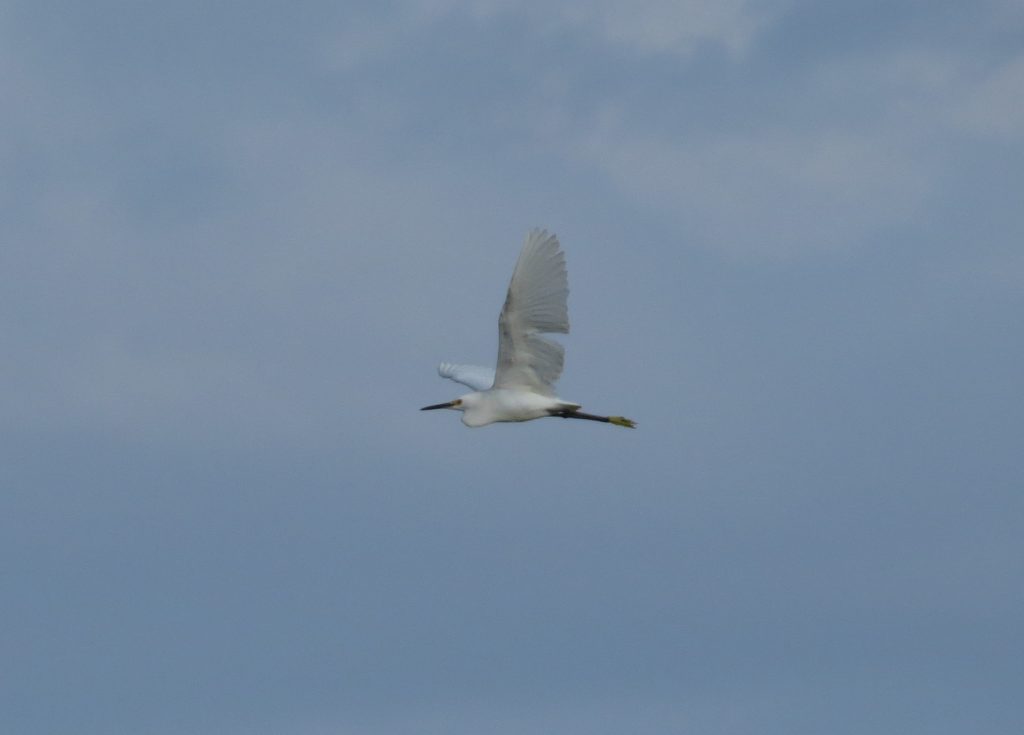
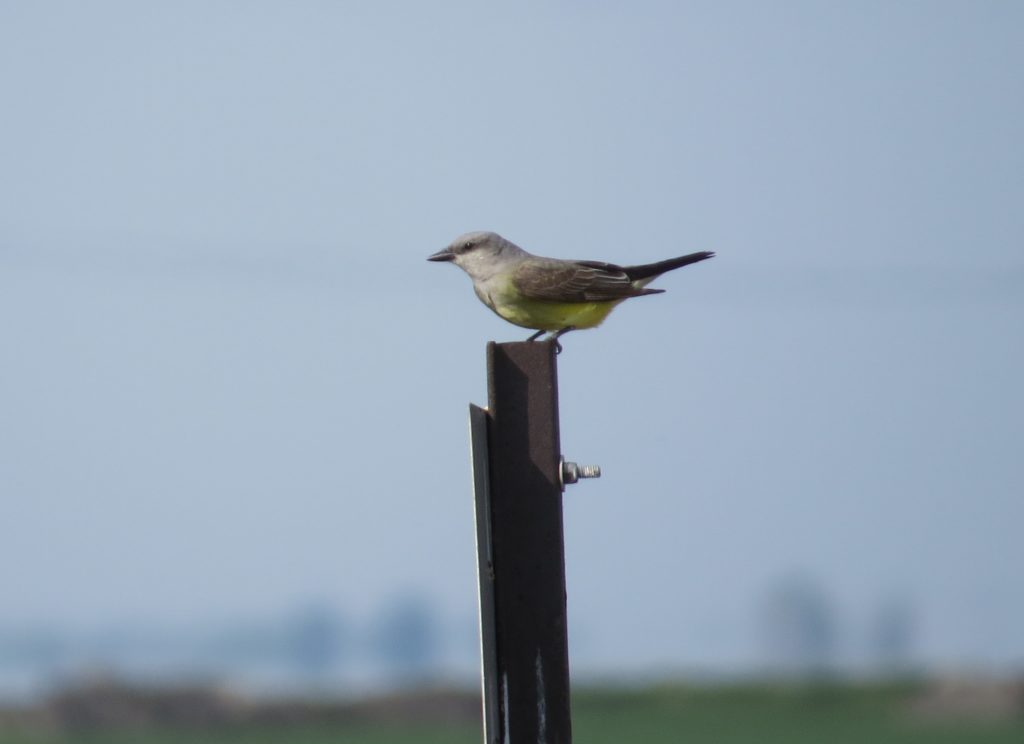 And who does not love seeing an Upland Sandpiper, especially one so crushable?
And who does not love seeing an Upland Sandpiper, especially one so crushable?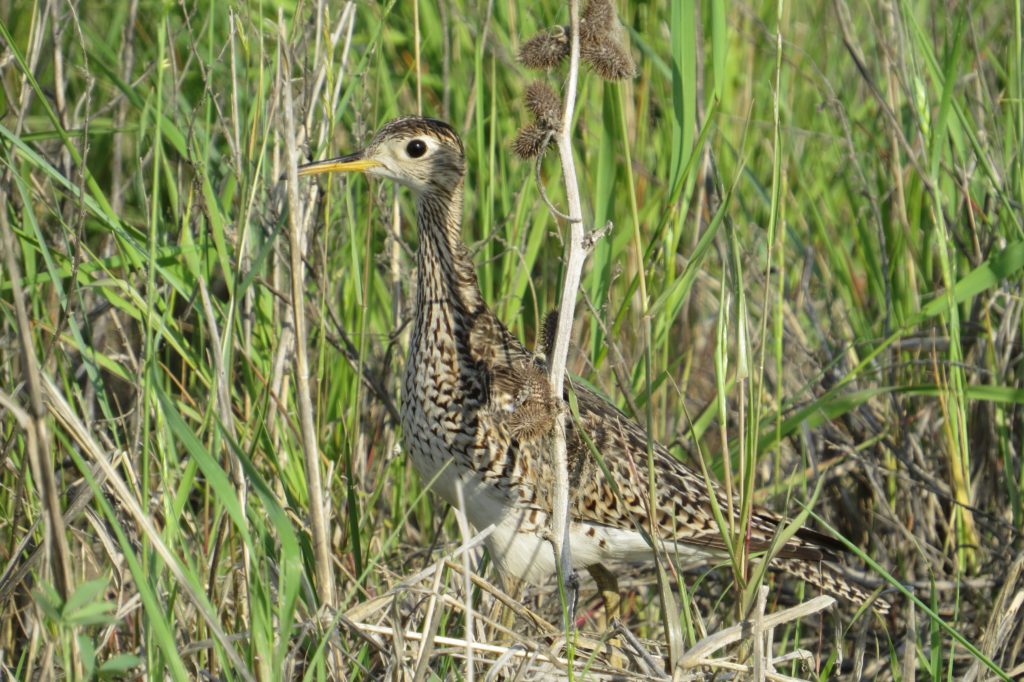
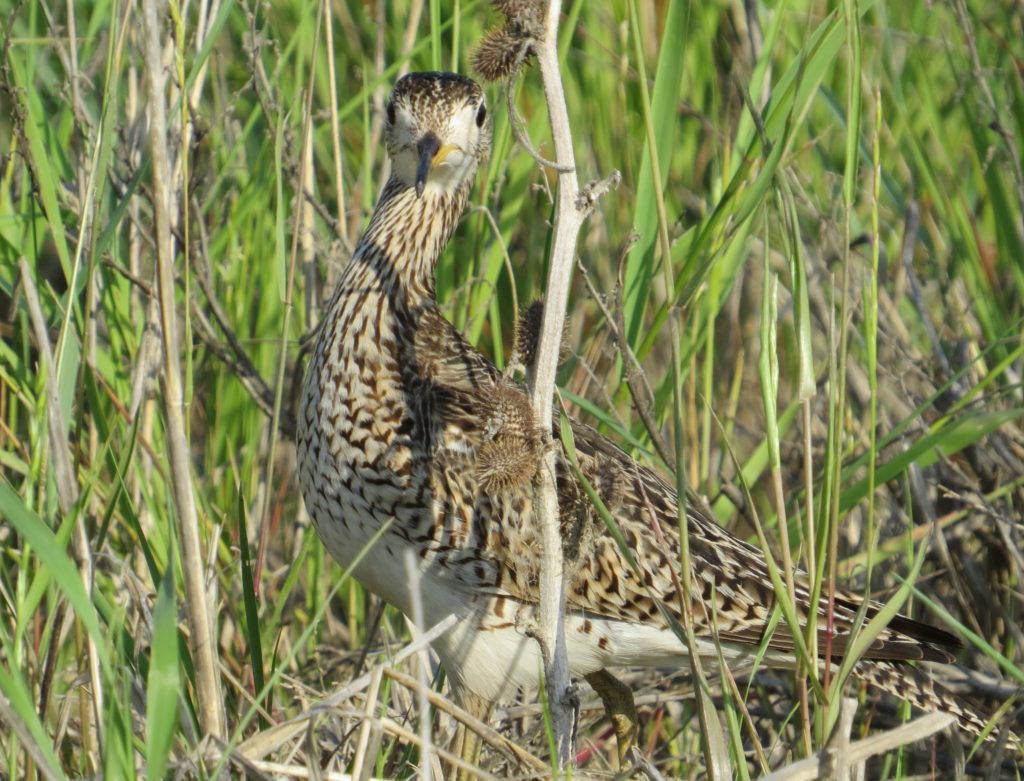 Steve and I felt pretty darn good about our trip and our nice haul of birds. We were completely satisfied, until….
Steve and I felt pretty darn good about our trip and our nice haul of birds. We were completely satisfied, until….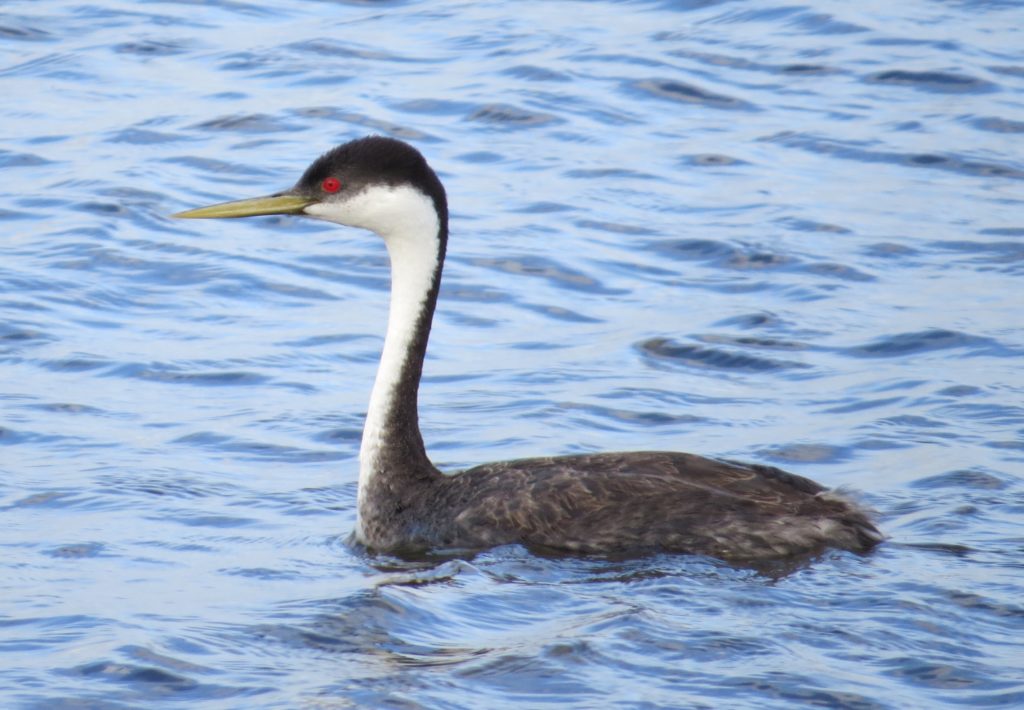 Steve and I did, however, see another casual species that was also discovered during this historic period of MN birding which I have failed to disclose in the timeline. A pair of Black-necked Stilts had set up shop in one of the shallow pools of the Impoundment. Considering I already had Black-necked Stilts for Grant County from several years ago and that Steve had just gotten this state bird recently, we just weren’t too fired up about it, especially after our double dip.
Steve and I did, however, see another casual species that was also discovered during this historic period of MN birding which I have failed to disclose in the timeline. A pair of Black-necked Stilts had set up shop in one of the shallow pools of the Impoundment. Considering I already had Black-necked Stilts for Grant County from several years ago and that Steve had just gotten this state bird recently, we just weren’t too fired up about it, especially after our double dip.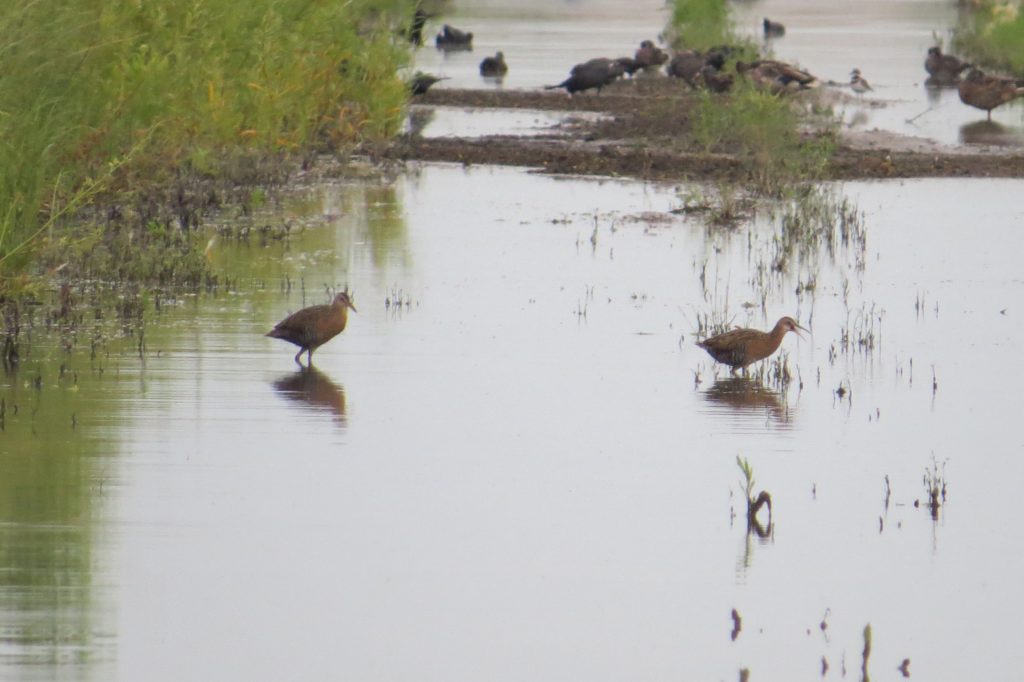 Look at the size of these things compared to the Mallards in the background. No wonder it’s the King of the Rails.
Look at the size of these things compared to the Mallards in the background. No wonder it’s the King of the Rails.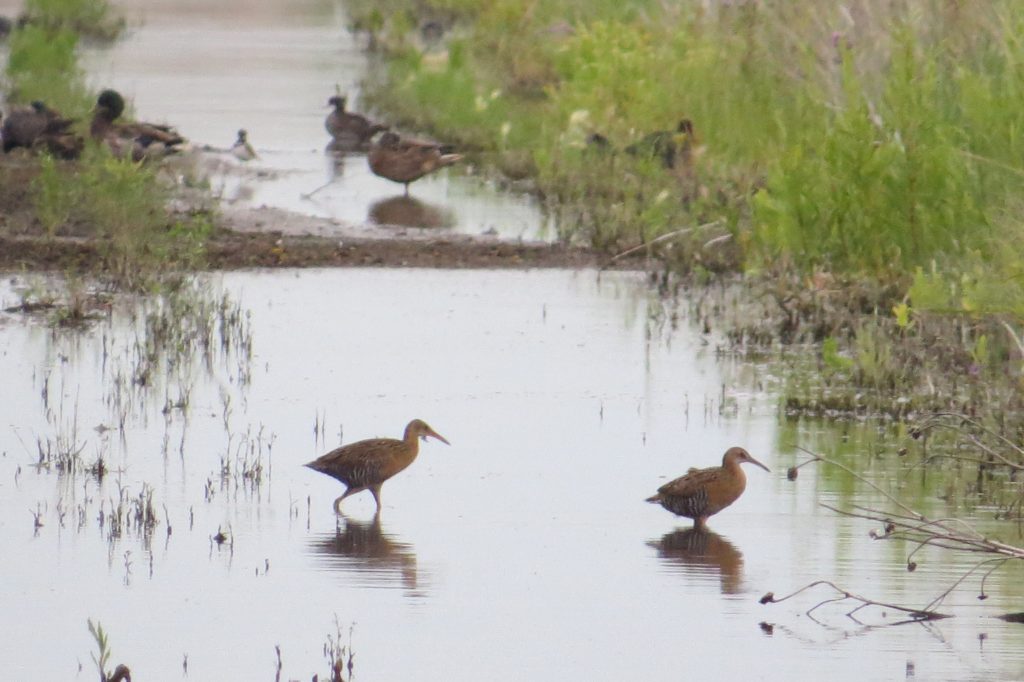
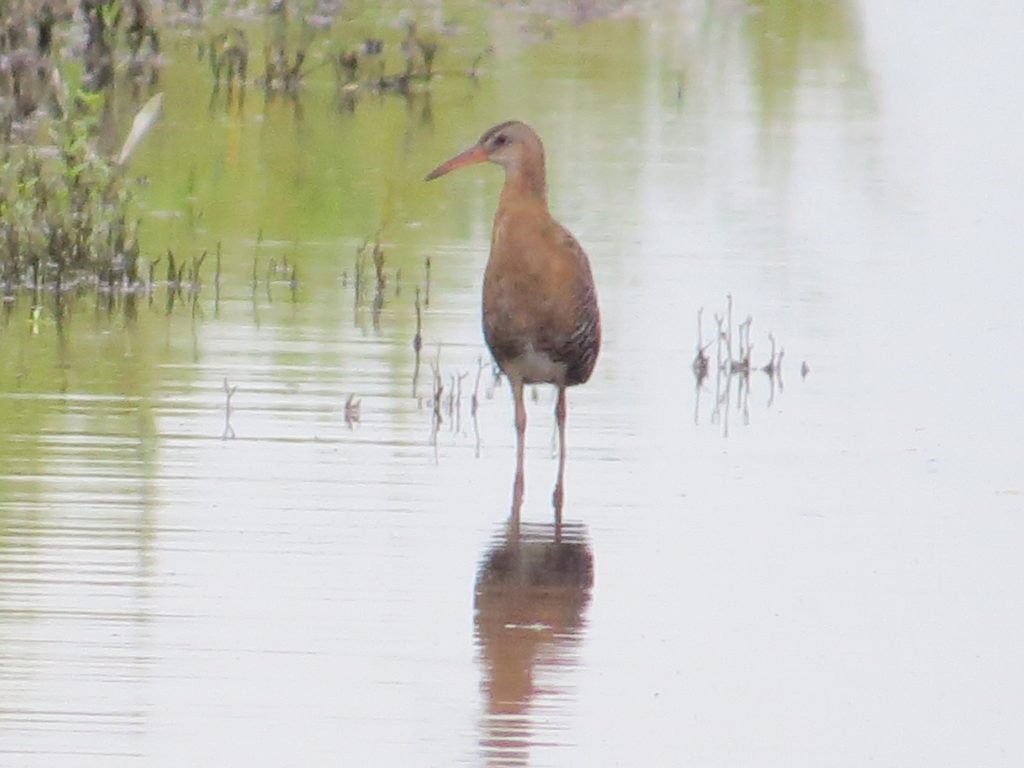 Birding is a roller coaster of emotions, and Steve and I were back on top after this sighting. Steve suggested we try for those Nelson’s Sparrows again. Despite our good fortune of the morning, I was skeptical we would find the Sparrows. But not looking certainly guarantees that outcome. So we walked the dike berm that we had a week ago. This time it definitely felt more Sparrowy–no wind, early morning, etc. We played the tape and didn’t get a response. Then a couple minutes later, I heard the recording, or what I thought was the recording, again. I asked Steve if he had left his phone app on. When he replied that he hadn’t we knew were hearing the real deal! We continued to work the area, and eventually we saw two Nelson’s Sparrows!
Birding is a roller coaster of emotions, and Steve and I were back on top after this sighting. Steve suggested we try for those Nelson’s Sparrows again. Despite our good fortune of the morning, I was skeptical we would find the Sparrows. But not looking certainly guarantees that outcome. So we walked the dike berm that we had a week ago. This time it definitely felt more Sparrowy–no wind, early morning, etc. We played the tape and didn’t get a response. Then a couple minutes later, I heard the recording, or what I thought was the recording, again. I asked Steve if he had left his phone app on. When he replied that he hadn’t we knew were hearing the real deal! We continued to work the area, and eventually we saw two Nelson’s Sparrows!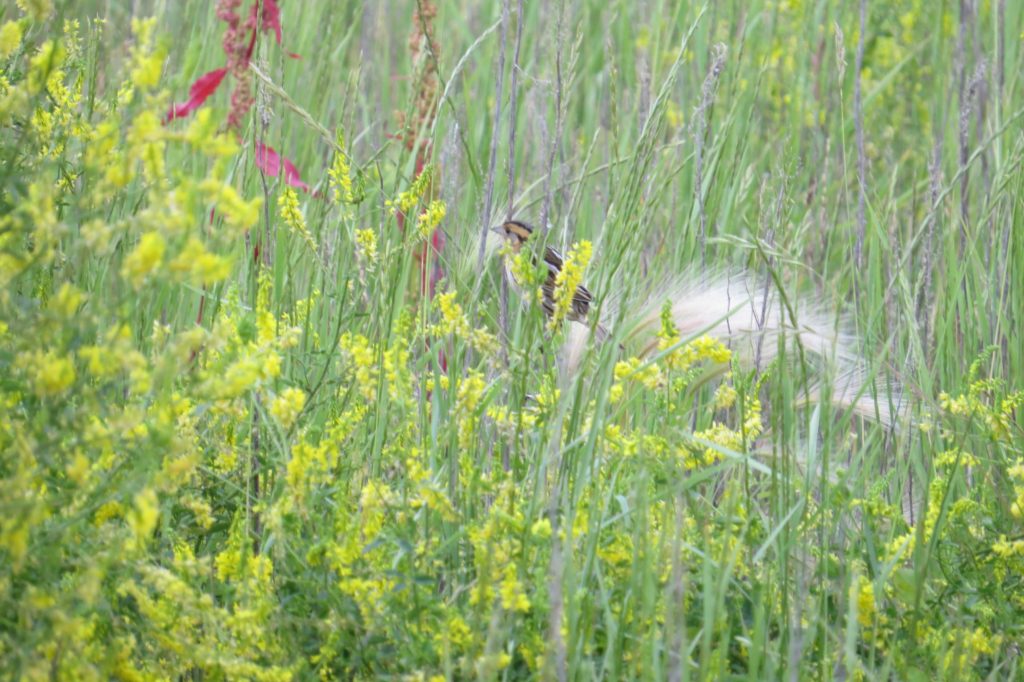 With some pishing we were able to get them to pop up for some great looks at these skulkers.
With some pishing we were able to get them to pop up for some great looks at these skulkers.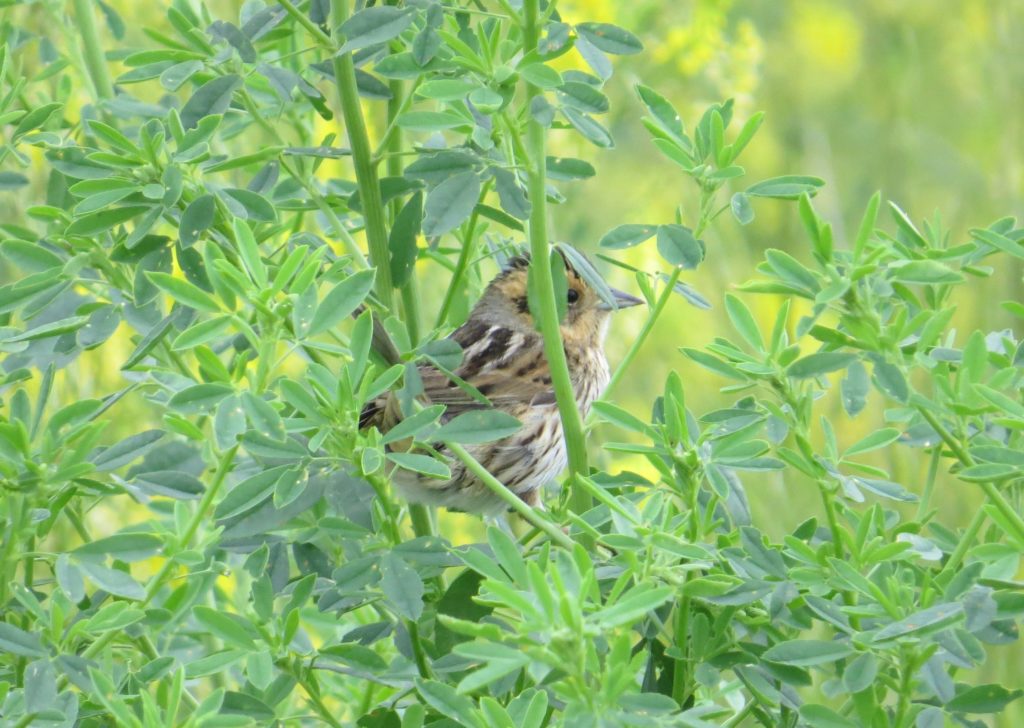
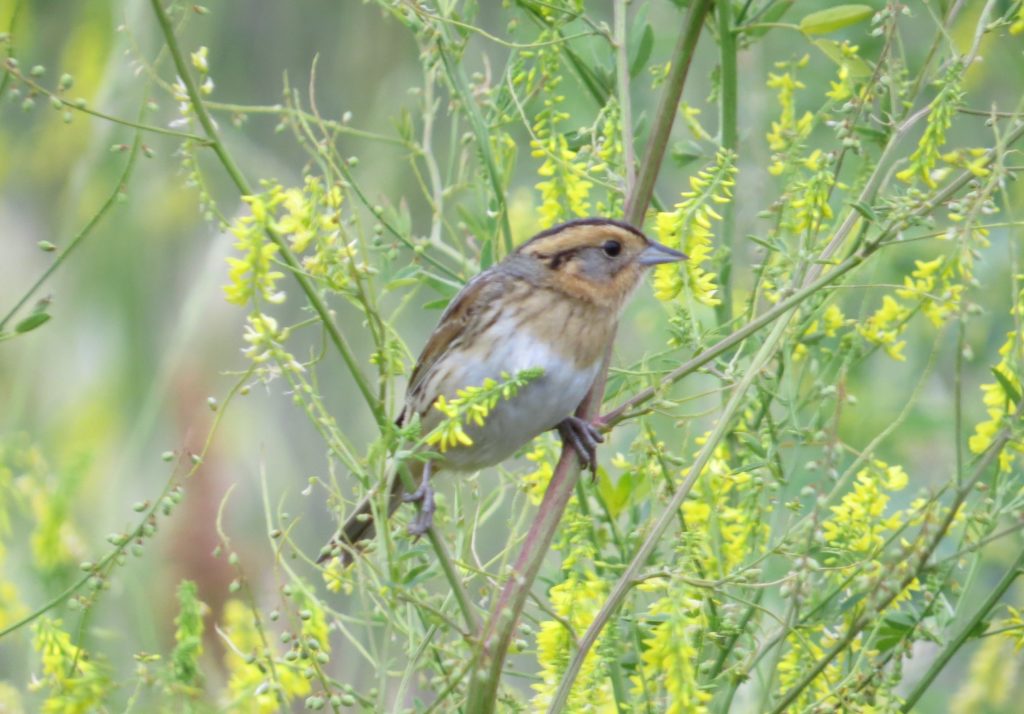 Steve and I followed these birds around for a bit, thoroughly soaking up the experience. I don’t think either of us ever expected to lifer on this bird with such good looks. We certainly didn’t expect to get this lifer in Grant County. This nighttime singer is often a heard-only bird that people trek to middle of nowhere (McGregor) to find in the middle of the night. We were stupefied. Talking it over on the ride home, we concluded that the Nelson’s Sparrow lifer experience topped the King Rails even though the Sparrow is a summer resident in our state. More than once I have been surprised by how much of an impact a Sparrow lifer has on me. A huge thanks goes out to Becca Engdahl for her find and her tips on locating it!
Steve and I followed these birds around for a bit, thoroughly soaking up the experience. I don’t think either of us ever expected to lifer on this bird with such good looks. We certainly didn’t expect to get this lifer in Grant County. This nighttime singer is often a heard-only bird that people trek to middle of nowhere (McGregor) to find in the middle of the night. We were stupefied. Talking it over on the ride home, we concluded that the Nelson’s Sparrow lifer experience topped the King Rails even though the Sparrow is a summer resident in our state. More than once I have been surprised by how much of an impact a Sparrow lifer has on me. A huge thanks goes out to Becca Engdahl for her find and her tips on locating it! Since that comment was written, I have knocked off all those ducks but one–the Barrow’s Goldeneye, a bird considered casual in Minnesota occurring roughly every 5 years. As I am getting to the end of my normal MN birds, BAGO was rapidly moving its way up to the top of the list of my most-wanted birds. Last year I chased a female BAGO in Fergus Falls but failed. This year there have been a couple other reports but nothing I considered reliable and therefore chaseable. Well, a little over two weeks ago, Adam Roesch birded at the Mississippi River in Champlin–quite aways upstream from his beloved patch–and made a stunning discovery. Among the myriad of Common Goldeneye, Adam found and photographed a beautiful male Barrow’s Goldeneye. And with that find, Adam submitted his first ever eBird checklist. Talk about an entrance.
Since that comment was written, I have knocked off all those ducks but one–the Barrow’s Goldeneye, a bird considered casual in Minnesota occurring roughly every 5 years. As I am getting to the end of my normal MN birds, BAGO was rapidly moving its way up to the top of the list of my most-wanted birds. Last year I chased a female BAGO in Fergus Falls but failed. This year there have been a couple other reports but nothing I considered reliable and therefore chaseable. Well, a little over two weeks ago, Adam Roesch birded at the Mississippi River in Champlin–quite aways upstream from his beloved patch–and made a stunning discovery. Among the myriad of Common Goldeneye, Adam found and photographed a beautiful male Barrow’s Goldeneye. And with that find, Adam submitted his first ever eBird checklist. Talk about an entrance.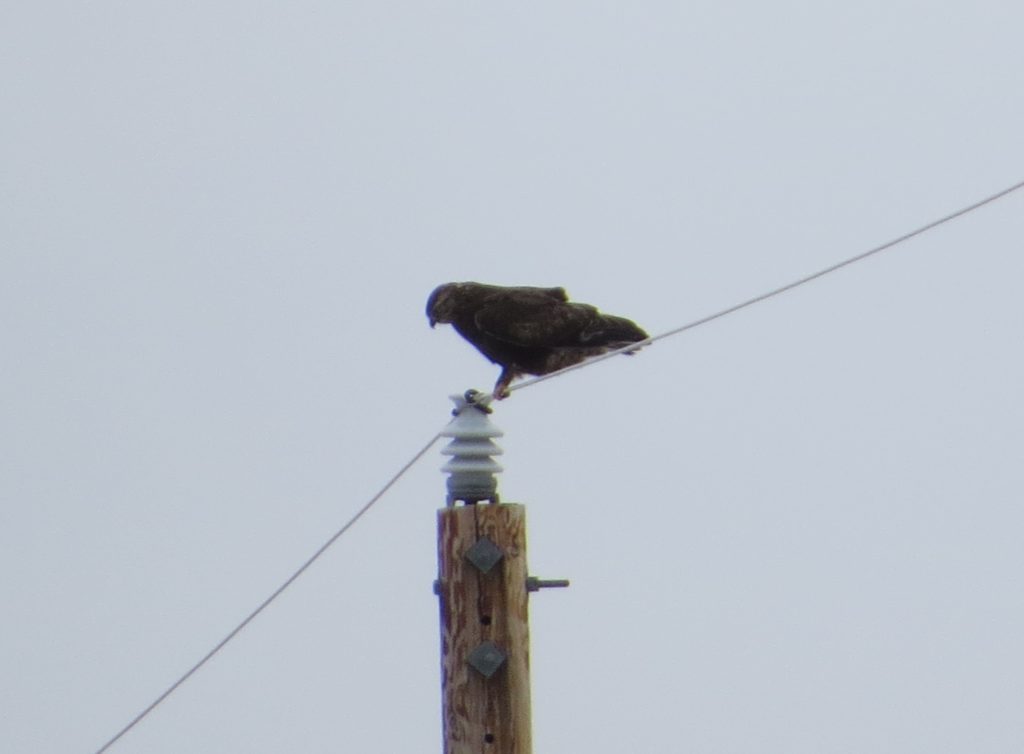
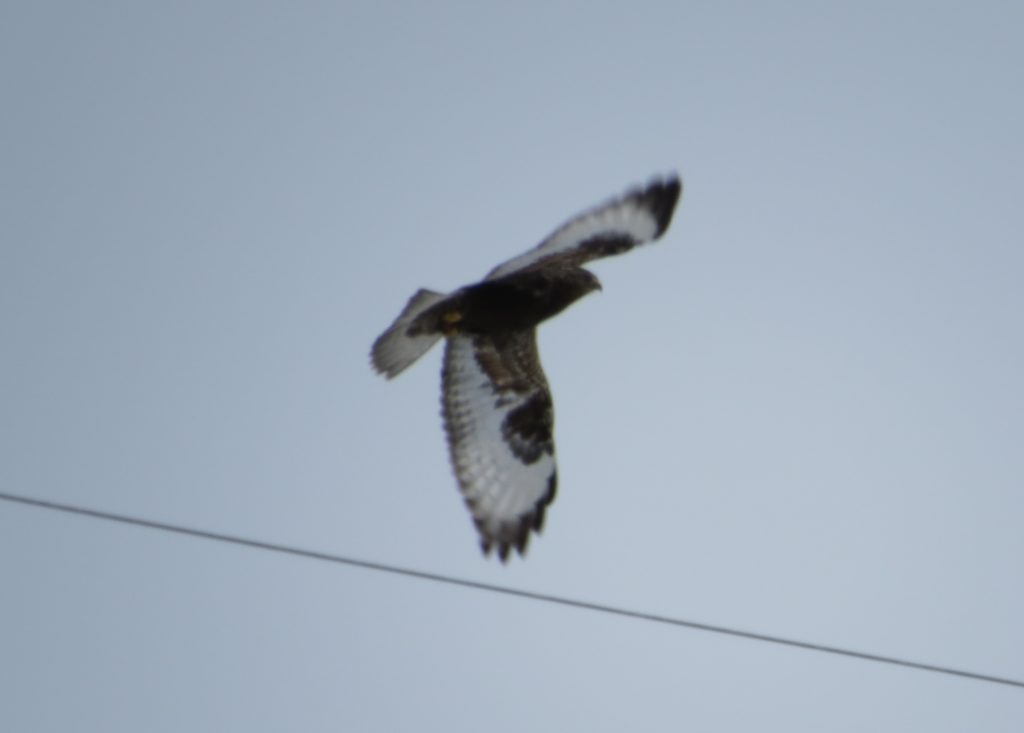 For the second time in as many weekends, we arrived at Anoka’s Peninsula Point Park to scan the Mississippi for the good Goldeneye.
For the second time in as many weekends, we arrived at Anoka’s Peninsula Point Park to scan the Mississippi for the good Goldeneye.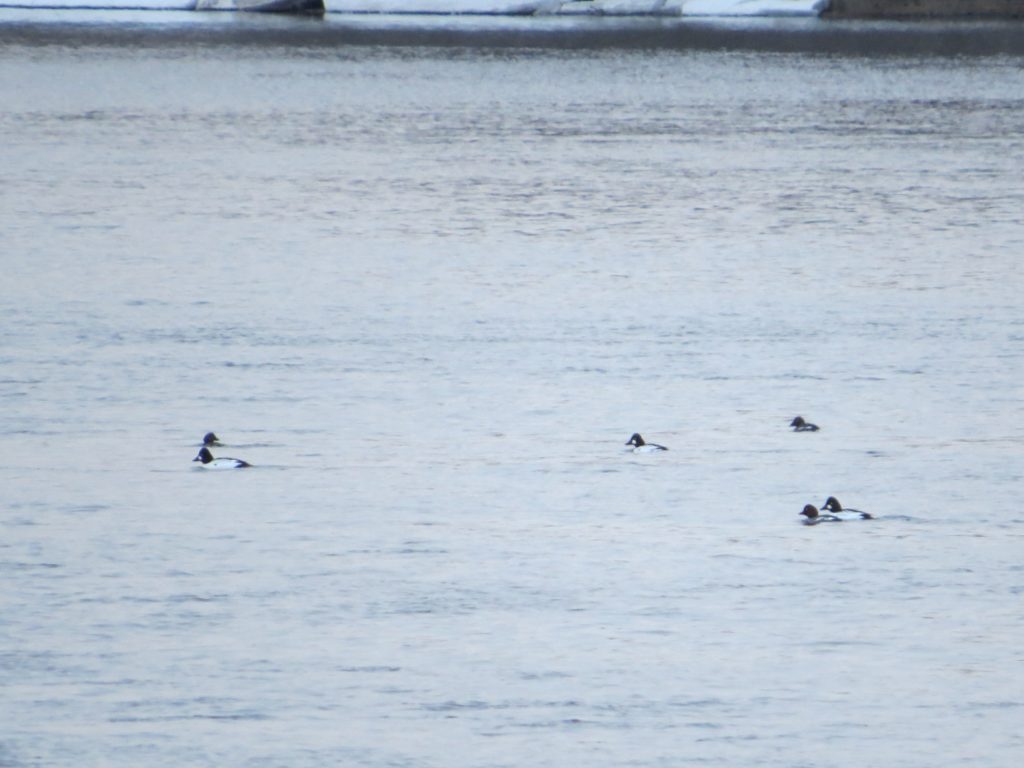
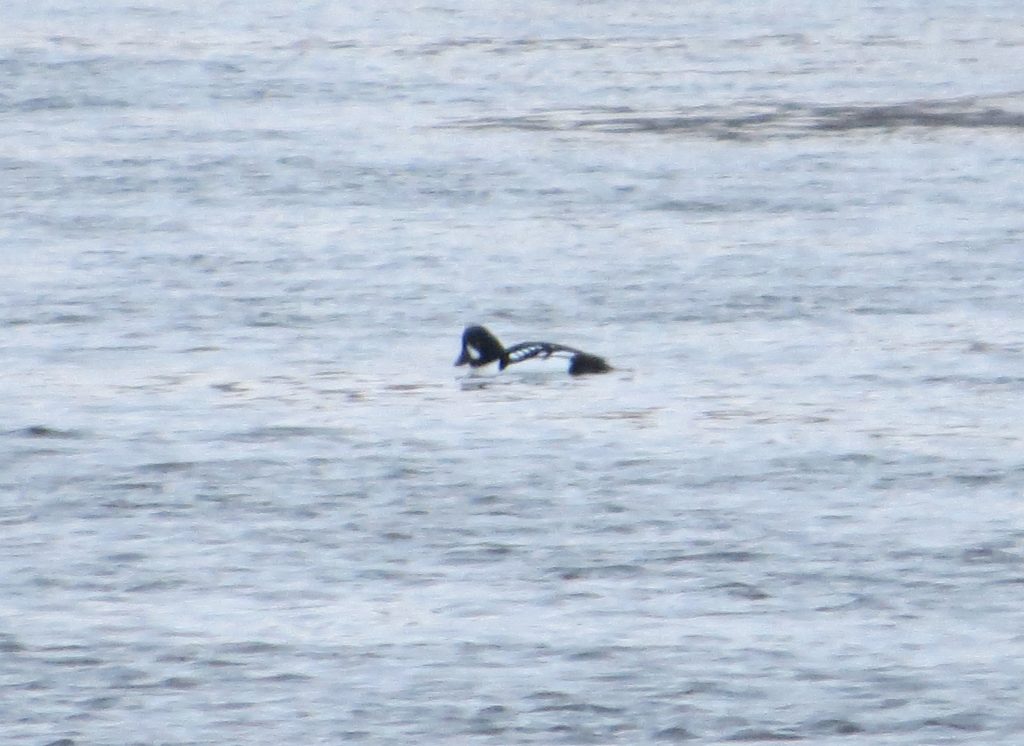 There’s just something that I absolutely love about getting duck lifers in the cold months.
There’s just something that I absolutely love about getting duck lifers in the cold months.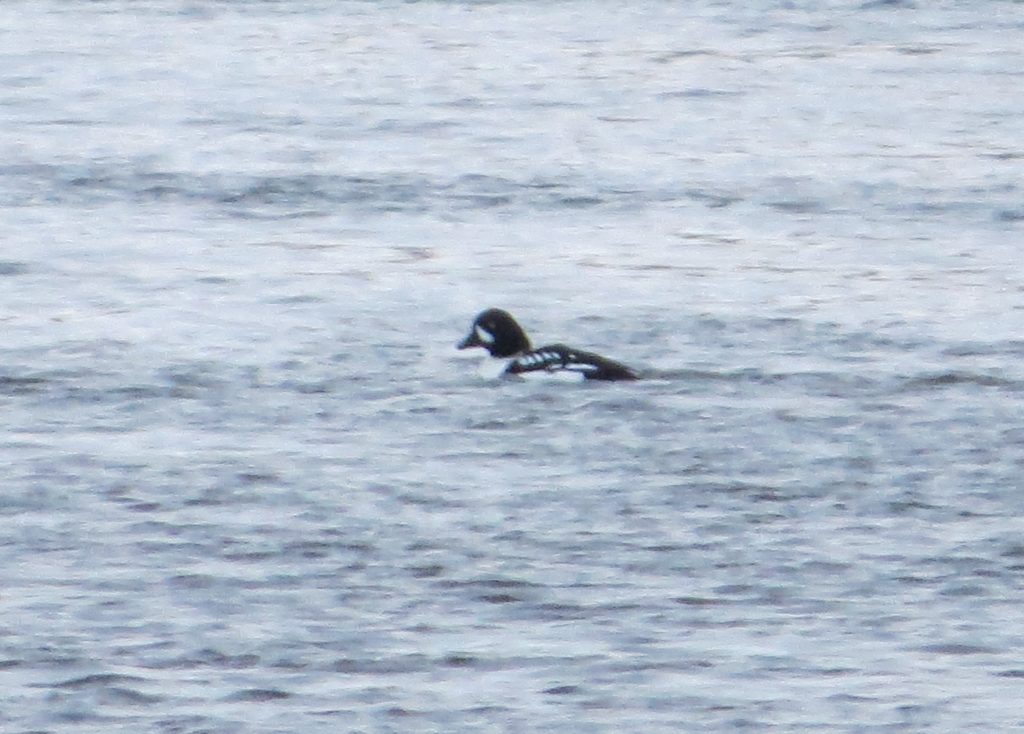
 I’m not lying. This skyline view of Minneapolis is literally what this Snowy Owl can see from its bizarre winter territory. I am used to looking for Snowies in urban environments, but nothing quite like this. Snowy Owls aren’t that hard to spot in places like this, yet I was having a hard time, a really hard time. I finally ran into another birder who clued me in to this sneaky Snowy’s hideout.
I’m not lying. This skyline view of Minneapolis is literally what this Snowy Owl can see from its bizarre winter territory. I am used to looking for Snowies in urban environments, but nothing quite like this. Snowy Owls aren’t that hard to spot in places like this, yet I was having a hard time, a really hard time. I finally ran into another birder who clued me in to this sneaky Snowy’s hideout.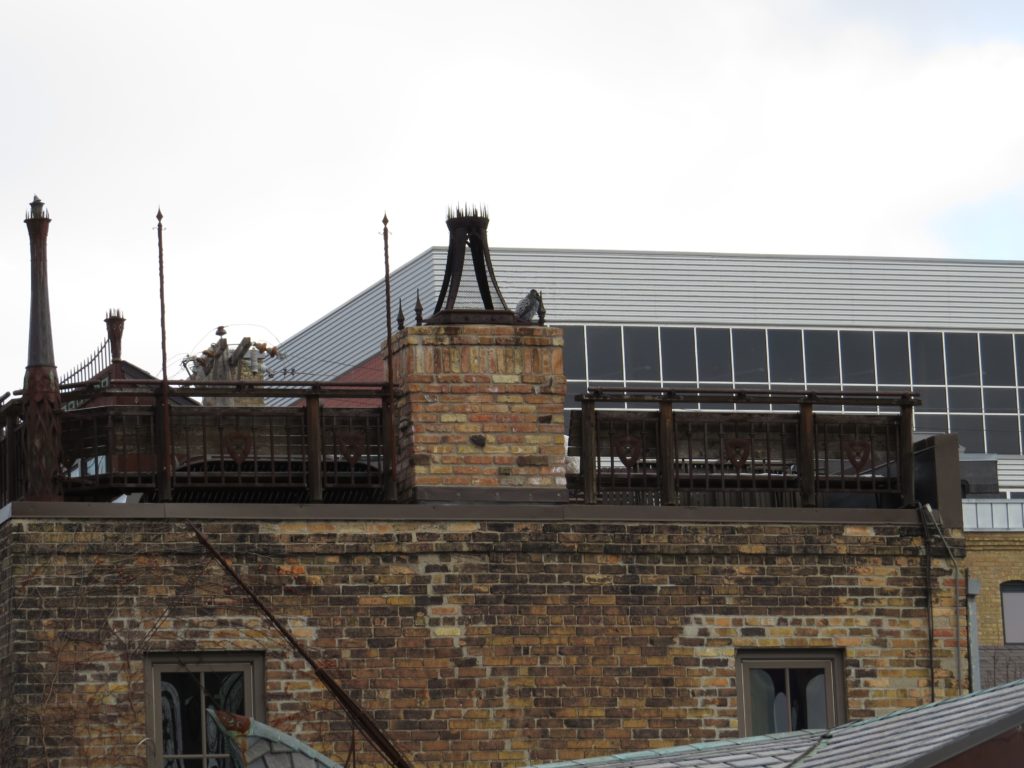 See it? Yeah, I didn’t either without help.
See it? Yeah, I didn’t either without help.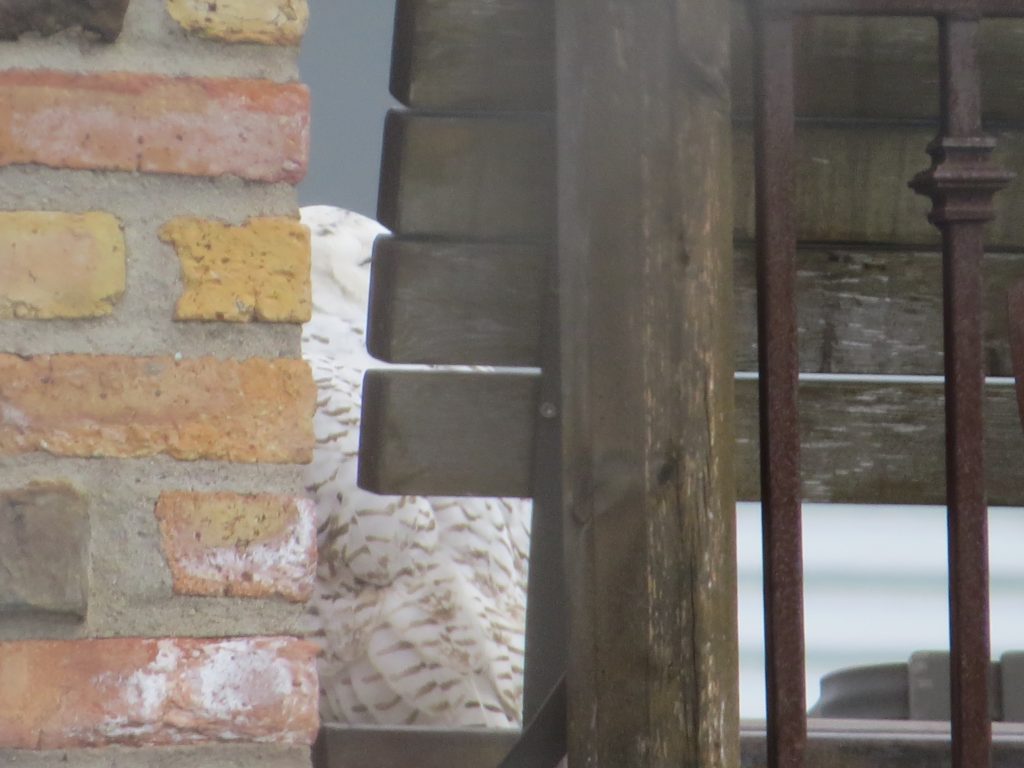 Never have I seen an Owl, Snowy or otherwise, so well fortified. Camouflaged, yes, but not entrenched. I tried every which angle and every side of the building for a shot.
Never have I seen an Owl, Snowy or otherwise, so well fortified. Camouflaged, yes, but not entrenched. I tried every which angle and every side of the building for a shot.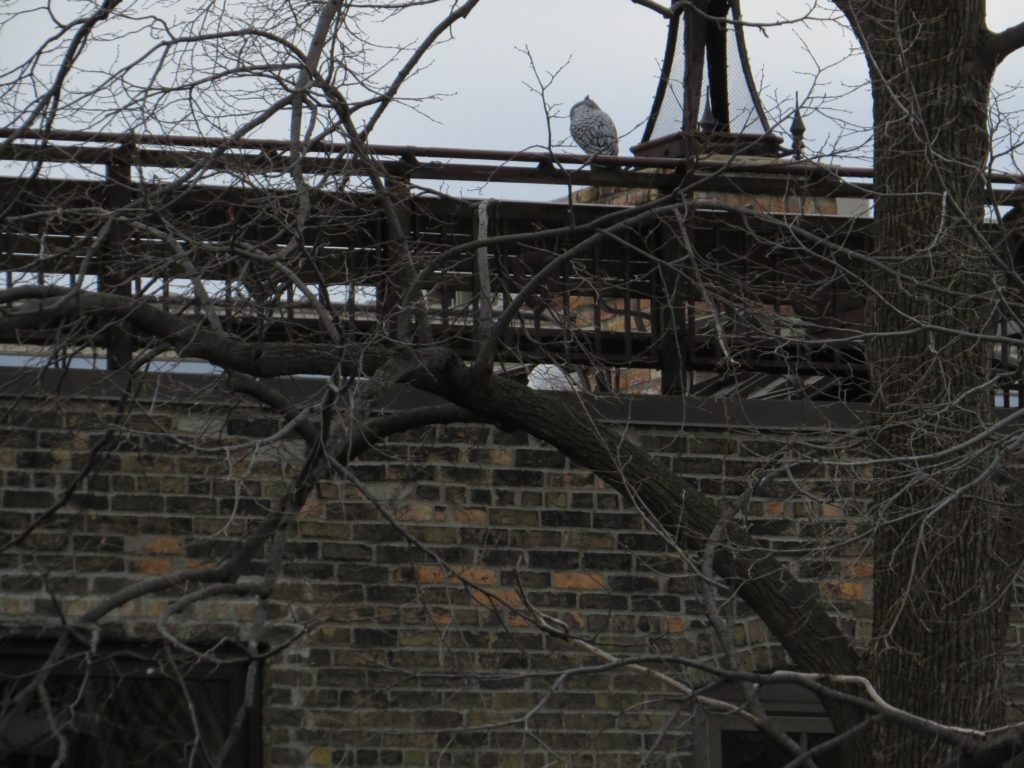
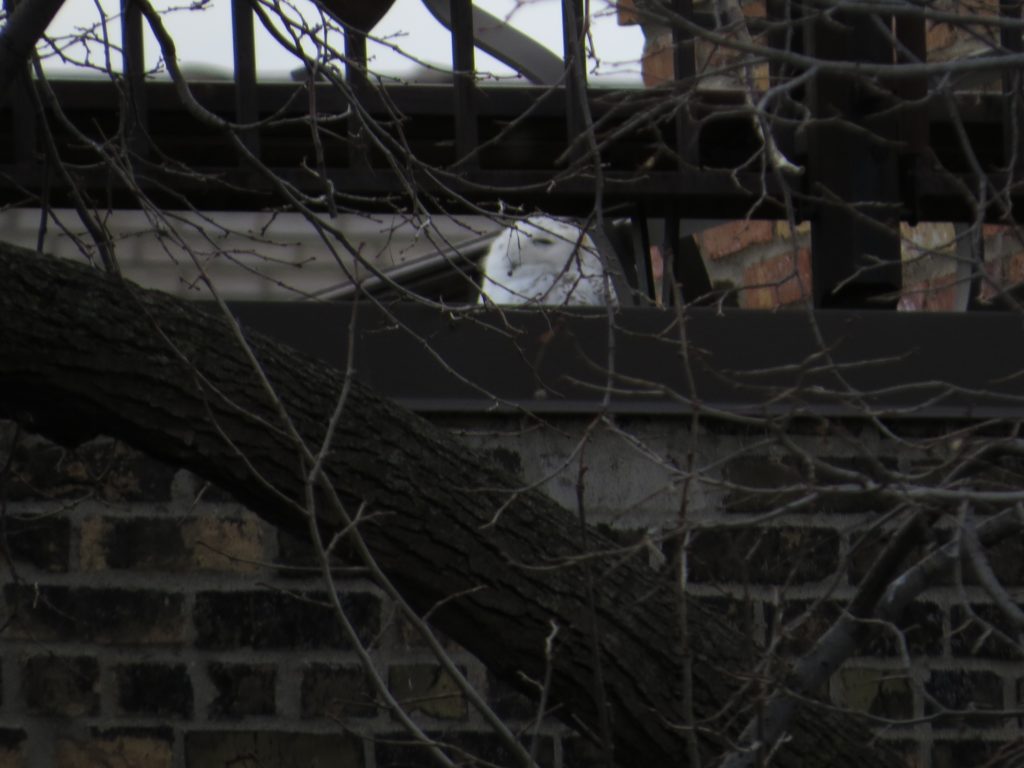 The non-birding-totally-birding metro trip was a success by any standard. It was back to rural west-cental MN where more adventure awaited in the days to come. We’ll save that for the next post, but to close things out, here’s a Great Horned Owl the kids and I saw on the ride back home.
The non-birding-totally-birding metro trip was a success by any standard. It was back to rural west-cental MN where more adventure awaited in the days to come. We’ll save that for the next post, but to close things out, here’s a Great Horned Owl the kids and I saw on the ride back home.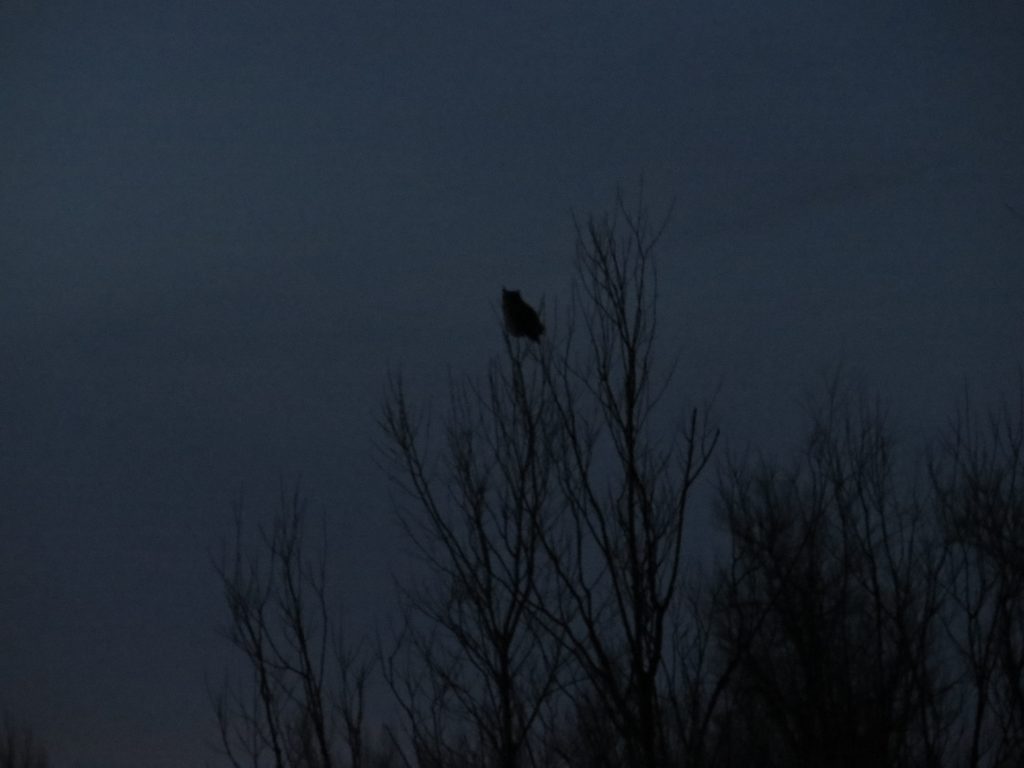
 When I pulled up to the boat launch at Lake Waconia Regional Park, I saw a Carver County Sheriff truck trailering a patrol boat. I thought it was odd since no one would be on the lake on a day like this nor could a boat be launched in the rapidly building ice. Strange. I didn’t think about it much more and set about my business of finding my target. Watching the sea swells and facing into the sub-zero windchills was brutal even for being dressed for the elements. Scans of the big lake were intermittent and necessitated warm-up sessions in the car. Having no luck seeing the duck (which was there that morning), I asked Julie for any tips on where to stare into that blue abyss to find this duck. In giving me directions, Julie also reminded me of the ongoing search for a paddleboarder that went missing two week prior. The dots started connecting in my head regarding the Sheriff’s trailered boat, trucks driving slowly along the shoreline who I had thought were also looking for the Scoter, and my own vague recollection of a news report I had seen. It was suddenly a grim realization that I should be looking for more than just my bird.
When I pulled up to the boat launch at Lake Waconia Regional Park, I saw a Carver County Sheriff truck trailering a patrol boat. I thought it was odd since no one would be on the lake on a day like this nor could a boat be launched in the rapidly building ice. Strange. I didn’t think about it much more and set about my business of finding my target. Watching the sea swells and facing into the sub-zero windchills was brutal even for being dressed for the elements. Scans of the big lake were intermittent and necessitated warm-up sessions in the car. Having no luck seeing the duck (which was there that morning), I asked Julie for any tips on where to stare into that blue abyss to find this duck. In giving me directions, Julie also reminded me of the ongoing search for a paddleboarder that went missing two week prior. The dots started connecting in my head regarding the Sheriff’s trailered boat, trucks driving slowly along the shoreline who I had thought were also looking for the Scoter, and my own vague recollection of a news report I had seen. It was suddenly a grim realization that I should be looking for more than just my bird.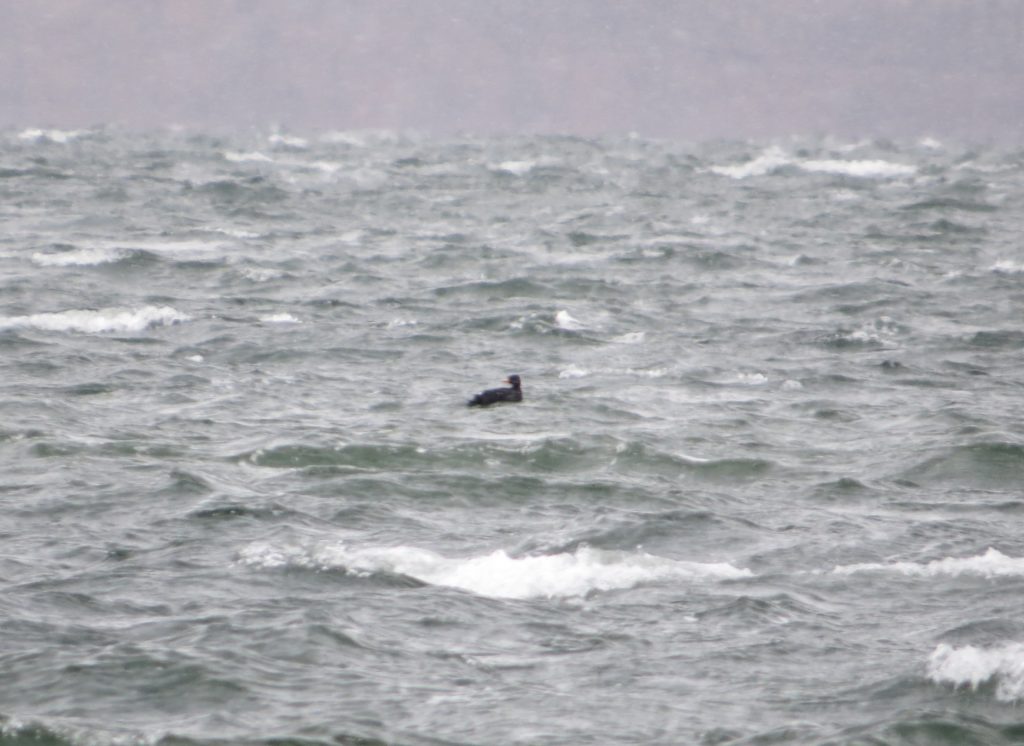 The incredible distance, the numb fingers, and disappearing/reappearing bird made picture-taking a nightmare. Regardless, I was thrilled to finally add this bird and see an adult male at that, a gender/plumage combo that is rarely ever seen in the state.
The incredible distance, the numb fingers, and disappearing/reappearing bird made picture-taking a nightmare. Regardless, I was thrilled to finally add this bird and see an adult male at that, a gender/plumage combo that is rarely ever seen in the state.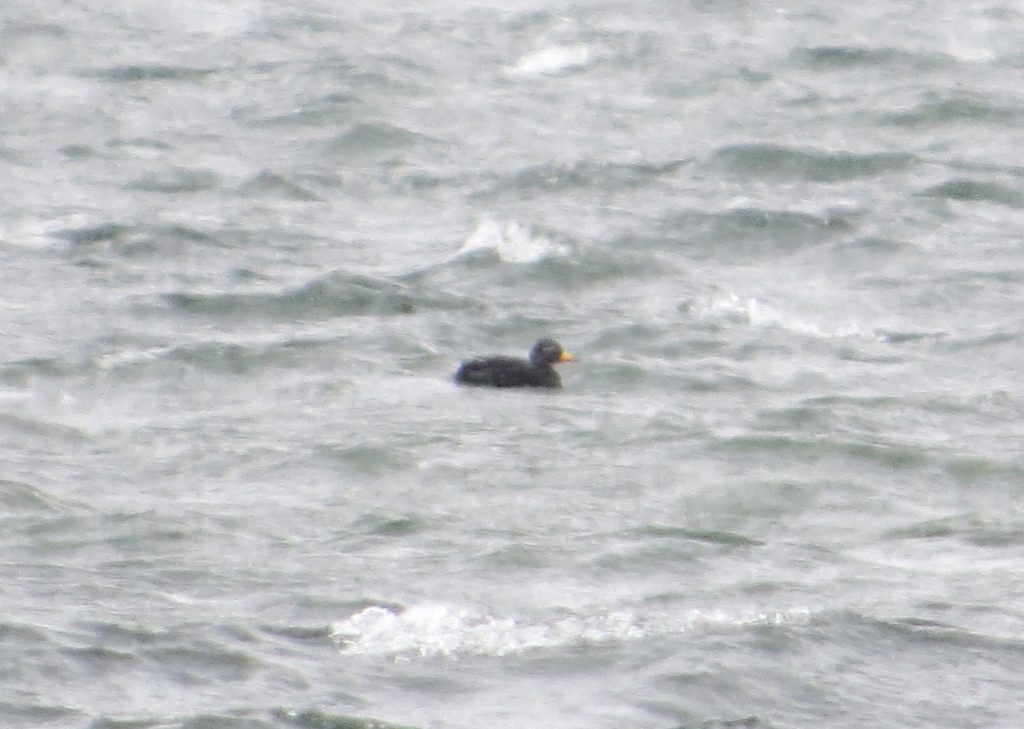
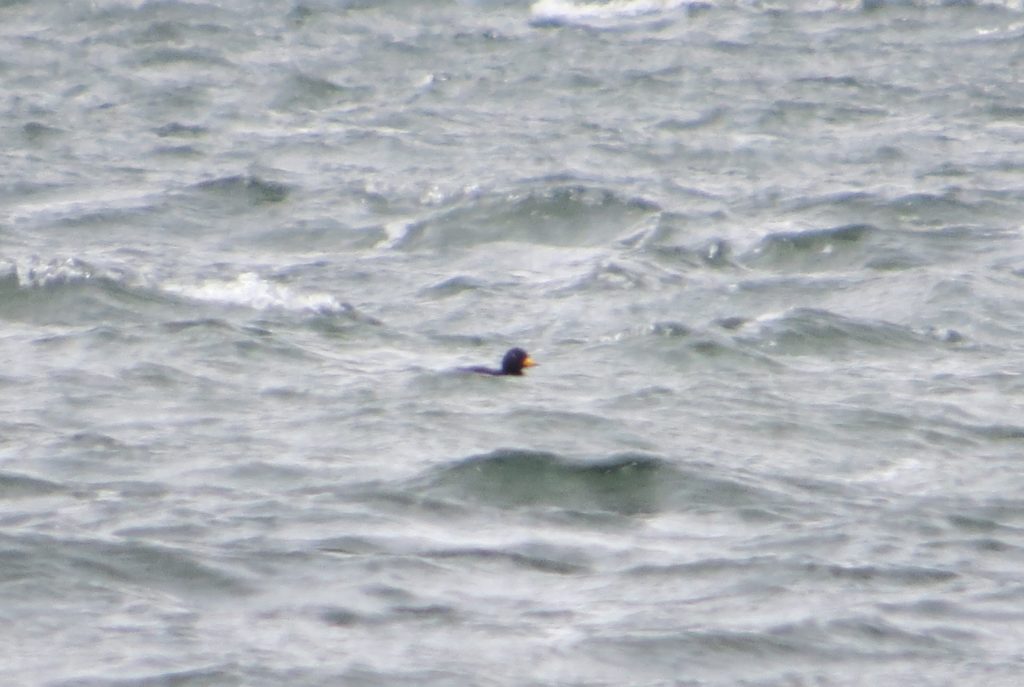
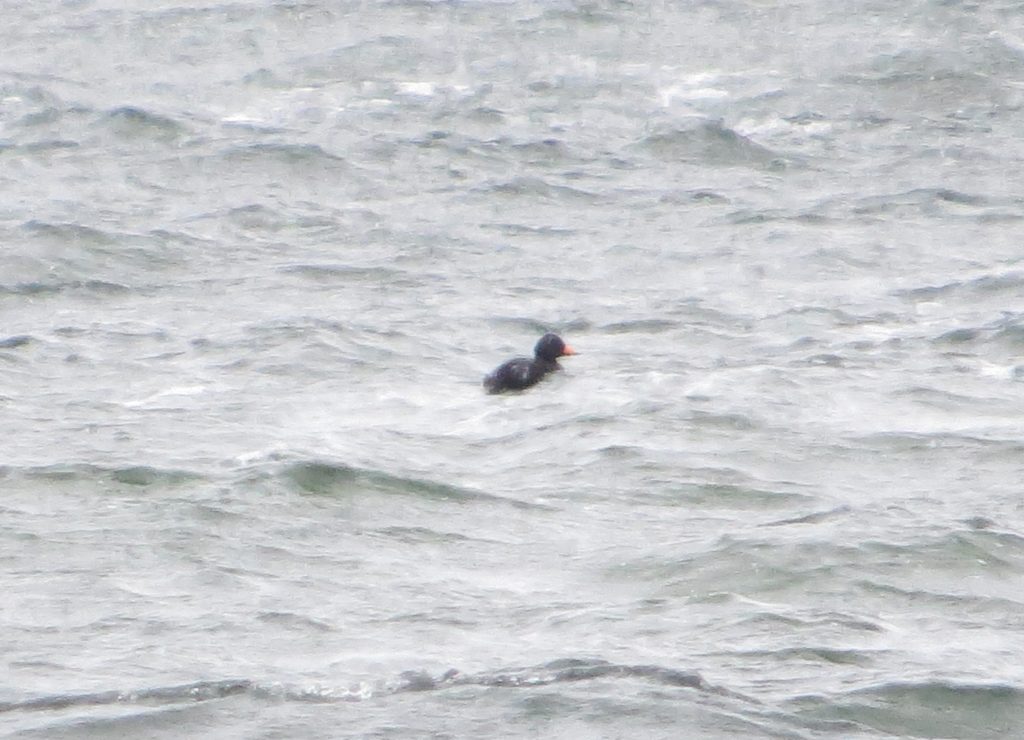 The excitement of this new addition was tempered by a Sheriff’s helicopter making constant circles around the lake the whole time I was there, undoubtedly desperate to find this man on this last day of open water. The man was just a couple years younger than me with two young kids and another on the way. He had gone out to pursue his passion of wildlife photography from his paddleboard. And here I was at the same body of water just a couple weeks later pursuing mine. Life really is unfair. The whole ride back to work it was hard not to wonder if I sometimes take unnecessary risks in the pursuit of my hobby. Then again, a life lived with no adventure is a life not fully lived. Seize the day.
The excitement of this new addition was tempered by a Sheriff’s helicopter making constant circles around the lake the whole time I was there, undoubtedly desperate to find this man on this last day of open water. The man was just a couple years younger than me with two young kids and another on the way. He had gone out to pursue his passion of wildlife photography from his paddleboard. And here I was at the same body of water just a couple weeks later pursuing mine. Life really is unfair. The whole ride back to work it was hard not to wonder if I sometimes take unnecessary risks in the pursuit of my hobby. Then again, a life lived with no adventure is a life not fully lived. Seize the day.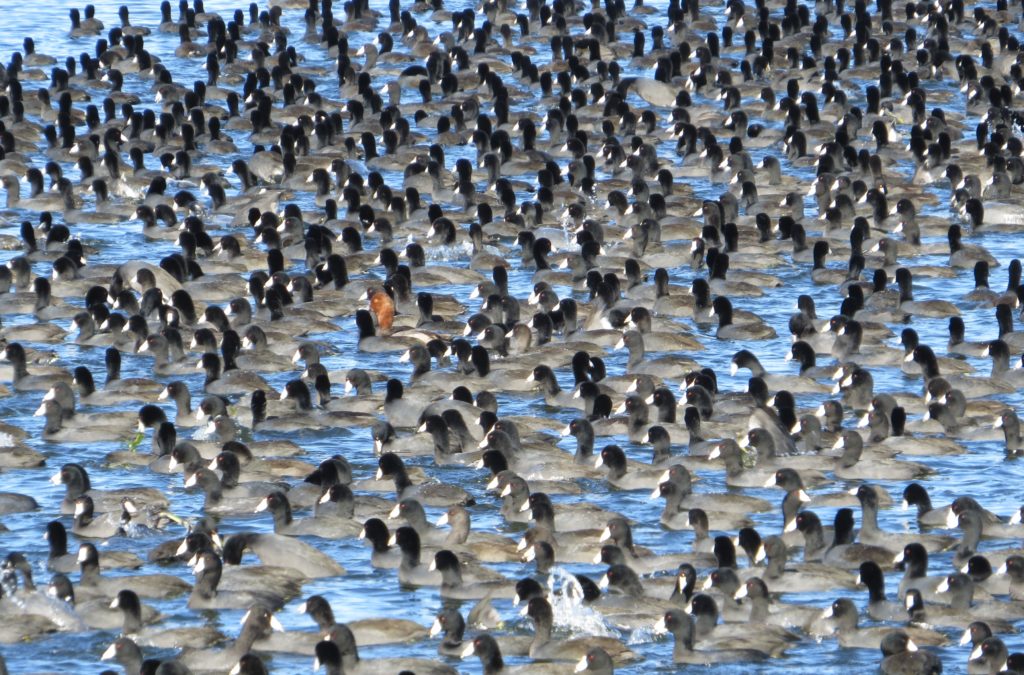 Back to that Monday off, I was doing my lake scanning thing and sinking into a birding funk when I was getting the same dismal results. Except this time it was aggravated by thoughts of those two birds I missed. Anyway, I photographed a duck on Big Kandiyohi Lake that was a long distance off. My blurry photo revealed a shape similar to a Surf Scoter. I passed it on to Randy, and he thought it was good enough to warrant a trip out there himself to take a look. So Randy and I met up at Big Kandi, and we used his high powered scope and found…nothing. Randy asked what we should do next. I suggested that Lake Lillian was close by and worth a look. Not feeling the greatest, Randy declined and sent his scope with me.
Back to that Monday off, I was doing my lake scanning thing and sinking into a birding funk when I was getting the same dismal results. Except this time it was aggravated by thoughts of those two birds I missed. Anyway, I photographed a duck on Big Kandiyohi Lake that was a long distance off. My blurry photo revealed a shape similar to a Surf Scoter. I passed it on to Randy, and he thought it was good enough to warrant a trip out there himself to take a look. So Randy and I met up at Big Kandi, and we used his high powered scope and found…nothing. Randy asked what we should do next. I suggested that Lake Lillian was close by and worth a look. Not feeling the greatest, Randy declined and sent his scope with me.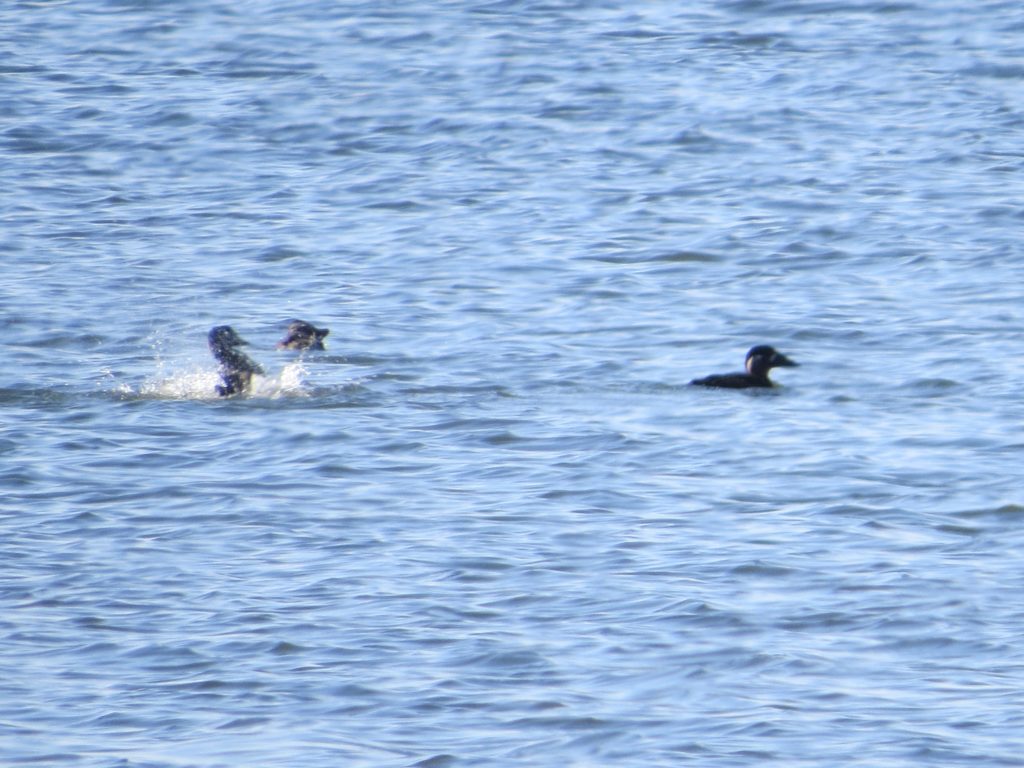
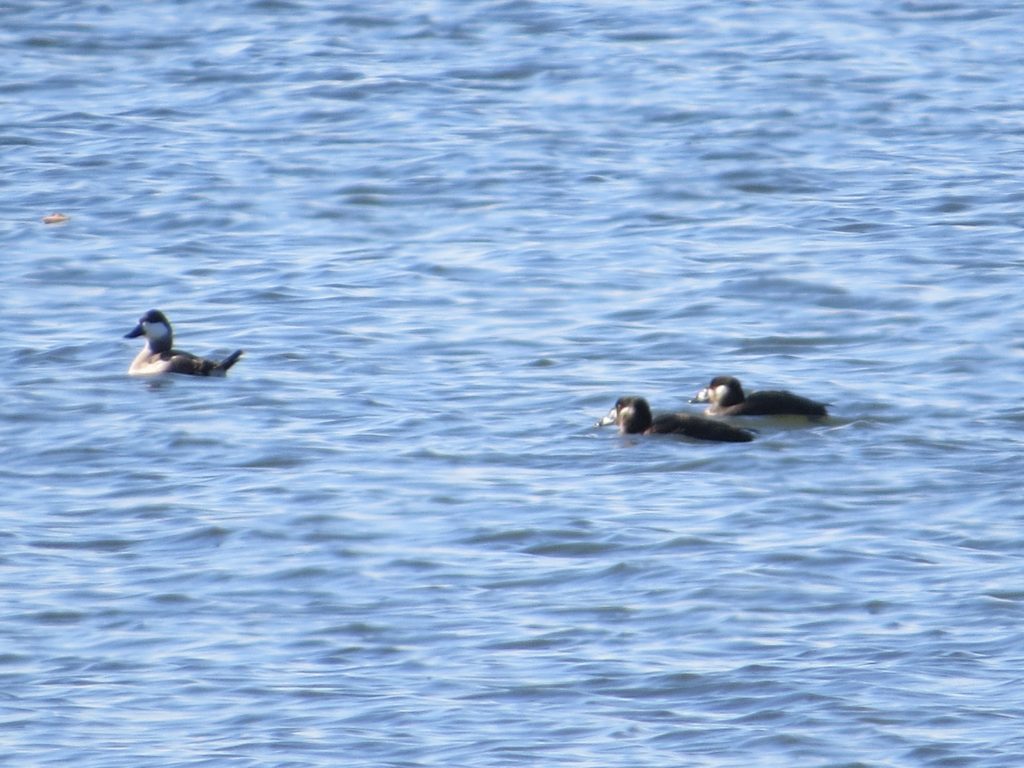 The phone calls to other birders began in earnest as I was making my way to the kids’ school, officially well behind schedule. Eyes were now trained to look for Kandiyohi County Sheriff squad cars instead of birds. Once Randy Frederickson realized I wasn’t lying to him on the phone, the expletives came easy and a coherent plan for him getting down there did not. Remember, I had his scope, and I had to get my kids. There wasn’t time to meet up to exchange the scope. It was a mess, but a good mess. Steve Gardner, the 20-year Army vet, was able to act cool under the pressure and hatched a plan to pick up Randy and get down there quickly with Steve’s scope. Once I got the kids from school and coordinated a drop-off with Melissa, I raced back to Lake Lillian with Randy’s scope. I figured it was a moot point now, thinking the guys had the birds. But they weren’t finding them, and Ron Erpelding was also there looking with his scope. Finally, after nearly three hours of searching, the three of them found the Scoters and added a very long awaited county bird. For Steve it had the bonus of being a life bird.
The phone calls to other birders began in earnest as I was making my way to the kids’ school, officially well behind schedule. Eyes were now trained to look for Kandiyohi County Sheriff squad cars instead of birds. Once Randy Frederickson realized I wasn’t lying to him on the phone, the expletives came easy and a coherent plan for him getting down there did not. Remember, I had his scope, and I had to get my kids. There wasn’t time to meet up to exchange the scope. It was a mess, but a good mess. Steve Gardner, the 20-year Army vet, was able to act cool under the pressure and hatched a plan to pick up Randy and get down there quickly with Steve’s scope. Once I got the kids from school and coordinated a drop-off with Melissa, I raced back to Lake Lillian with Randy’s scope. I figured it was a moot point now, thinking the guys had the birds. But they weren’t finding them, and Ron Erpelding was also there looking with his scope. Finally, after nearly three hours of searching, the three of them found the Scoters and added a very long awaited county bird. For Steve it had the bonus of being a life bird.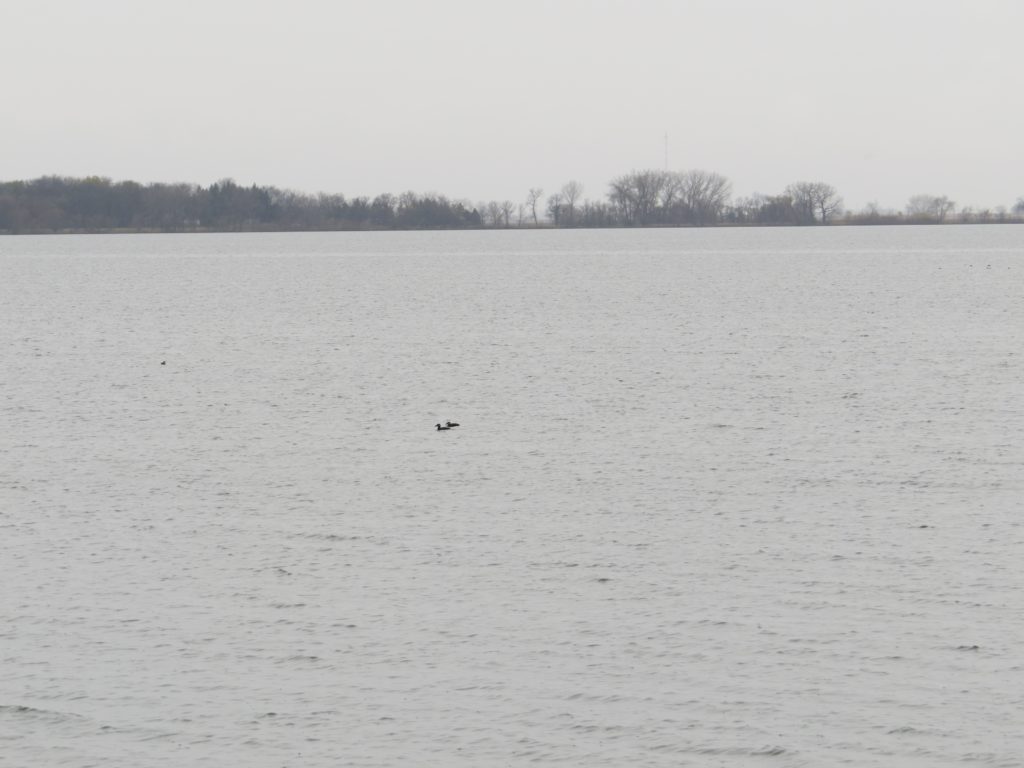
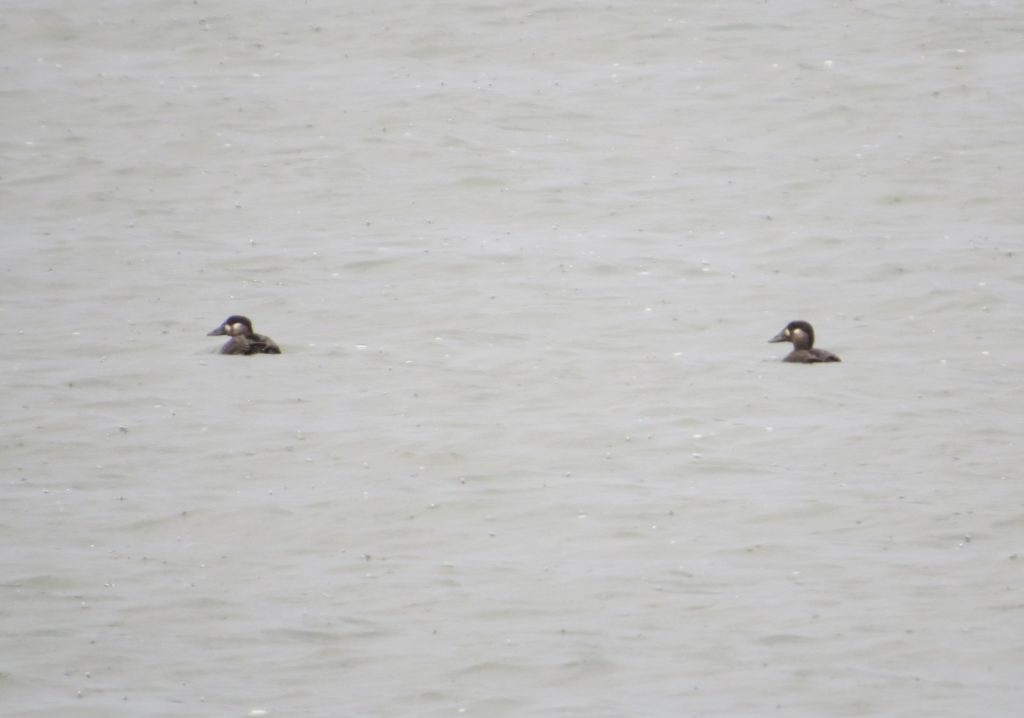
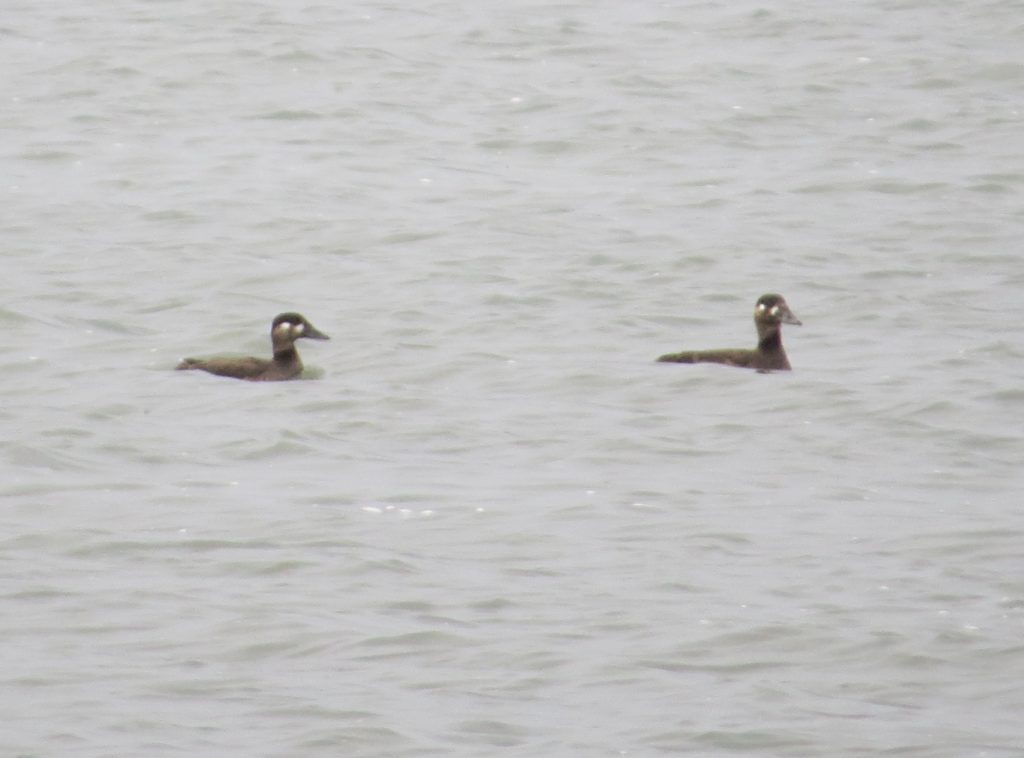
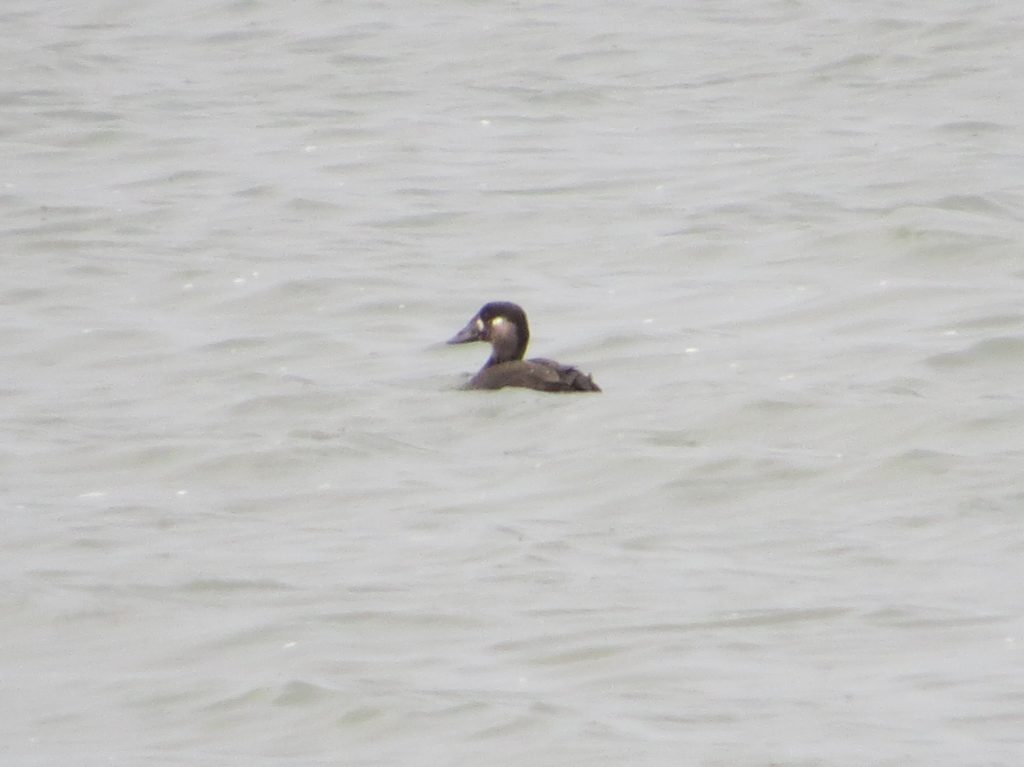 About a month later, Randy found a Surf Scoter on a different part of Lake Lillian. Whether it is one of these two is anybody’s guess, but this bird was much more cooperative hanging out just 50 feet off shore. In fact, I just saw it this morning–same exact spot.
About a month later, Randy found a Surf Scoter on a different part of Lake Lillian. Whether it is one of these two is anybody’s guess, but this bird was much more cooperative hanging out just 50 feet off shore. In fact, I just saw it this morning–same exact spot.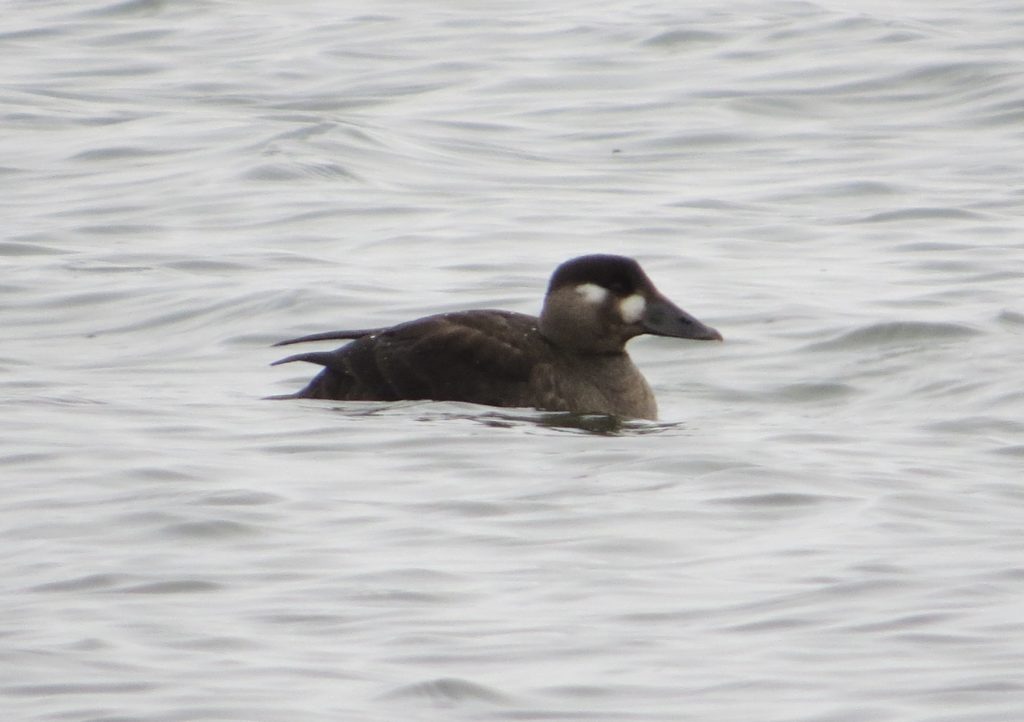
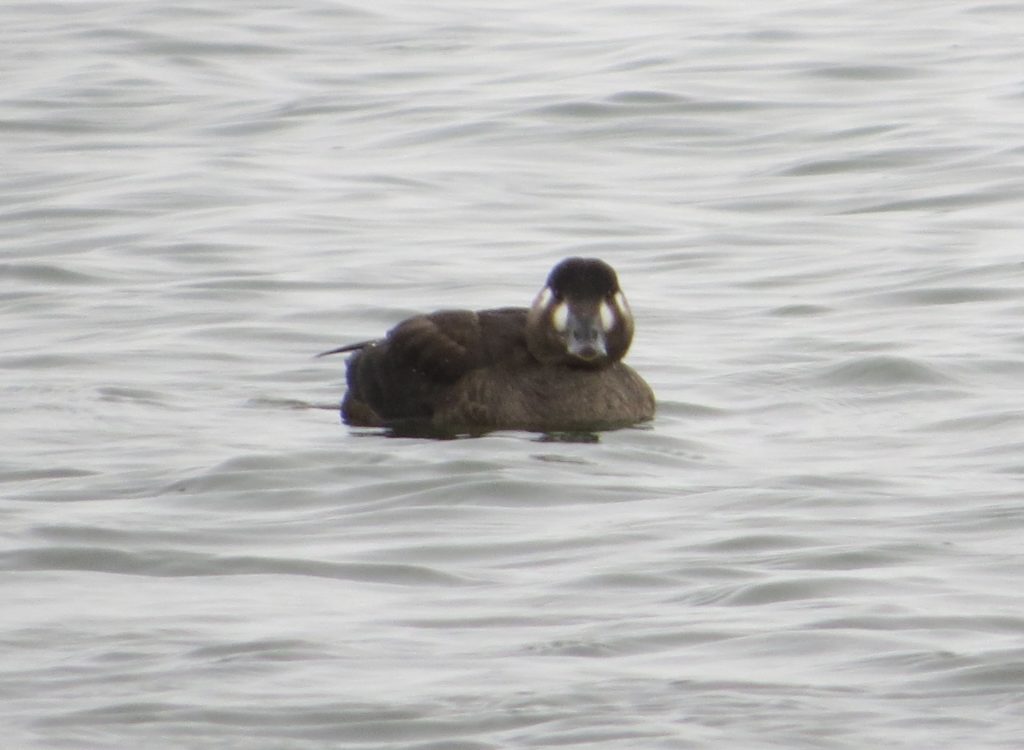 October 24th ended up being a day better than I could have imagined. Rare bird chases for things like the Red Phalarope or Brant are fun, but they are quickly forgotten. It seems the most memorable chases are the most heart-wrenching misses. While I have enjoyed and loathed many chases, nothing beats finding your own rarity. And finding a rarity when you’ve been searching for it all along beats one that is found by serendipity. But enough pontificating. Kandiyohi County has never had a Black Scoter–back to work I go.
October 24th ended up being a day better than I could have imagined. Rare bird chases for things like the Red Phalarope or Brant are fun, but they are quickly forgotten. It seems the most memorable chases are the most heart-wrenching misses. While I have enjoyed and loathed many chases, nothing beats finding your own rarity. And finding a rarity when you’ve been searching for it all along beats one that is found by serendipity. But enough pontificating. Kandiyohi County has never had a Black Scoter–back to work I go.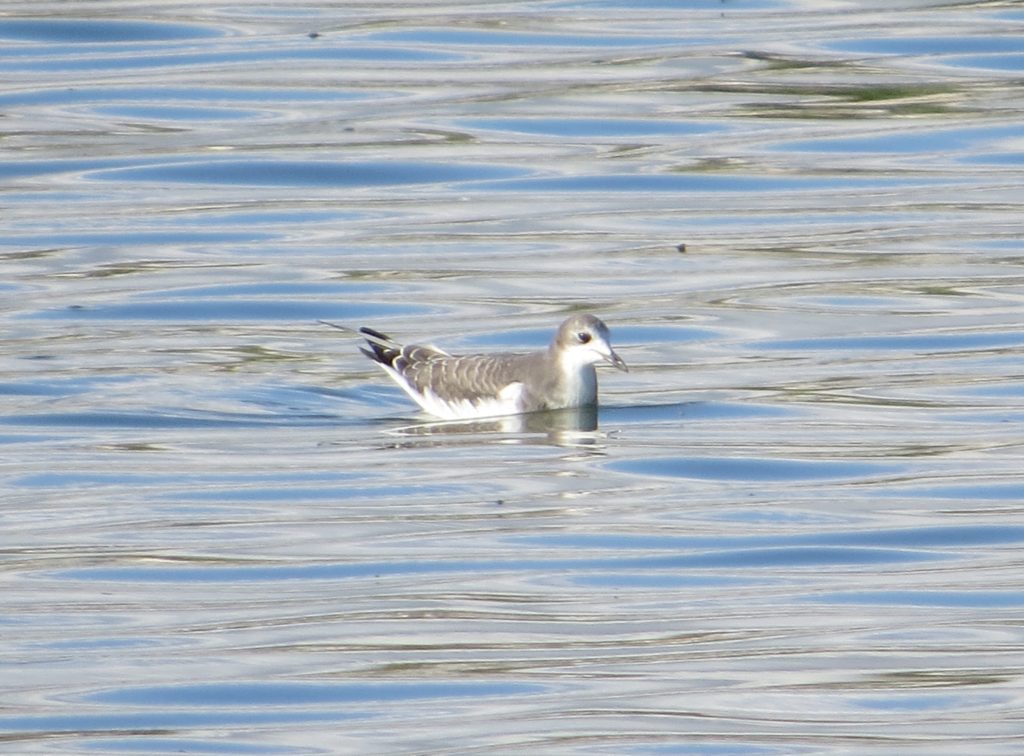
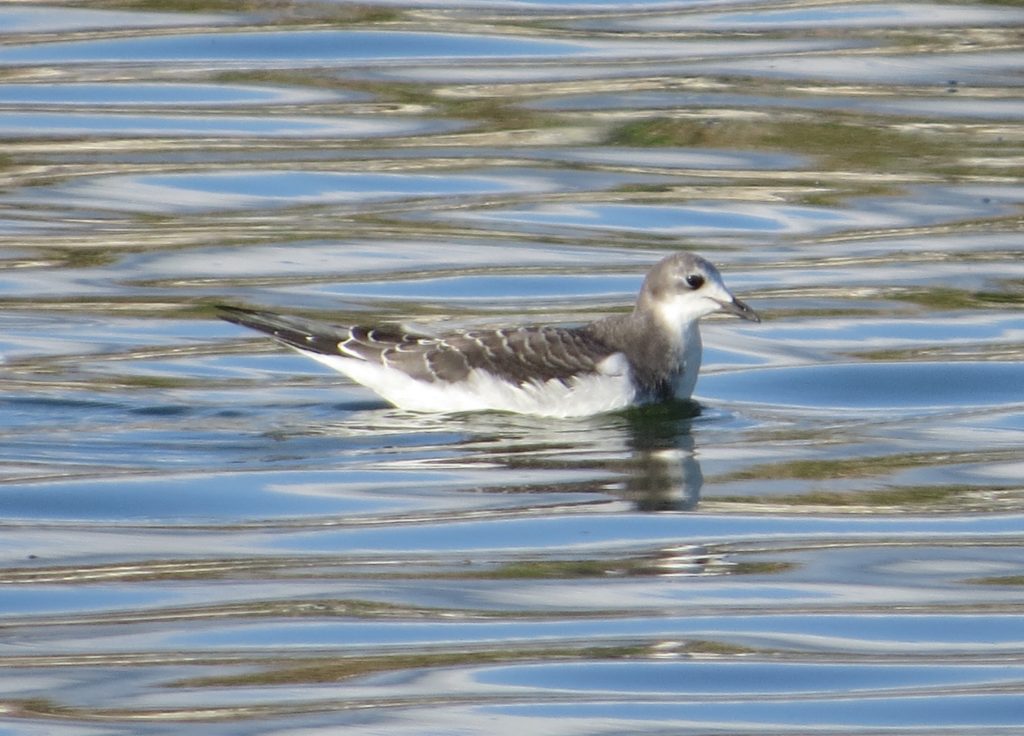 Sabine’s Gulls are a rare but expected species throughout the Minnesota during September. What wasn’t expected was a bird that turned up two weeks later in Carver County–a first state record Sharp-tailed Sandpiper, a bird from Siberia. They mostly show up in Alaska but are also seen occasionally in the lower 48 along the west coast. This find by Pete Hoeger and Bob Williams was absolutely remarkable. Consequently, Randy Frederickson and I chased this bird together after work on September 21st. The hordes were out in full force for this mega. Initially when we arrived, we and the 20 other people there couldn’t find it even though it had been spotted 10 minutes before we showed up. After a good 20 minutes filled with much internal panic everywhere, one of the birders got us on the bird. The wind, distance, and similar looking juvenile Pectoral Sandpipers made spotting and re-spotting the bird a tough task. Photography was a nightmare; I would have to settle for diagnostic photos in these conditions. But considering I never thought I would ever, ever see this bird in my life, I’m not complaining.
Sabine’s Gulls are a rare but expected species throughout the Minnesota during September. What wasn’t expected was a bird that turned up two weeks later in Carver County–a first state record Sharp-tailed Sandpiper, a bird from Siberia. They mostly show up in Alaska but are also seen occasionally in the lower 48 along the west coast. This find by Pete Hoeger and Bob Williams was absolutely remarkable. Consequently, Randy Frederickson and I chased this bird together after work on September 21st. The hordes were out in full force for this mega. Initially when we arrived, we and the 20 other people there couldn’t find it even though it had been spotted 10 minutes before we showed up. After a good 20 minutes filled with much internal panic everywhere, one of the birders got us on the bird. The wind, distance, and similar looking juvenile Pectoral Sandpipers made spotting and re-spotting the bird a tough task. Photography was a nightmare; I would have to settle for diagnostic photos in these conditions. But considering I never thought I would ever, ever see this bird in my life, I’m not complaining.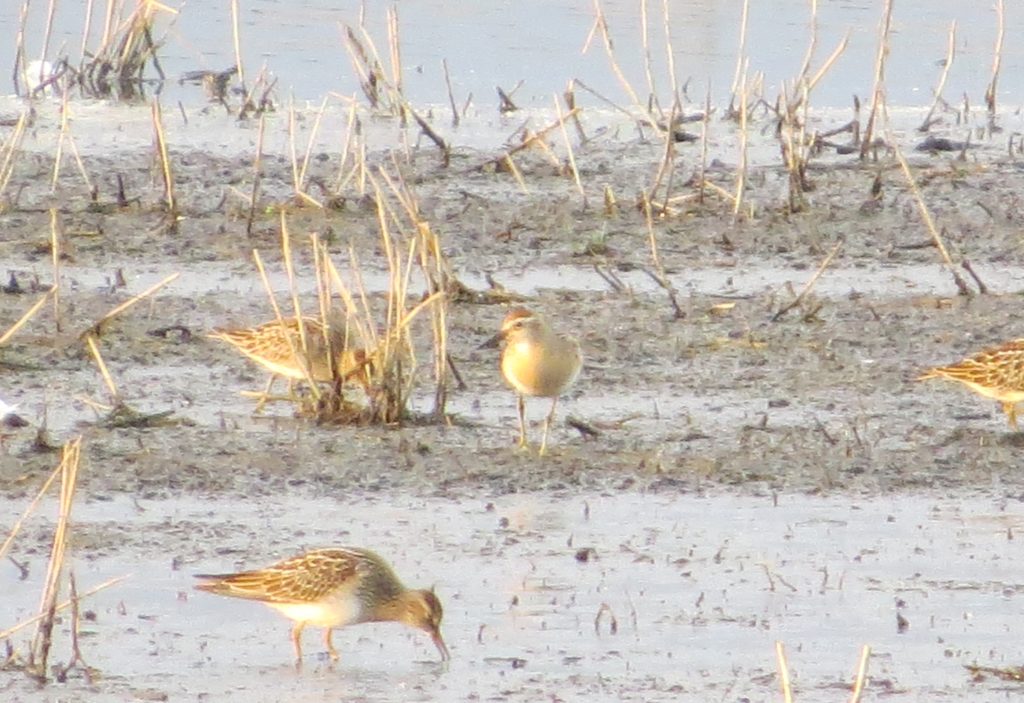
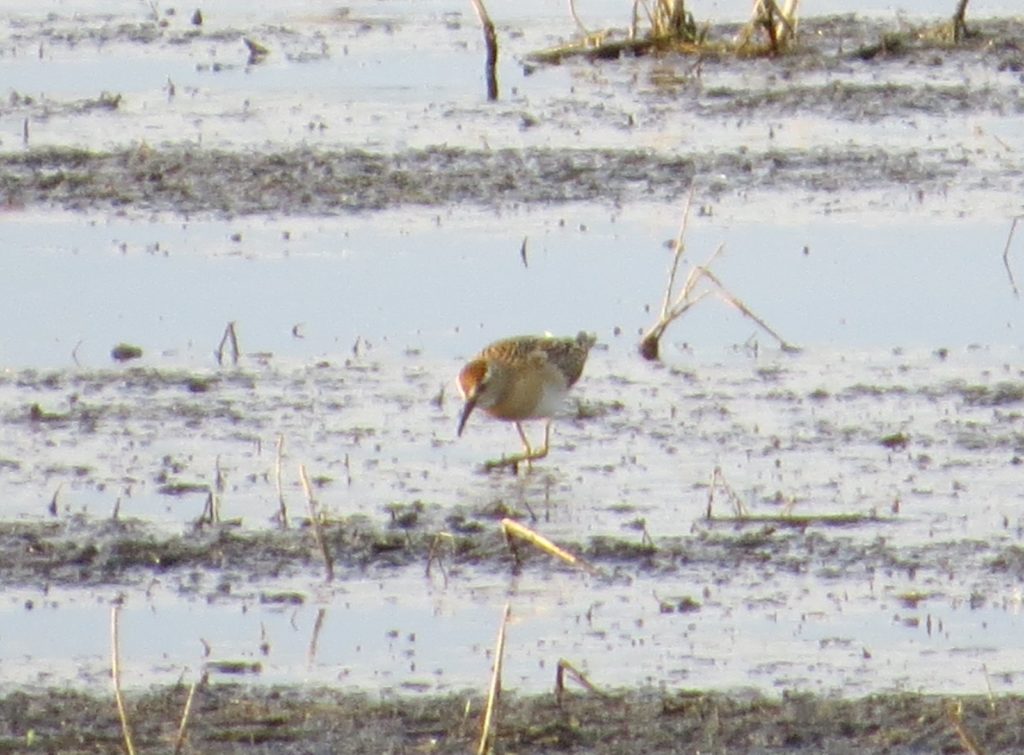 By birding standards I’ve actually been celebrating Birth Quarter instead of just Birth Month. The great birds have continued long past September. I’ve been to Arizona and back already, so there will be more stories of lifering and night-owling with the famous Tommy DeBardeleben of TOBY fame. There have also been good birds back home, including a new county record that I found. Lots of excitement coming at you on the blog in due time…
By birding standards I’ve actually been celebrating Birth Quarter instead of just Birth Month. The great birds have continued long past September. I’ve been to Arizona and back already, so there will be more stories of lifering and night-owling with the famous Tommy DeBardeleben of TOBY fame. There have also been good birds back home, including a new county record that I found. Lots of excitement coming at you on the blog in due time…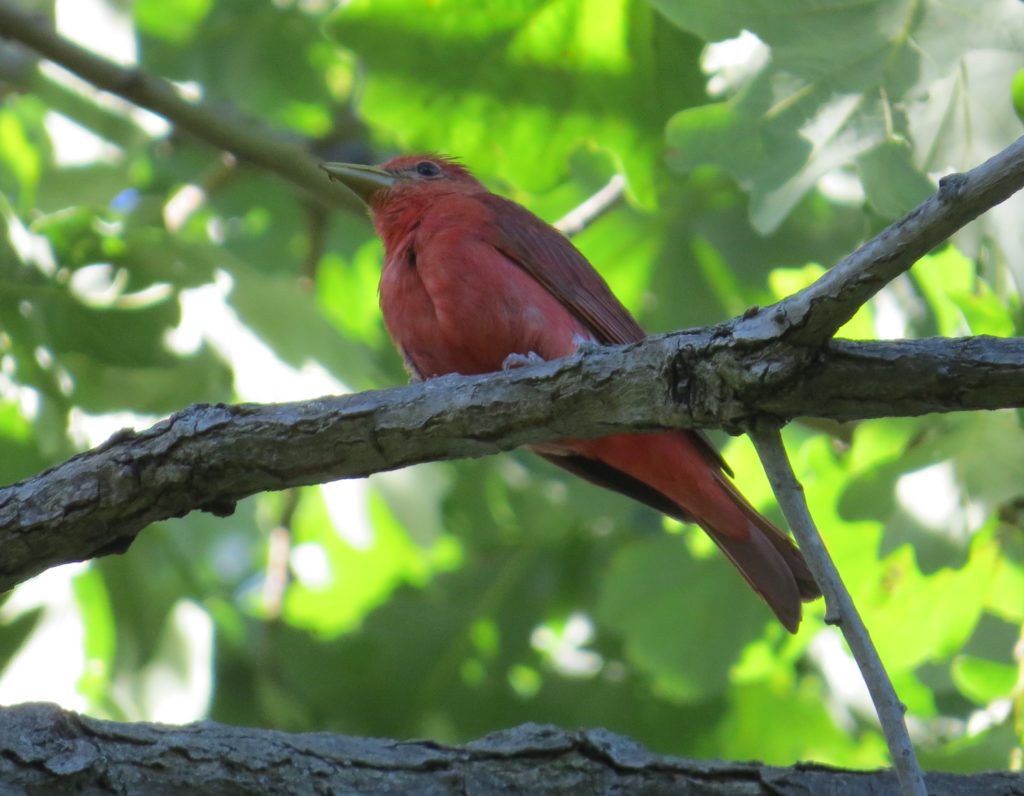 One of the most popular birds in Minnesota this summer has been the Summer Tanager discovered by Wilmer Fernandez at the University of Minnesota’s Landscape Arboretum in Chanhassen. Summer Tanager is rare-regular in the state, but the fact that this bachelor bird was in the Twin Cities and singing endlessly on territory made it all the rage for the better part of a week. Not even the Arboretum’s steep per person entry fee could keep birders away, including yours truly.
One of the most popular birds in Minnesota this summer has been the Summer Tanager discovered by Wilmer Fernandez at the University of Minnesota’s Landscape Arboretum in Chanhassen. Summer Tanager is rare-regular in the state, but the fact that this bachelor bird was in the Twin Cities and singing endlessly on territory made it all the rage for the better part of a week. Not even the Arboretum’s steep per person entry fee could keep birders away, including yours truly.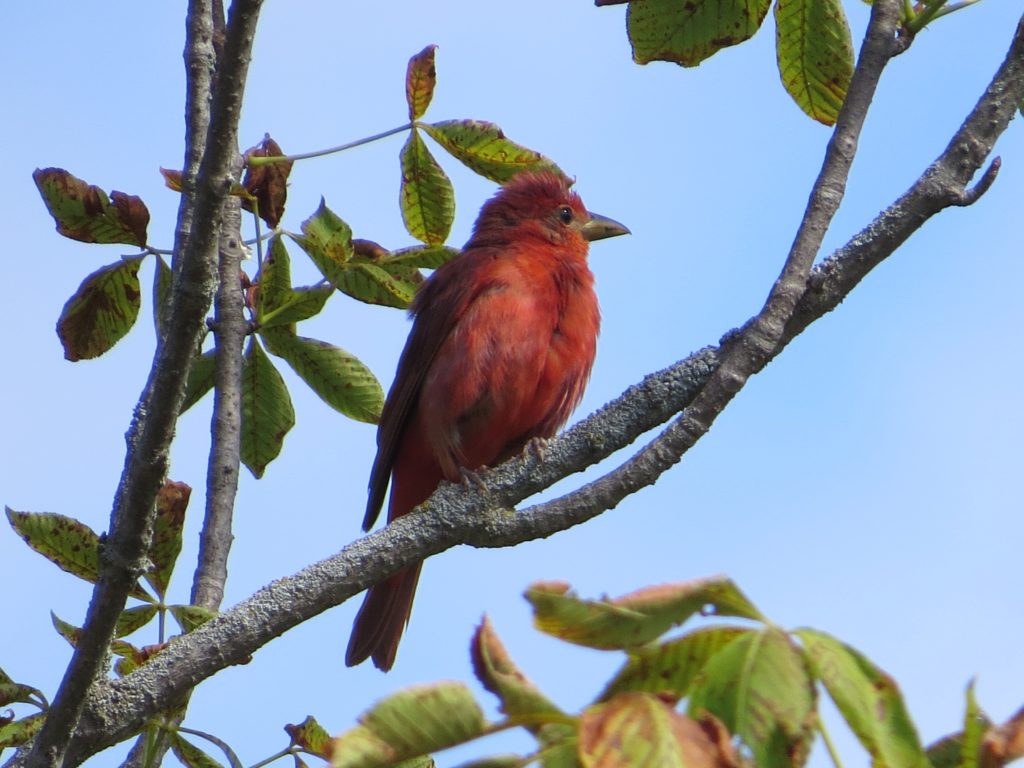 If you’ve been following ABWCH this past spring, you may recall that I already made a Summer Tanager chase to get my lifer. So why did I go after another if I’m not a county lister? Two reasons: this bird was solid red, unlike that tye-died creature I saw earlier this year, and this bird was singing on territory. I wanted the full SUTA experience. That quick migrant sighting didn’t fill the void. Plus this bird was relatively close to home, and I had the time off.
If you’ve been following ABWCH this past spring, you may recall that I already made a Summer Tanager chase to get my lifer. So why did I go after another if I’m not a county lister? Two reasons: this bird was solid red, unlike that tye-died creature I saw earlier this year, and this bird was singing on territory. I wanted the full SUTA experience. That quick migrant sighting didn’t fill the void. Plus this bird was relatively close to home, and I had the time off.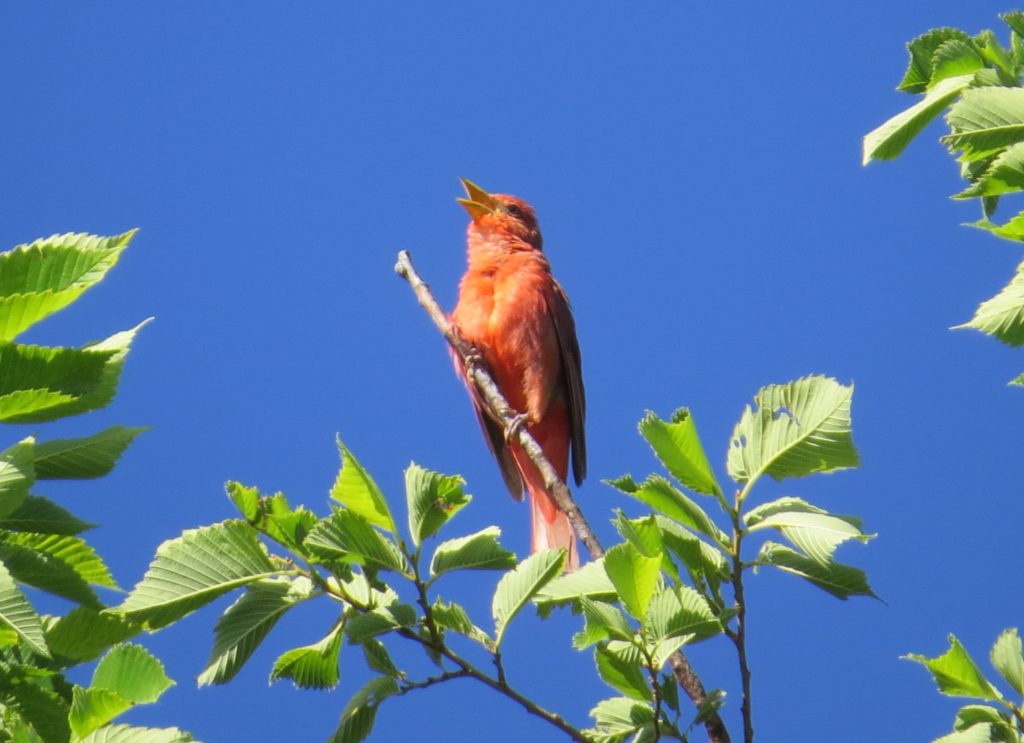 A couple of others who had the time off were teaching colleagues Brad Nelson and Theresa Nelson. The mother-son Nelson duo joined me on this little excursion. Our semi-annual birding get-togethers are always productive and fun–the last time the three of us met up was over a Snowy Owl near one of the towns in our district. Just like we had no problem getting that Owl, seeing this Tanager was a piece of cake. We could hear it singing immediately once we got out of the car at the nut trees section of the Arboretum where it apparently has set up shop for the season. We spent the better part of an hour following it around as it sang endlessly from its various perches, not even stopping its song while it feasted on insects:
A couple of others who had the time off were teaching colleagues Brad Nelson and Theresa Nelson. The mother-son Nelson duo joined me on this little excursion. Our semi-annual birding get-togethers are always productive and fun–the last time the three of us met up was over a Snowy Owl near one of the towns in our district. Just like we had no problem getting that Owl, seeing this Tanager was a piece of cake. We could hear it singing immediately once we got out of the car at the nut trees section of the Arboretum where it apparently has set up shop for the season. We spent the better part of an hour following it around as it sang endlessly from its various perches, not even stopping its song while it feasted on insects: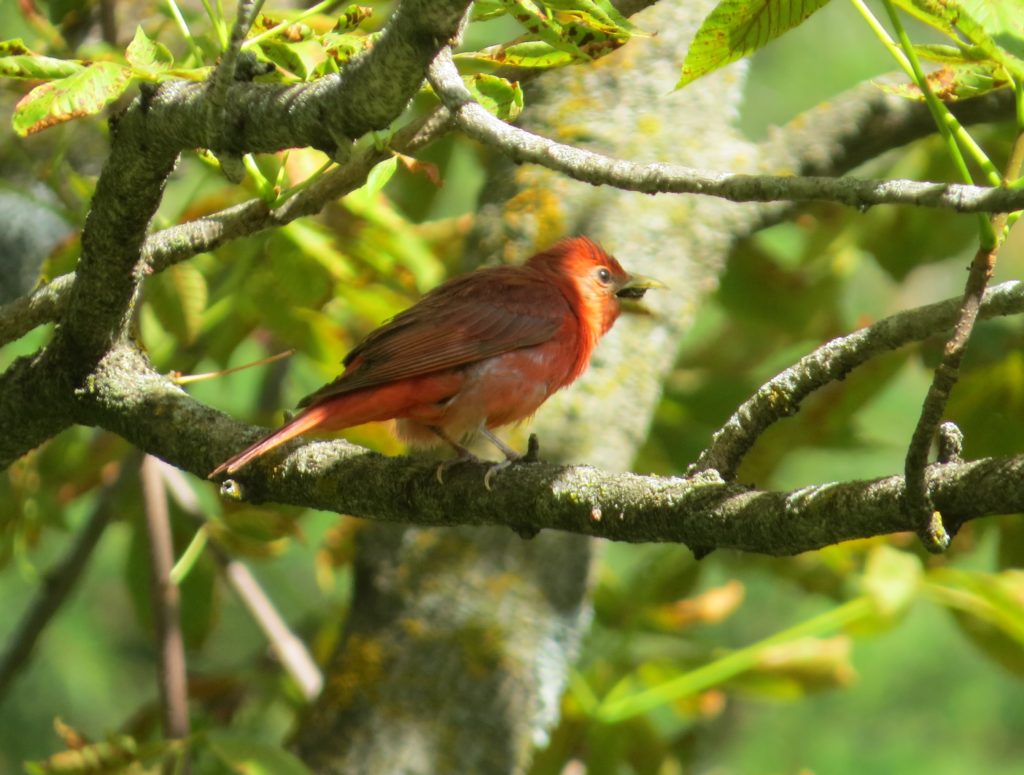
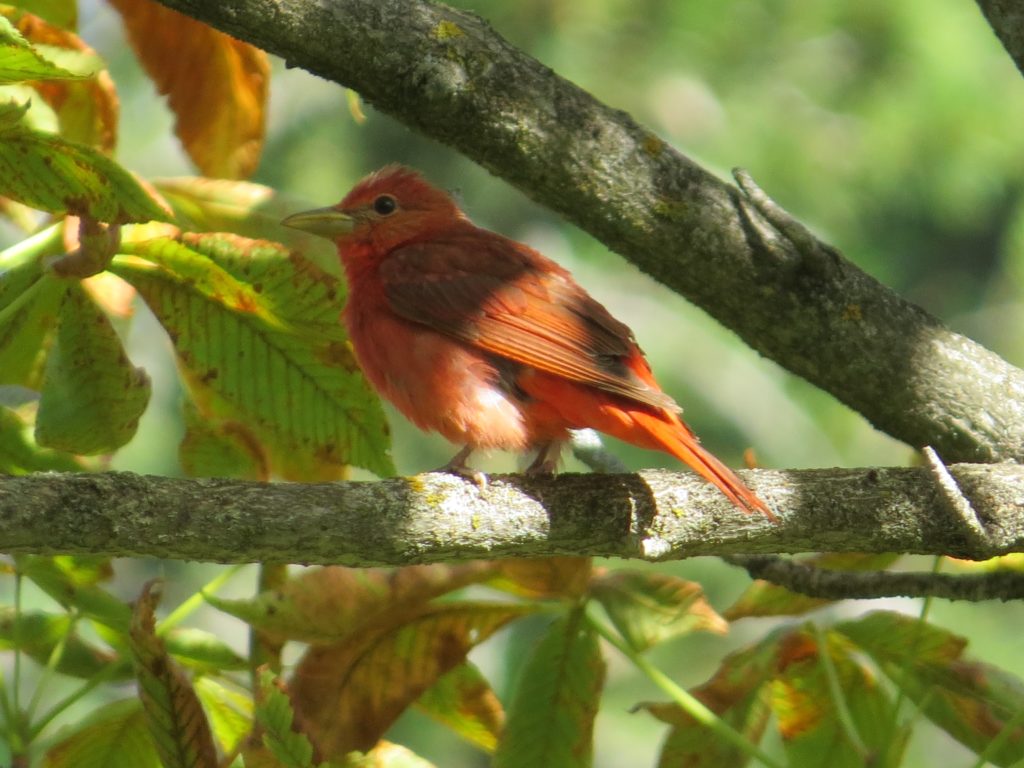 It’s been the year of the Tanager here in MN. To close out this post, here’s a pic of each of the two rare-regular Tanagers and a brand new Scarlet Tanager all seen in state this year. Sorry for turning the Scarlet into a trash bird on this blog. No, I’m not–they are still an exciting bird and this post celebrates all things Tanager.
It’s been the year of the Tanager here in MN. To close out this post, here’s a pic of each of the two rare-regular Tanagers and a brand new Scarlet Tanager all seen in state this year. Sorry for turning the Scarlet into a trash bird on this blog. No, I’m not–they are still an exciting bird and this post celebrates all things Tanager.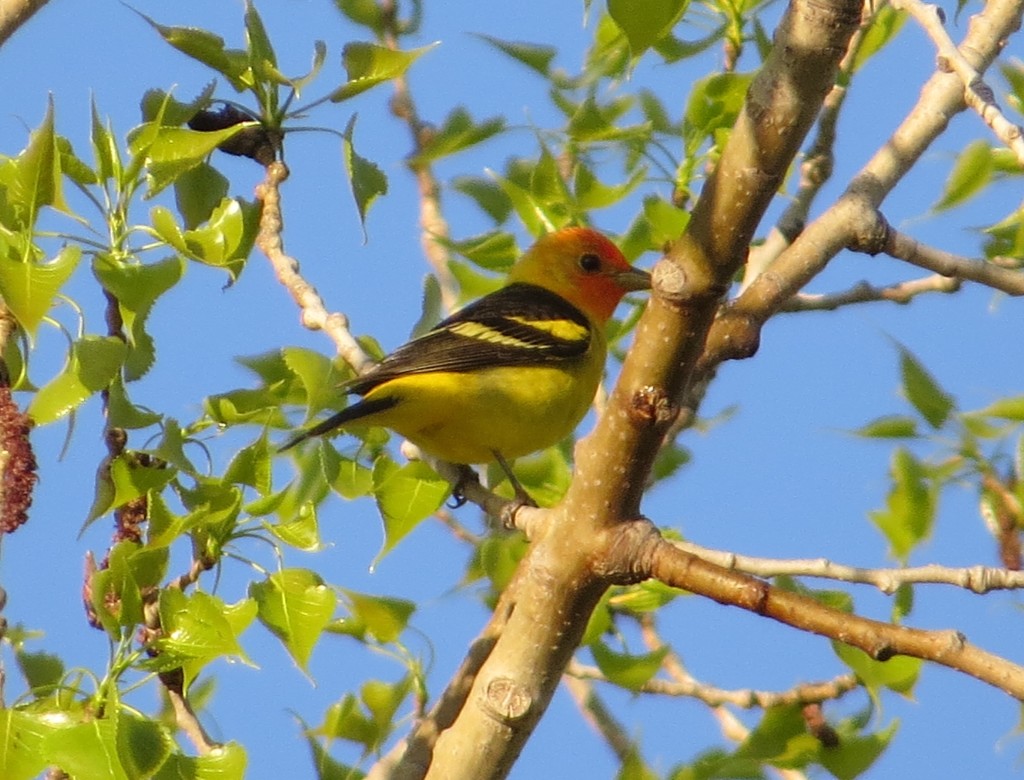
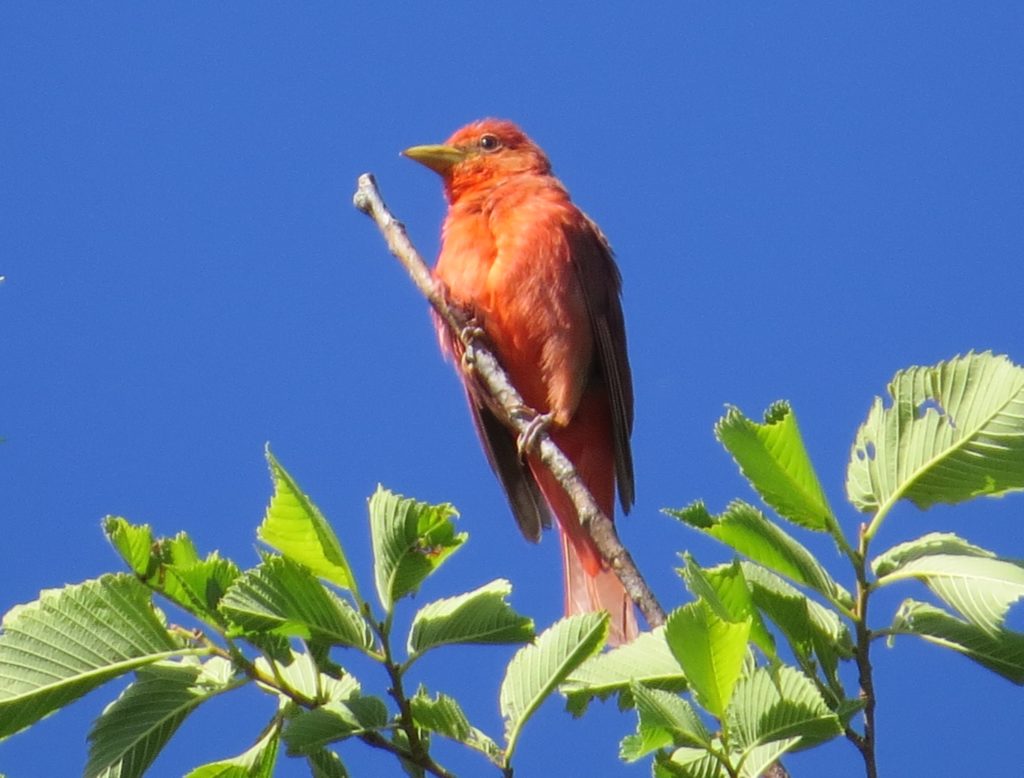
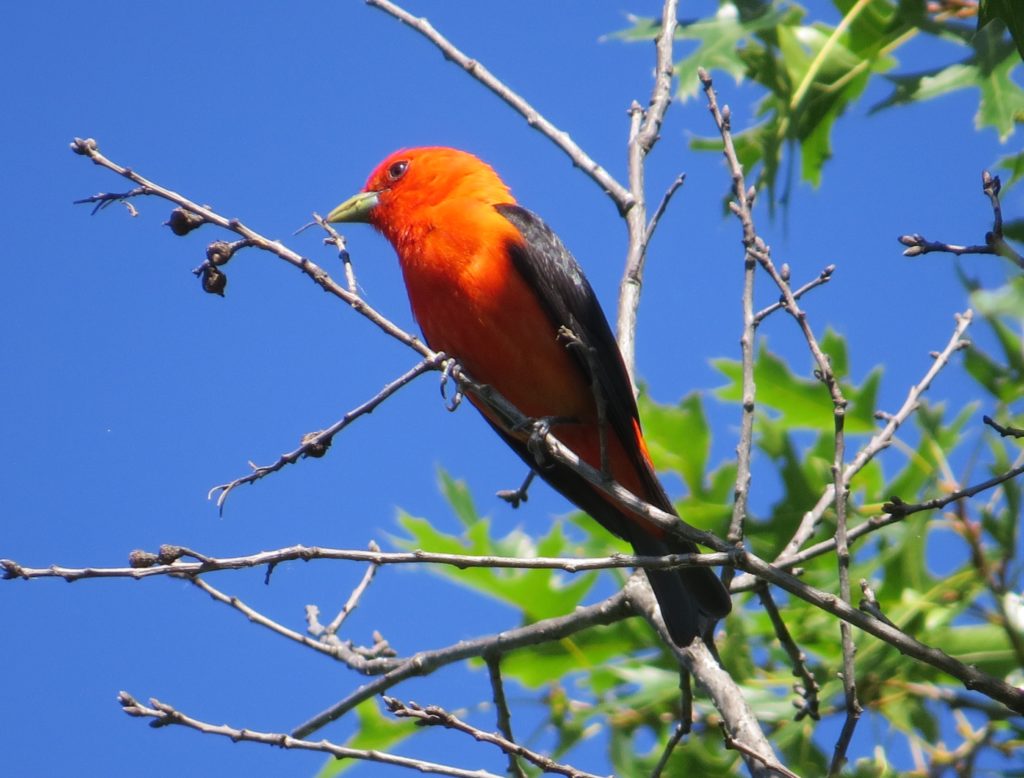
 The three of us got out of the car to enjoy this easy lifer. Then I looked back toward the vehicle and spied a second bird in a waterway that had been hidden by some trees. This one was much closer to the road and gave us some great photo ops.
The three of us got out of the car to enjoy this easy lifer. Then I looked back toward the vehicle and spied a second bird in a waterway that had been hidden by some trees. This one was much closer to the road and gave us some great photo ops.

 As we watched this Crane, something special happened. This one threw back its head and bugled for us! It was the loudest and coolest thing I’ve ever heard come out of a bird. It sounded kind of like a Trumpeter Swan, only much more impressive. Speaking of impressive, this bird stands at 52″ tall before it does this. That’s roughly the same height as Evan.
As we watched this Crane, something special happened. This one threw back its head and bugled for us! It was the loudest and coolest thing I’ve ever heard come out of a bird. It sounded kind of like a Trumpeter Swan, only much more impressive. Speaking of impressive, this bird stands at 52″ tall before it does this. That’s roughly the same height as Evan.
 The three of us really enjoyed watching these birds.
The three of us really enjoyed watching these birds. Here are Evan and Tommy each observing a different Crane. The one Tommy is looking at is visible in the photo. Evan is looking at the first one we found.
Here are Evan and Tommy each observing a different Crane. The one Tommy is looking at is visible in the photo. Evan is looking at the first one we found.
 The Whooping Crane is one massive bird:
The Whooping Crane is one massive bird: This cooperative bird eventually flew off and joined the much more distant Whooper. So the three of us decided to keep exploring Necedah. Necedah ended up being a phenomenal birding spot, so much so that I will save the rest for a different post and just focus on the Cranes from there in this post. I’ll just say that Necedah plays host to some other beautiful birds, who are also struggling in numbers.
This cooperative bird eventually flew off and joined the much more distant Whooper. So the three of us decided to keep exploring Necedah. Necedah ended up being a phenomenal birding spot, so much so that I will save the rest for a different post and just focus on the Cranes from there in this post. I’ll just say that Necedah plays host to some other beautiful birds, who are also struggling in numbers. The Visitors Center also allowed us a humorous reprieve from the serious birding with some clowning around and a photo op.
The Visitors Center also allowed us a humorous reprieve from the serious birding with some clowning around and a photo op. As I was monkeying with the settings for the self-timer on my camera, I ended up getting this gem on accident.
As I was monkeying with the settings for the self-timer on my camera, I ended up getting this gem on accident.

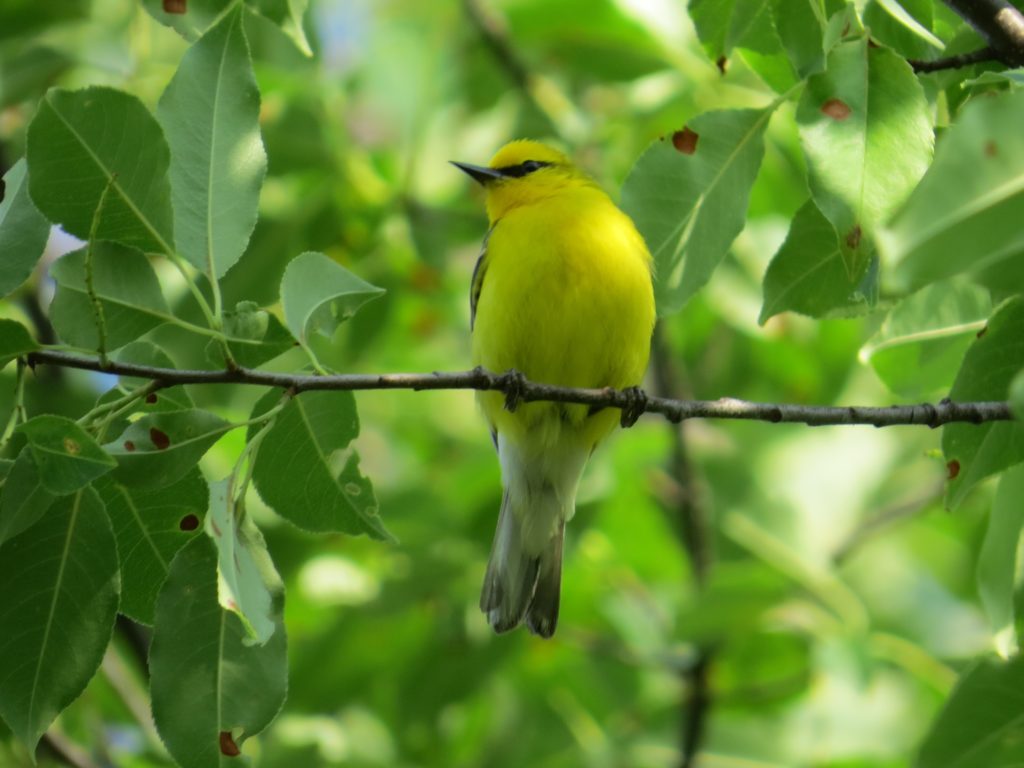
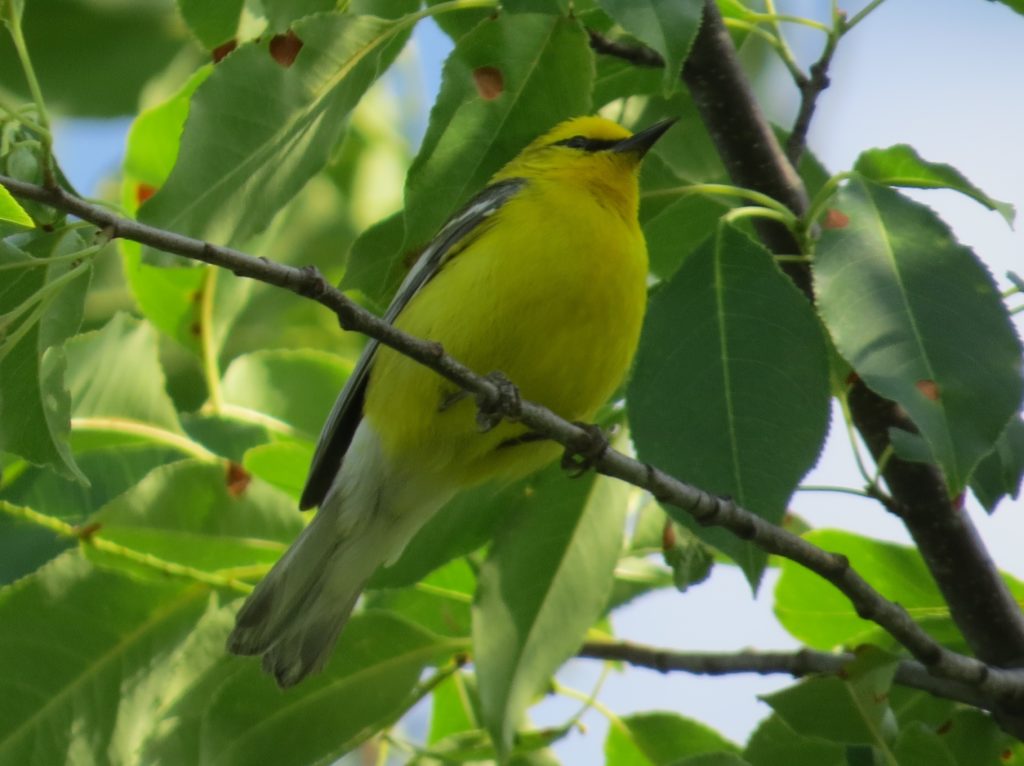 We were after one of the most coveted and beautiful Warblers there is–the Cerulean Warbler. This is one of my all-time favorite birds. This individual was only the fourth one I’ve ever seen; it’s one of those birds that makes you feel like you are lifering all over again when you see it, it’s that cool. This bird is so rare, beautiful, and cooperative–no apologies on this photo dump.
We were after one of the most coveted and beautiful Warblers there is–the Cerulean Warbler. This is one of my all-time favorite birds. This individual was only the fourth one I’ve ever seen; it’s one of those birds that makes you feel like you are lifering all over again when you see it, it’s that cool. This bird is so rare, beautiful, and cooperative–no apologies on this photo dump.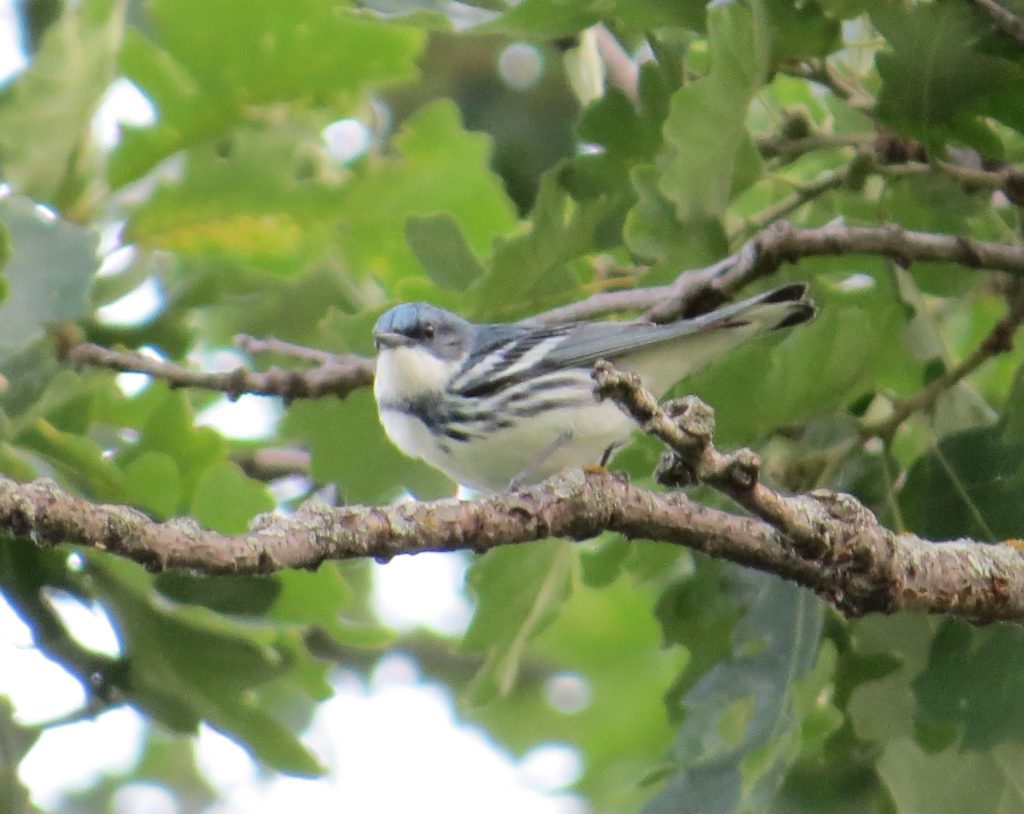
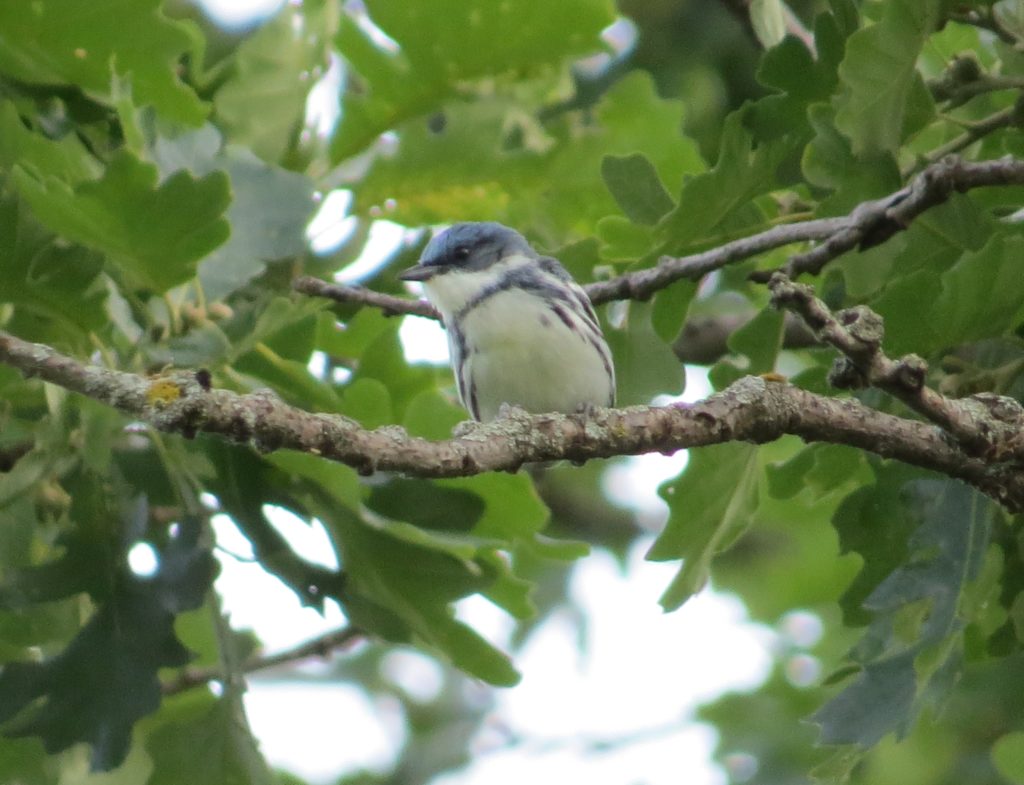
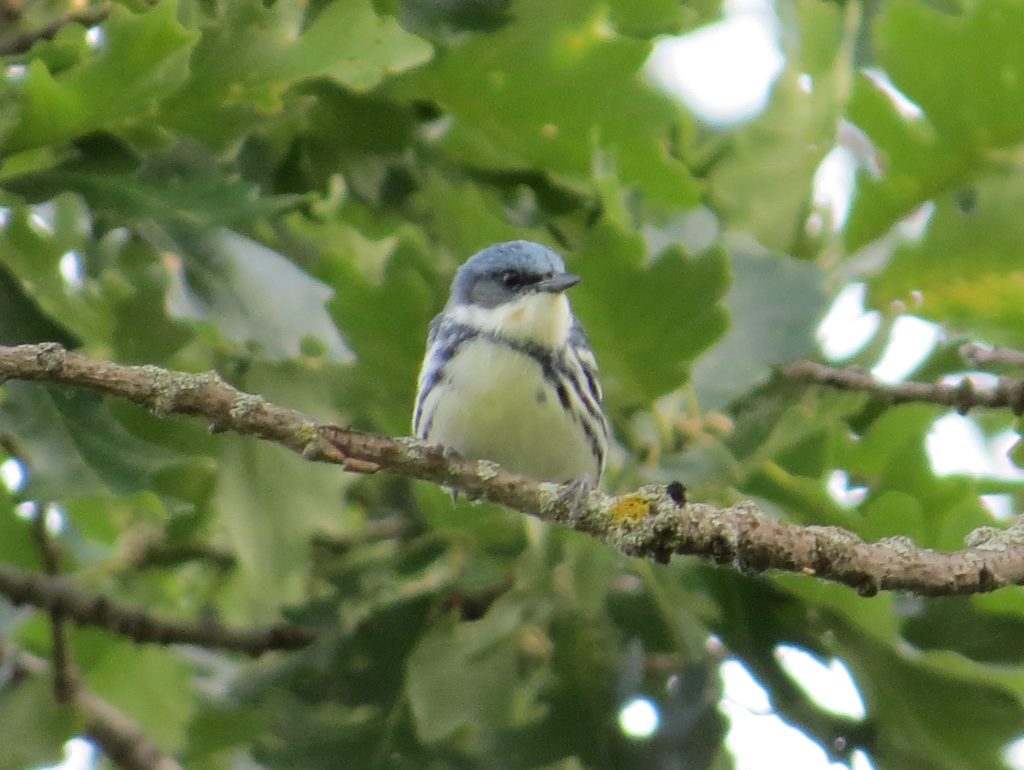
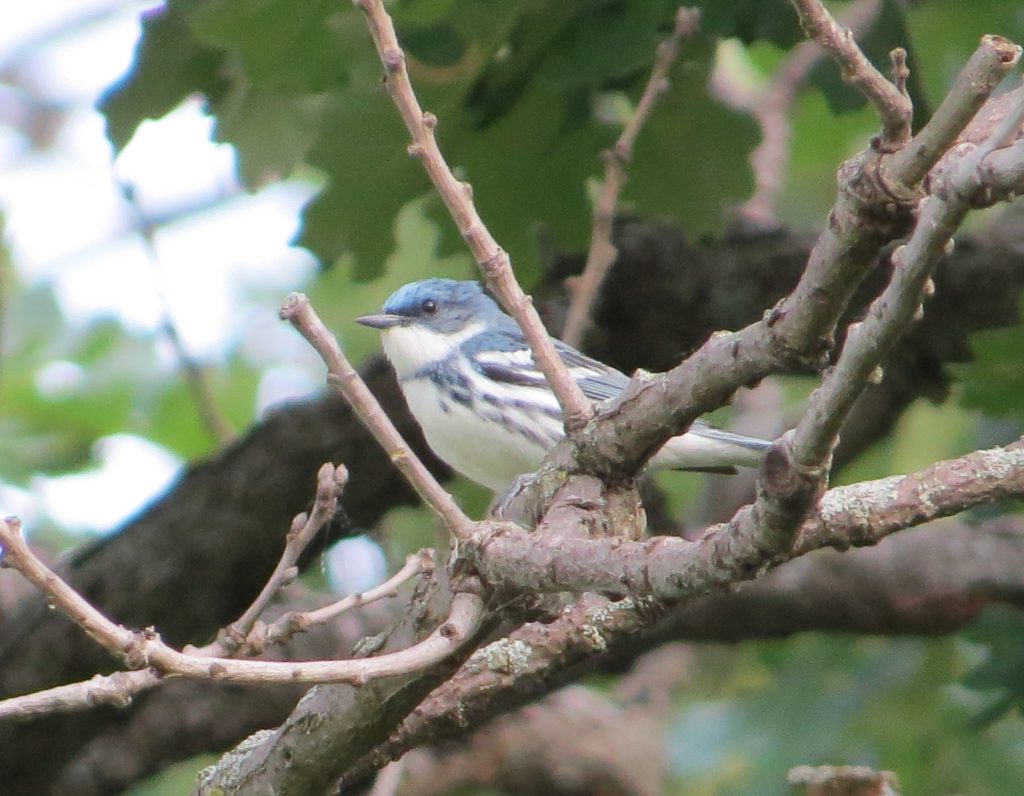
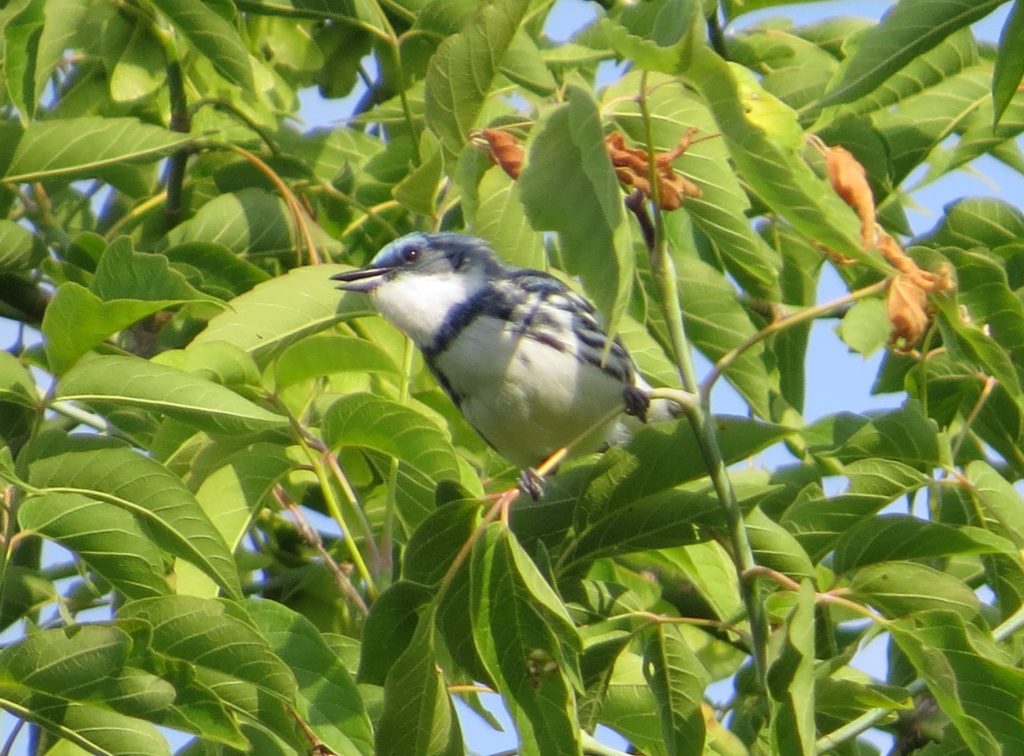 The Cerulean Warbler is in trouble because of habitat loss in its summer home in North America and its winter home in South America. It prefers mature deciduous woods that offer a relatively open understory. Much of their historical breeding grounds in the U.S. have been lost to farms, cities, and suburbs. On their wintering grounds, much of the tropical forest has been converted to farms. While Ceruleans will use shade-grown coffee plantations, they will not use the more popular and efficient sun-grown coffee plantations. Seeing one of these birds is always a reminder of how fragile a species can be and how easily we can wipe a species off the map. It’s also a personal reminder that I really should be drinking bird-friendly, shade-grown coffee–it’s the least I can do. Seeing or even hearing a Cerulean is always a special treat. Seeing one well like this and watching a friend lifer on it is even better. And observing a Cerulean Warbler perched against a cerulean sky? Priceless.
The Cerulean Warbler is in trouble because of habitat loss in its summer home in North America and its winter home in South America. It prefers mature deciduous woods that offer a relatively open understory. Much of their historical breeding grounds in the U.S. have been lost to farms, cities, and suburbs. On their wintering grounds, much of the tropical forest has been converted to farms. While Ceruleans will use shade-grown coffee plantations, they will not use the more popular and efficient sun-grown coffee plantations. Seeing one of these birds is always a reminder of how fragile a species can be and how easily we can wipe a species off the map. It’s also a personal reminder that I really should be drinking bird-friendly, shade-grown coffee–it’s the least I can do. Seeing or even hearing a Cerulean is always a special treat. Seeing one well like this and watching a friend lifer on it is even better. And observing a Cerulean Warbler perched against a cerulean sky? Priceless.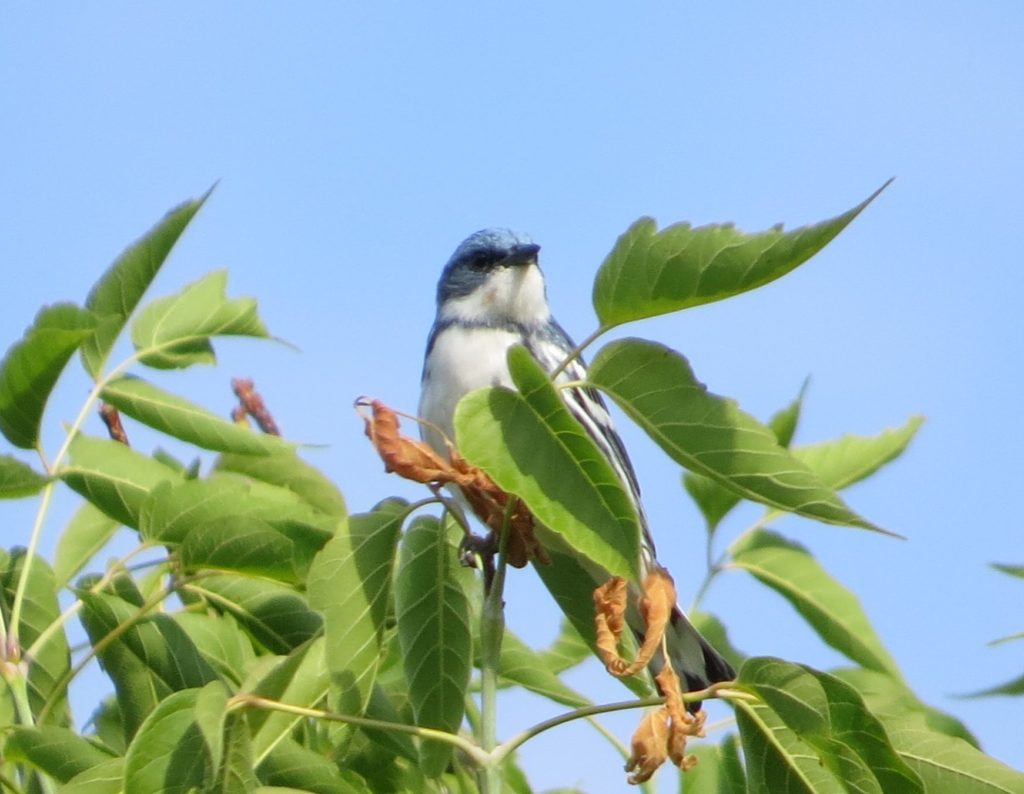
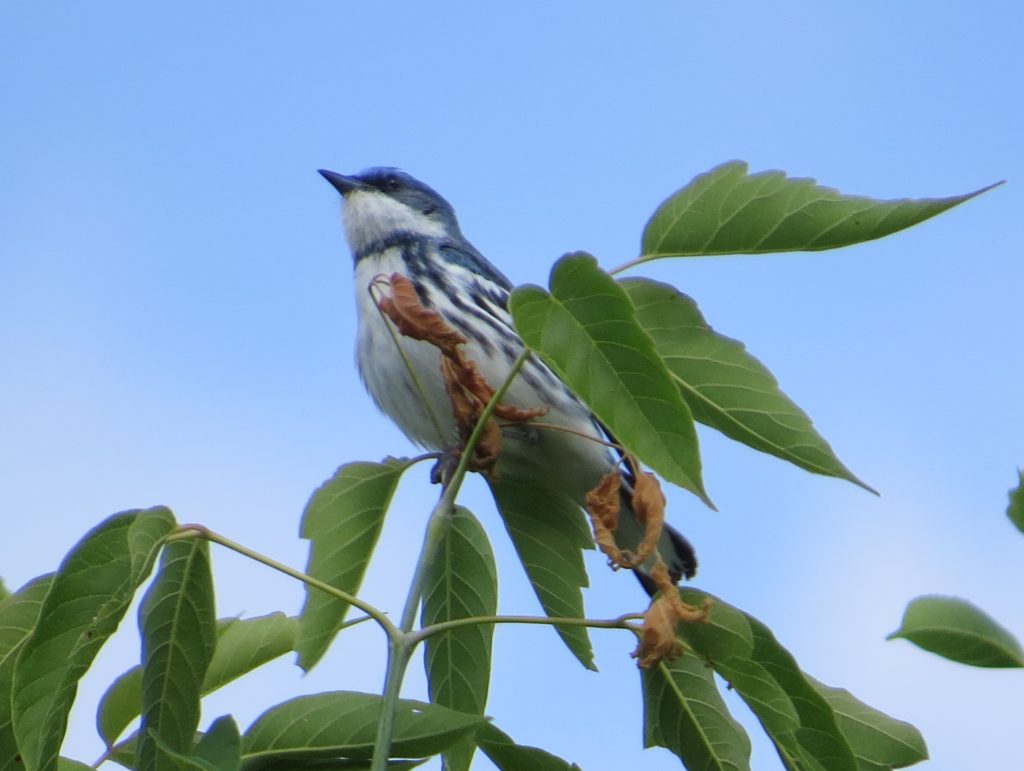 Coming up: a hefty, quick trip to Wisconsin for some unrivaled birds, CEWA notwithstanding.
Coming up: a hefty, quick trip to Wisconsin for some unrivaled birds, CEWA notwithstanding.